

Tanzania Safari Tips For Travellers. 11 Things To Know And Prepare For!
by Gary Bembridge · July 6, 2017
My Tips for a Safari In Tanzania: Things To Know And Prepare For
Heading to Tanzania on safari is one of my favourite all-time travel experiences. I had been on safaris in South Africa and Zimbabwe but this was even more magical, enthralling and I saw more animals than I had imagined I would. It exceeded all expectations on so many levels when I travelled there I travelled with Titan Travel on a 9-night “Wild Plains of Tanzania ” trip. In this article I share 11 tips and advice on how to prepare for and get the most of a safari to Tanzania based on my experience.

#1: Best Time To Go
While much of the year is suitable there are some key times you should plan to go to get the best experience, and see animals easier. Experts recommend visiting in the dry season, which runs from June to October. During this time the animals are easier to find and see as they have to concentrate around waterholes and rivers, and there is less vegetation for them to hide in. There are fewer mosquitoes at this time of the year, because there is almost no rain. Skies are clear and most days are sunny.
It gets very busy in June and July, when the huge mass migration activity peaks in the Serengeti. However, with millions of animals on the move many travellers still want to still go there to experience it. But availability will be tighter and prices higher.
I travelled in late May into early June, and we had overall good weather and incredible sightings of animals – including the “Big Five”.

#2: Choose right Safari Tour Company
There are many operators and options available to do a safari in Tanzania with. To get the most I recommend you first draw up a list of your key requirements. So mine included (1) hitting the famous parks, (2) ensuring the greatest chance of seeing the “Big Five”, (3) staying in fairly luxurious lodges, (4) travelling with an expert local guide, (5) in as small a group as possible, (6) with fellow travellers of my age range and finally of course (6) within a reasonable budget.
I travelled with Titan Travel on their 9-night “ Wild Plains of Tanzania ” safari. We flew on KLM to Kilimanjaro Airport via Amsterdam Schiphol in a small tour group of just 9 people. We were split across two 4×4 trucks, with five people in one and four in another. The maximum each could have held was six. The tour was hosted by a local tour leader and two drivers and took in the must-see parks of Tarangire National Park, Ngorongoro Conservation Area and Crater, Serengeti National Park and Lake Manyara National Park. This ensured we saw the “Big Five” (Elephant, Lion, Leopard, Buffalo and Rhino) along with tens of thousands of other animals including zebra, wildebeest, giraffe, cheetah and ostrich. We stayed in luxurious lodges and everyone was in my age group or older.
When planning your trip you should know there are three international airports:
- Dar es Salaam is used by most international airlines, and is more convenient for business travellers or those exploring the southern safari circuit.
- Kilimanjaro International Airport (KIA), which is close to Arusha and is the handiest for safaris to the Serengeti, Ngorongoro, Tarangire and Lake Manyara parks.
- Some international flights land at Zanzibar .

You probably will need one. These can be obtained in advance in your home country or at the airport on arrival. The line of people buying their visa on arrival can be long and so I recommend getting one before you travel.
To check if you will need a visa visit your local Tanzanian Embassy site or check using the Travvisa.com site at
https://www.travisa.com/Visa_Search There are some key requirements when applying for a Tanzanian visa:
- Passport must have at least three consecutive blank visa pages.
- Be valid for six months beyond entry date.
- Two (2) passport size photos taken on a white background within the last six months.
If travelling from the UK, like I was, I had the option of getting a visa from the embassy in London ( http://tanzaniahighcomm.co.uk ) in person or by post, or by using a service like CIBT Visas http://www.cibtvisas.co.uk/ . I went into the embassy and got mine the same day within just a few hours.

#4: Malaria tablets and any inoculations.
Tanzania is a malaria area and you need to take anti-malaria medication. You must arrange this before you travel, as you need to start taking them before you arrive.
The medication requires a prescription in most countries. This can often be obtained from a Travel Clinic run by some large Travel Agents or Pharmacy Chains, so you may not need to visit your doctor. However, if you are on other medication you should check with them on any potential interactions as the type of pills prescribed need to take this into account.
Travelling out of the UK I was able to use an online review and prescription service offered by Boots Travel, who then delivered the pills to my home.
You may also need some other inoculations based on where you are travelling from or have been recently. For example, Tanzania requires proof of yellow fever vaccination upon arrival if you are travelling from yellow fever endemic countries/regions.
Some sites to check on the recommended inoculations and requirements that I found helpful in planning were:
- NaTHNaC (National Travel Health Network and Centre): http://nathnac.net
- NHS FitForTravel website: http://www.fitfortravel.nhs.uk

#5: Travel Insurance
It is essential to take out comprehensive travel insurance, especially for medical issues. Many of the tour operators will insist on this when taking your booking. Your policy should include coverage for air evacuation to a hospital and back home if required. If you are injured, or have a serious medical incident, you will need to be evacuated from the park or lodge to a main centre, or even out to a neighbouring country like Kenya, mostly likely by plane.
A relatively inexpensive option, if your policy does not cover evacuation, is to take out an evacuation policy with Flying Doctors. They provide air evacuation by bush plane out of the wilds of Tanzania to Nairobi, Kenya. More details at http://flydoc.org
#6: Luggage requirements
Take the smallest possible case you can. Think small and then go even smaller! It is also essential it is a soft case, so ideally a duffel / holdall / carryall.
If you are flying between lodges there will be strict limits on the size and shape of your luggage to ensure it fits in the small planes. The airline may also specify that the bags cannot have wheels on them either. So double check your travel documents carefully. If you are returning to the same airport at the start and end of your safari many of the providers will let you store excess bags or clothes in a lock up, but it is best to stick to the limitations.
If you are on land trip only there is also very limited space for bags in the back of the 4×4 trucks that you will be travelling in. You should have a small and soft bag for this as well, or they will struggle to fit them all in. It is easier to carry to and from the different rooms in the varied lodges you are likely to be staying in as you travel between different parks too. I travelled with a bag double the size of the more experienced safari travellers and regretted it. Luckily they could fit it in as everyone else was travelling light. It is a mistake I will not make again!

#7: Packing Essentials
Following on from the need to have a small bag, you need to be ruthless when packing -and you must pack light!
In addition to taking a camera (of course!), here are my recommendations on what to take:
- Take as few clothes as possible. You will not have to dress up in the evenings. Everyone will be casual. The clothes should be as breathable as possible, so cotton is good, and ideally quick drying if you do need to rinse them out.
- It will be dusty on safari and you want to blend in. So have neutral colours (green, tan and brown) and I recommend bringing one change of shirt for every day and have one or two long-sleeved shirts that you use for the evening (these protect you better from mosquitos which tend to come out at this time).
- Shorts and a T-shirt are fine for safari. You should though have at least one pair of long trousers for the evening to protect against mosquitos.
- Bring layers, like a sweatshirt or jacket, as it can get chilly early morning or evenings on game drives.
- Bring a waterproof jacket. I brought one that could be crumpled up and took up very little room. It also provided an extra layer when it was chilly.
- Although many lodges have same day laundry service as you are likely moving about assume you will not use it, so bring a change of underwear for every day.
- Bring a pair of good walking shoes / boots and one pair of more casual shoes, such as flip-flops or sandals for evenings in the lodge.
- Bring swimwear as most lodges will have a pool and a refreshing swim after a day out on safari can be very welcome in the hot season.
- Do not bring camouflage pattern clothes.
- Anti-mosquito
- Personal First Aid Kit with a supply of your favourite medications like headache pills, anti-diarrheal, plasters and a tooth repair kit (for quick fixes as a dentist will be hard to find!)
- Binoculars are a nice plus!
- Torch as the area is prone to power cuts. Though if you have a SmartPhone this will be able to double as a torch.
- Alarm clock or phone (to wake up for morning drives!).
- The sockets take UK style three-pin plugs, so bring an adaptor if you not from UK. It is best to use a travel adapter with a ‘surge protector’ to protect your equipment, although I found most of the lodges had extension cords with multiple plug sockets that were surge protected.
Things to leave behind:
- Your laptop! It is extra weight, could get damaged in small bags and with the bumping around on dirt roads. The Wi-Fi in the lodges and parks is erratic and in some there is none. You will also have limited time to use it. Your SmartPhone or Tablet is probably enough if you have one.

#8: Currency and money
The best currency to take is US Dollars. They are accepted virtually everywhere and save having unwanted local currency at the end of the trip. You should bring small bills and they need to be in good condition and as new as possible. Locals and stores will not take torn or notes in poor condition.
Tipping is quite common and expected. So plan to tip the lodge staff if they help you with your bags. The guide should be tipped up to US $ 20 to US $ 30 per group per day. I gave the driver and guide $50 each for the 9 days I was with them.

#9: Photography: If want to take pictures come prepared
Before getting into the technical side, there are three key things you need to know and be aware of:
- Always ask locals before taking their pictures, especially the Maasai. Many will expect some tip if you take their photo, and could even be quite aggressive if you take it without approval or paying.
- Many parks in parts of Africa are starting to ban the use of SmartPhones and Tablets for picture taking. This is because the pictures have GPS location data imbedded and if posted live, or close to live, on social media can provide poachers with valuable information. Check before you go if Tanzania has introduced any limits. At the time of writing this guide they did not have any restrictions.
- Do not bring a drone unless you have a permit before coming. They were not allowed in the parks when I travelled as the authorities are considering, and studying, the impact on animals and there is a real concern that poachers may use them, hence the blanket ban.
To take great pictures of animals on safari you really need a camera with a good zoom lens. This needs to be at least 300mm. This is what I used to take my photographs. You can view them at https://tipsfortravellers.smugmug.com/Tanzania/
Some tips I have for your photography are:
- Get close through using a zoom lens or crop pictures afterwards using editing software. The former is better to ensure good quality.
- If you have a DSLR, consider hiring a zoom lens rather than buying one, as they can be pricey to purchase. There are sites in the UK like http://www.lensesforhire.co.uk/ and in USA like https://www.lensrentals.com and https://www.borrowlenses.com
- Focus on the eyes when taking pictures. Take multiple shots and try and get one with the animal looking directly into the lens.
- Take lots of charged batteries. You may not be always be able to charge properly in lodges or camps so whenever you can charge them up.
- Take lots of SD cards.
- Bring a beanbag to rest your lens on. The zoom lens can be heavy and shooting animals at distance can lead to camera shake and out of focus pictures. The beanbag can be quickly thrown on the side of the truck and is very versatile. Do not bring tripods, as there will be no room to store them.
- Switch off the flash.
- Don’t spend all time behind a lens! Make sure you enjoy seeing the animals live and not just through a lens.

#10: Staying connected
You should let your friends and family know that you will be out of contact for much of the time you are way. The mobile signal will be patchy or non-existent and roaming charges are very high (around $3 or £2 a minute to receive and make calls to and from Tanzania). I did take one of those roaming devices with me but this proved largely useless as they rely on the mobile phone signal. So I do not recommend these.
I did have some success occasionally using FaceTime audio across the Wi-Fi in some lodges, but it was inconsistent and erratic.
You should let your family and friends have your itinerary and the landline numbers of the lodges you will be staying at as well as the safari operator numbers. They can then use these if there is any emergency and need to contact you.

#11: Know what to expect and be prepared
Although it is very rewarding and you will see a lot in Tanzania, going on a safari there can be tiring. To make the most of the potential to view animals the days are long with lots of time in the truck out sightseeing or moving between parks and lodges. There will also be a number of early starts. On average we spent about six hours a day in the van. It can be tiring and so naps in between and early to bed is recommend.
Unlike safari vans in places like South Africa, the vans will not be open. The roof will be raised up so you can stand up to view and take pictures of the animals.
Here are some things to expect and be ready for:
- Expect crowds and a number of vans when you spot animals, especially the harder to find beasts like lions, leopards and cheetah. The parks request no more than five vans when animals are spotted but not all stick to this.
- English is widely spoken but a few words of Swahili will always be appreciated.
- Only drink bottled water, including for brushing teeth. This will be provided in your room.
- In many lodges after sunset you will be escorted to and from your room for dinner in the main lodge building, to avoid any unpleasant or unexpected encounters with animals.
- Most meals will be buffet style.
- When heading out on a game drive in addition to wearing neutral coloured clothing, avoid strongly scented deodorant and perfumes.
- Take along tissues and a plastic bag in case you are “caught short” and your guide cannot take you to toilet facilities in the park and you have to go behind the van to “check the tyres” (the polite expression for having to do your business!)

Final Thought
I loved my safari in Tanzania. The people were welcoming and friendly, the wildlife abundant and impressive and the lodges of great quality. It is definitely one of my favourite trips of all time. I hope these tips help, and I wish I had been given them before I went. If you have any to add please leave a comment to help other travellers.
Watch my Video of the Highlights
Some Other Useful Links
Wildlife Overview:
- https://www.insightguides.com/inspire-me/blog/tanzanias-wildlife-africas-big-5-and-other-mammals-to-see-on-safari
- https://www.safaribookings.com/tanzania/wildlife
General Tips:
- https://www.tanzania-expeditions.com/tanzania-travel-tips/
- http://www.tanzaniawildlifesafaris.com/tanzania-travel-tips
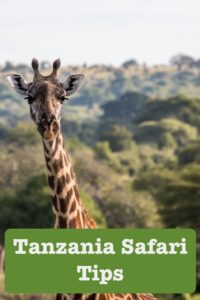
Disclaimer: I travelled as a guest of Titan Travel on a 9-night “ Wild Plains of Tanzania ” safari.
If you enjoyed this post:
- Follow Tips For Travellers on: YouTube , Instagram , Facebook , Twitter and Pinterest .
- Sign up for the monthly newsletter . includes a free eBook to download every month.
- Never miss a post by signing up for the Latest Tips For Travellers email .
Want to Support Tips For Travellers?
- Book a cruise via The Tips For Travellers Cruise Line: email / UK Phone 0800 852 7801/ Ex-UK +44 1273 836 639
- Next time buying on Amazon USA or Amazon UK click on these links
- Become a supporter via Patreon
- Make a donation via PayPal
Share this:
- Click to share on Twitter (Opens in new window)
- Click to share on Facebook (Opens in new window)
- Click to share on Pinterest (Opens in new window)
- Click to share on LinkedIn (Opens in new window)
Gary Bembridge
I grew up in Zimbabwe, but I have been based in London since 1987. My travel life spans more than three decades and that includes more than 95 cruises. In 2005, I launched Tips for Travellers to make it easy and fun for people to discover, plan and enjoy incredible cruise vacations. And the rest, as they say, is history. I have the largest cruise vlogger channel currently on YouTube, with more than 3 million video views per month.
You may also like...
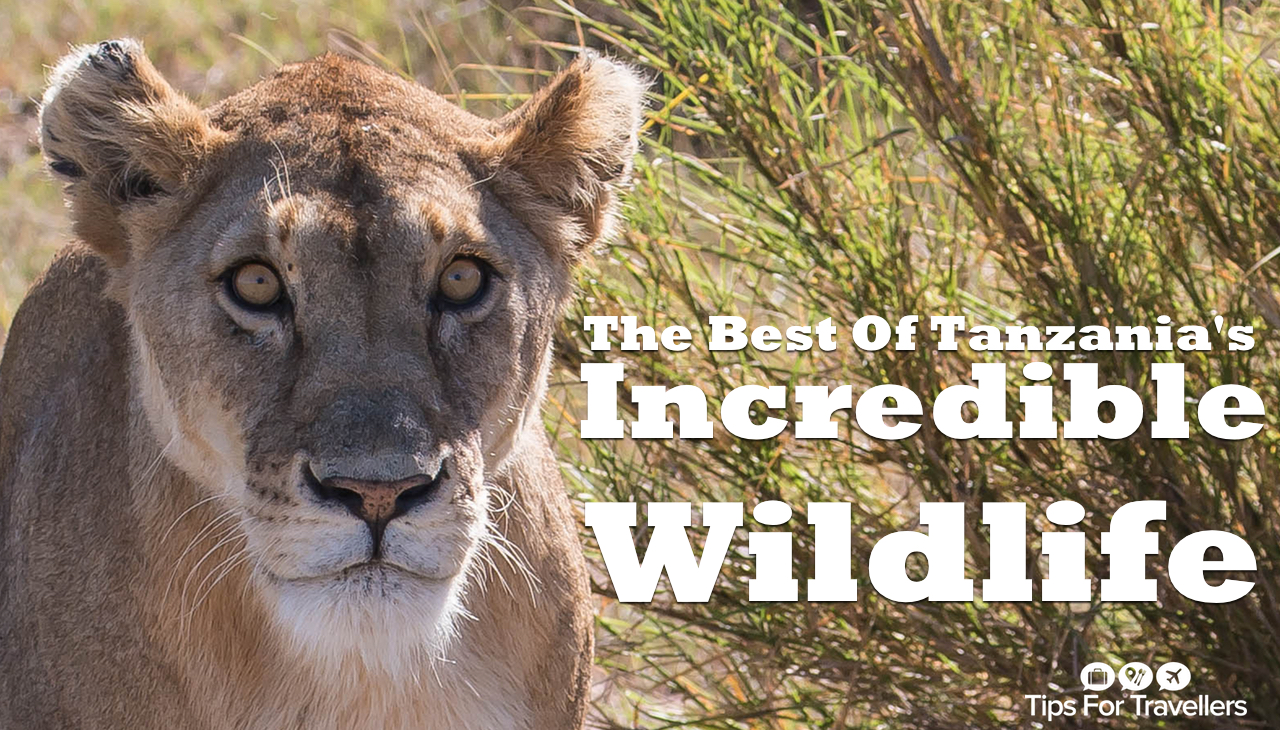
See The Incredible Wildlife of Tanzania! You Will Be Awestruck!
September 28, 2017
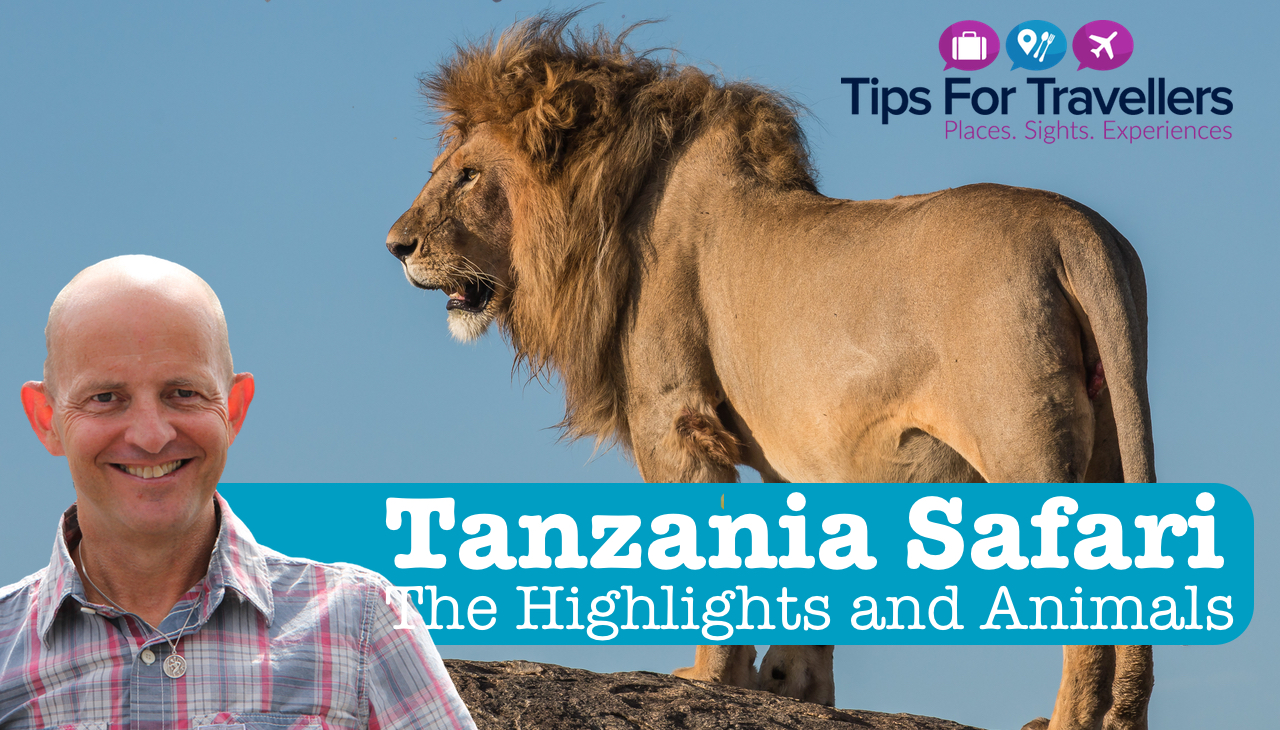
Tanzania Safari Highlights. Ngorongoro, Serengeti, Tarangire and Maasai Village
June 23, 2017
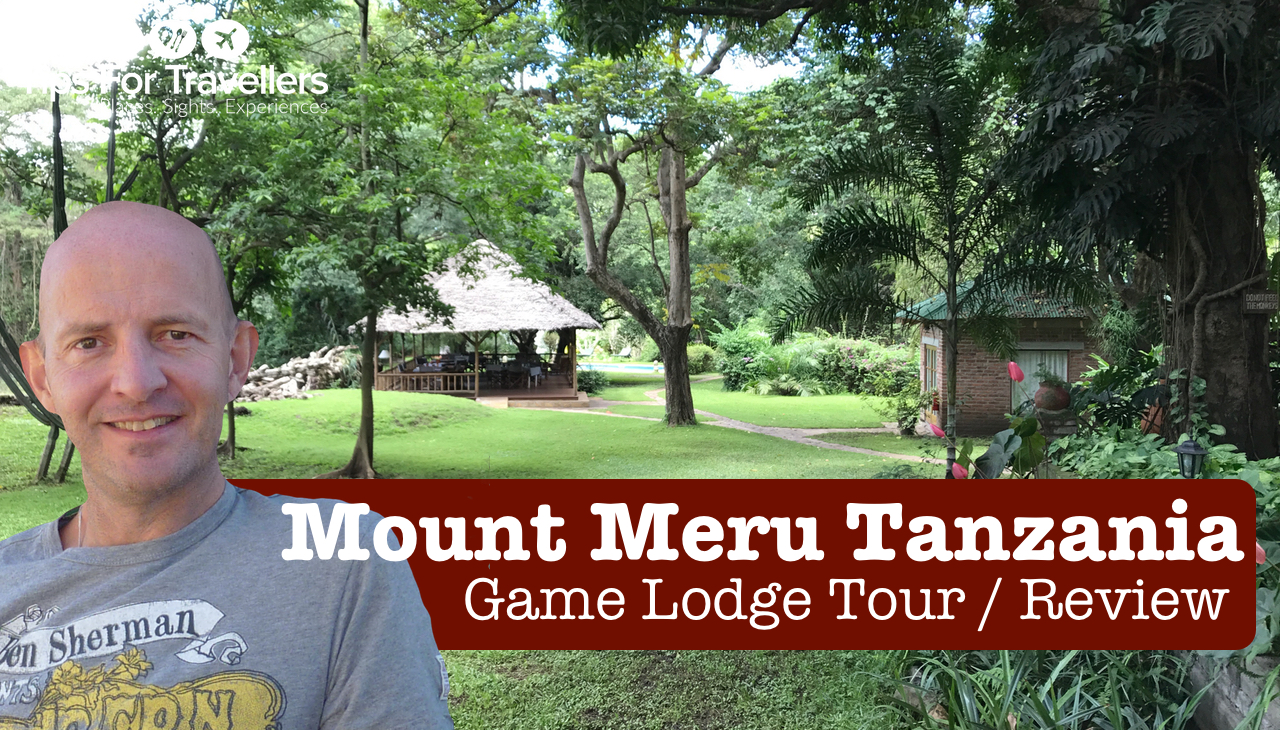
Mount Meru Game Lodge Tanzania. Tips For Travellers Video Tour and Review
July 23, 2017
Leave a Reply Cancel reply
- Next story Ngorongoro Sopa Safari Lodge Tanzania Review. The Best Lodge in Ngorongoro?
- Previous story Best Cruise Blogger. Vote For Tips For Travellers in the Wave Awards!
Search Tips For Travellers
Most popular articles:.
Subscribe to Blog via Email
Enter your email address to subscribe to this blog and receive notifications of new posts by email.
Email Address
Subscribe to my Tips For Travellers Newsletter
Most popular pages.

- Skip to primary navigation
- Skip to main content
- Skip to primary sidebar
- Skip to footer
TravelAwaits
Our mission is to serve the 50+ traveler who's ready to cross a few items off their bucket list.
9 Key Tips For Your First Tanzanian Safari According To Experts

- Activities and Interests
- Destinations
- Outdoor Activities
I thought I was prepared for my seven-day safari in Tanzania earlier this year. However, after extended conversations with our two guides, David and Joseph — along with other members of our safari team — I realized I could have come even better equipped.
For a little background, I traveled to Tanzania in September for a seven-day safari. All advanced arrangements were made through the travel agency, African Portfolio , while everything in Tanzania was handled by Ranger Safaris — I highly recommend both. Traveling with a group of thirteen, we began and ended our safari in Arusha and explored Ngorongoro Crater, Lake Manyara, and the Serengeti. The variety of wildlife we saw was stunning and included lions, cheetahs, elephants, zebras, giraffes, wildebeests, and much more.
A safari through the national parks of Tanzania might be the most memorable — and expensive — trip of my life. I enjoyed every minute of it, but considering the significant cost and effort it takes to get to East Africa, I hope to help those that follow me be even better prepared with these tips.

1. Bring A Camera And Binoculars
With ever-improving cell phone cameras, many people leave their actual cameras behind. I’ll admit that I often do this. However, as my guide, Joseph, pointed out, guests often regret this decision. If you own a camera, bring it, and be sure to purchase or rent a telephoto lens. If you don’t own a camera, consider purchasing or borrowing one. These will be some of the most memorable photos of your life.
Additionally, Joseph strongly encourages everyone to bring a high-quality pair of binoculars. While guides are always trying to get close to animals, sometimes that’s just not possible.
Pro Tip: I learned during our trip that a high-powered telephoto lens can cost thousands of dollars. However, that same lens can be rented for a few hundred. I’ll definitely be renting one for my next safari.

2. Tanzania’s Natural Wonders
Becoming a safari guide is no easy endeavor. In addition to educational requirements, each guide has many years of training and experience. Our entire traveling party was endlessly impressed by both David and Joseph’s knowledge of the animals, plants, and history.
However, to fully appreciate what you’ll see while on safari, take some time in advance of your trip to learn about the specific places you’ll be visiting. After all, you are visiting one of the most biodiverse regions in the world and there’s no way one guide can impart all there is to know about the more than 70 animal species and more than 500 bird species to be found here.
Here are a few resources that may help to prepare you for your trip;
- Animals of the Serengeti
- Mara: River of Death
- The Serengeti Lion
- Birds of the Serengeti

3. Tanzania’s Culture And People
While the animals are likely the reason you booked your trip to Tanzania, our guide, David, encourages guests to be open to learning about the local culture and people as well. Fortunately, this is pretty easy to do. Every Tanzanian I met was eager to share information about their country, so don’t hesitate to start a conversation with your guide, driver, or anyone else you meet.
Learning about the tribes of Tanzania is a great starting point for understanding the local culture. The best-known tribe is the Maasai but that’s just one of the 120 tribes residing in the country. Look for opportunities to learn about tribes through visits to local villages or craft demonstrations. We had the chance to watch a carving demonstration by a member of the Makonde tribe who mostly reside in Northern Tanzania. Their carvings — frequently made of ebony — are very intricate and can take many years to complete.
Pro Tip: The Cultural Heritage Center in Arusha is a great spot to learn more about the traditional arts of Tanzania’s tribes by watching demonstrations. I arrived early in Arusha and had the opportunity to spend a few hours here.

4. Don’t Pet The Animals
Before meeting our safari guides, our group gathered for a briefing given by our tour director, Naomi. After reviewing the itinerary, she reminded us about safety and instructed us not to pet the animals. I assumed she was joking. I couldn’t imagine anyone stupid enough to pet a wild animal. However, it turns out that most of the guides and staff I met during my seven days had at least one story about a guest attempting to pet an animal, including a lion.
A few days later we were parked in the Serengeti watching a lioness hunting a gazelle. She briefly passed between our two vehicles, using them as cover. With the vehicle windows open, she was close enough to reach out and touch. I now understood how someone could be tempted to pet a lion, but needless to say, don’t do it.

5. Oldupai Gorge — The Cradle Of Mankind
On our third day of the safari, we drove from the Ngorongoro Crater to the Serengeti. Along the way, we stopped at the Oldupai Gorge and toured the museum. This isn’t on every safari itinerary, but I agree with our guides, David and Joseph, who told me it should be.
Oldupai (frequently misnamed as Olduvai) Gorge is arguably the most important fossil site in the world. It was here that Louis and Mary Leakey made several important discoveries, including the earliest signs of humans using stone tools.

6. When You Should Visit
If you’re going to make the journey to Tanzania, it’s really important to decide what time of year you do it. After speaking with our travel agent, tour director, and guides, I learned that there are many things to take into account when making this decision.
First of all, if you want to see the great migration of wildebeests, you’ll need to come between May and September. The animals cross the Grumeti River between May and July and the Mara River from July to September. Keep in mind that these are wild animals that can do what they please, so these months are just estimations. I had the chance to witness the wildebeests crossing the Mara and it was spectacular. However, this is the busiest and most expensive time of year as well.
If you’re hoping for better pricing and fewer crowds, then the off seasons of January through March and November through December are good options. January through March is often a great time to see baby animals throughout the parks. This is also the rainy season. The rains can make the roads muddy, difficult to navigate, and may limit where your safari guide can go.
7. Prepare For Your Trip
In a follow-up call with our travel agent, Victoria, I asked her what she wants future travelers to Tanzania to know. She said, “Read everything your tour company sends you and allow plenty of time to prepare for your trip.” I couldn’t agree more.
First, make sure your passport is current and will not expire less than six months from the date of your trip. Next, you’ll need to apply for and receive a visa from the government of Tanzania. This can take up to three weeks, so don’t wait until the last minute. Currently, the government requires tourists to be fully vaccinated against COVID-19. However, you’ll also want to check with your doctor about other recommended vaccines. Your doctor is likely to prescribe anti-malarial pills and you may need to start taking these before your departure.
8. Purchase Local Crafts
When it’s time to purchase souvenirs for family and friends, Joseph highly recommends seeking out handmade crafts. His personal favorites are the Makonde tribe carvings. However, if a sculpture isn’t for you, consider handcrafted leather goods, beaded jewelry, and woven baskets. To support a local NGO, visit Shanga , and purchase one of the items made by disabled artisans.
Pro Tip: After three trips to East Africa, I’ve learned to bring along an extra bag to take home all of my souvenirs. I’ve found that the handmade items throughout this region are beautiful, high quality, and affordable.

9. Listen To Your Guides
Okay, this tip comes from me, but that’s because David and Joseph were too polite to say it. Your guides want to do everything in their power to accommodate every request, but in reality, they know best.
If your guide asks you to get up before the sun rises so you can get to the Mara River early enough to watch the wildebeests cross, then just do it. You can sleep back home. When they suggest you stop taking pictures of the gazelles because they’ve heard of a lion sighting, then put the camera away and let them drive on.
All day, every day, guides are balancing the requests (sometimes demands) of guests with their expertise and intuition about the animals. When we listened, we were rewarded with the sighting of mating lions, a lioness after the hunt, and a mother cheetah and her three cubs. In other words, things we didn’t even know were possible, but our guides did.
For more articles on safaris, check out these articles:
- 9 Mistakes To Avoid While On Safari
- 12 Luxurious Safari Lodges To Experience In Africa
- 16 Things I Learned On Safari With A Professional Wildlife Photographer

Wendy and Jason Lee are two passionate travelers based in Irvine, California. They set out to inspire couples 50+ to travel more by launching the blog, Empty Nesters Hit The Road . Often they travel internationally, but their own backyard, Southern California, also gives them ample opportunity for exploration.
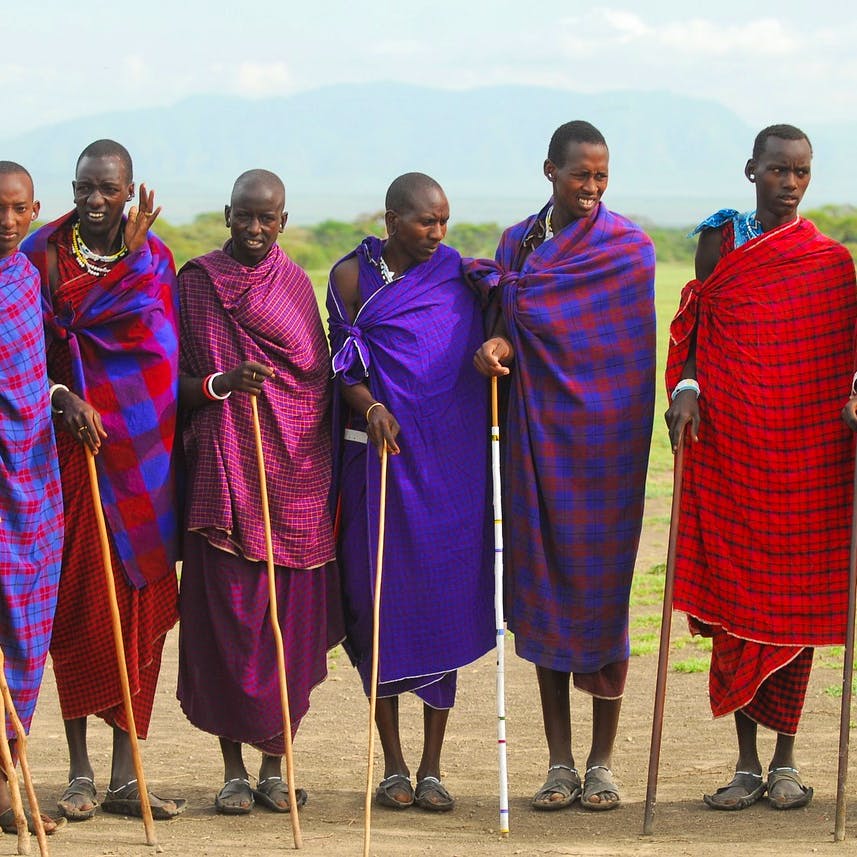
Top Tanzania Safari Tips For An Unforgettable African Escape
6 tips on where to go and what to see, 1. serengeti national park: the great migration and abundant wildlife.
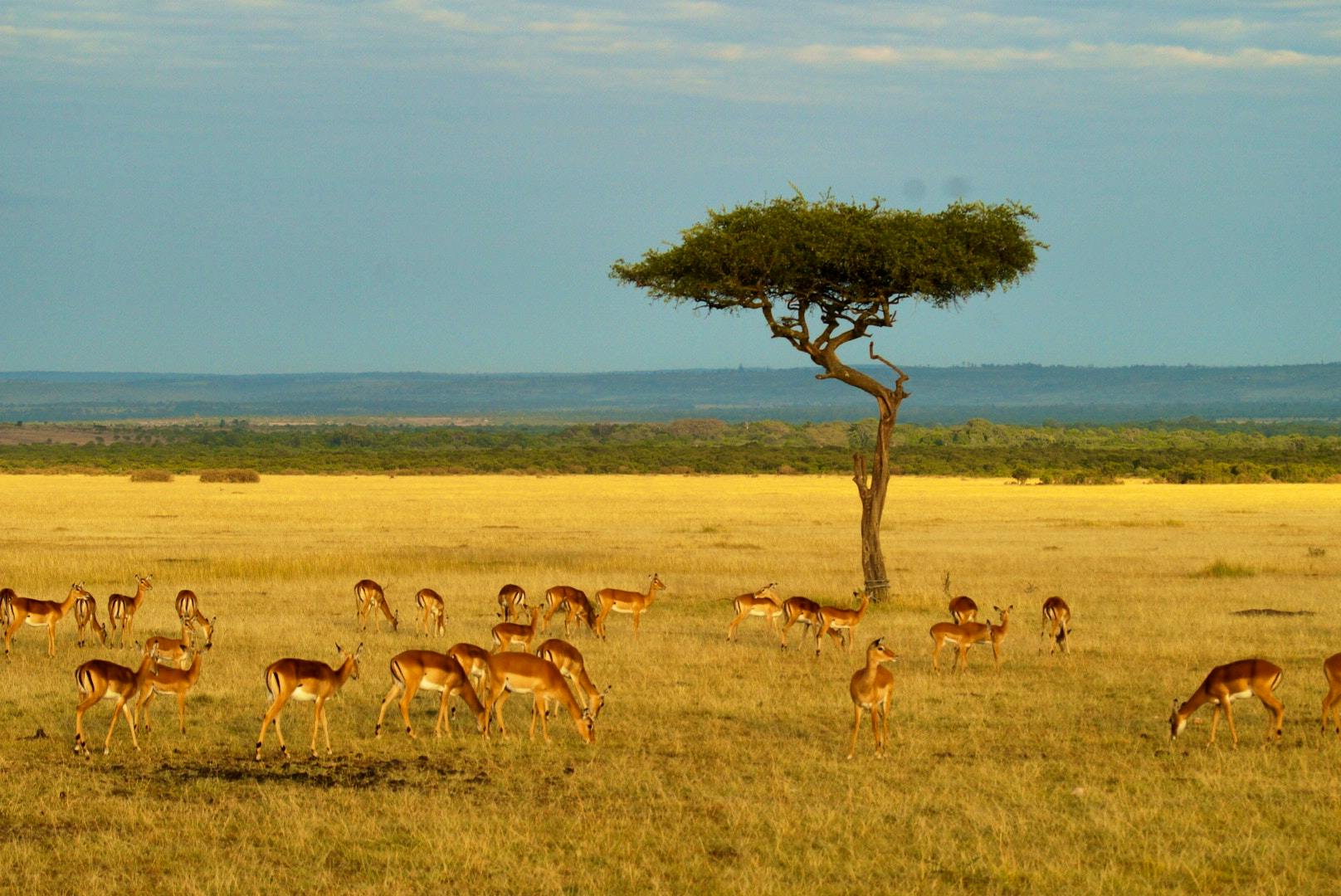
2. Ngorongoro Crater: A Unique Ecosystem with Diverse Fauna
3. selous game reserve: off-the-beaten-path exploration.
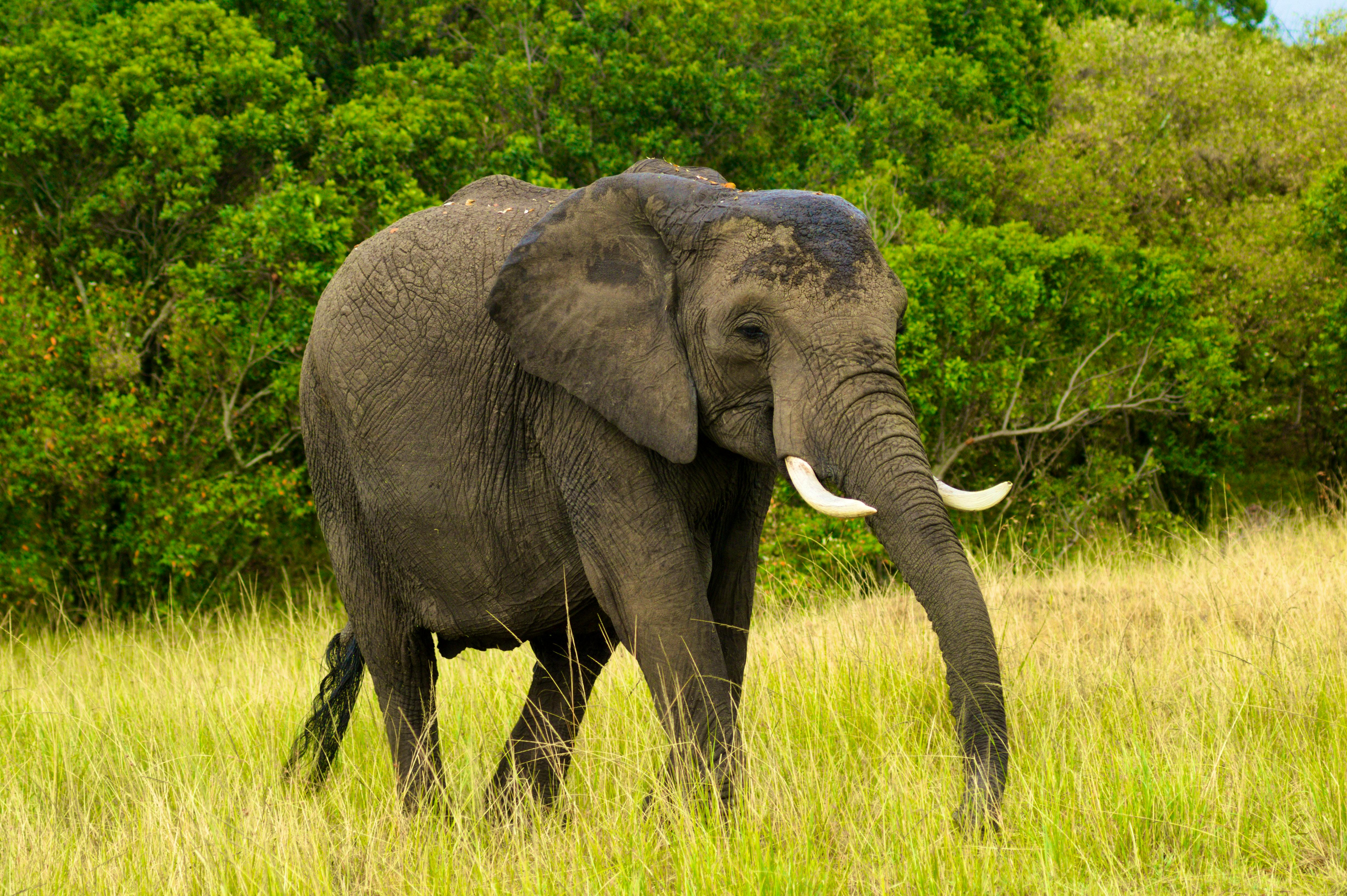
4. Tarangire National Park: A Haven for Elephant Enthusiasts
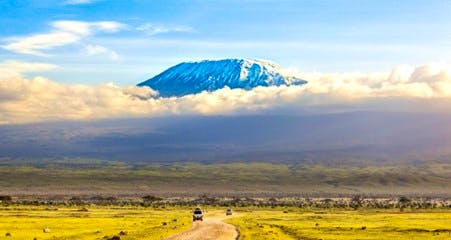
5. Mount Kilimanjaro
6. zanzibar for post-safari and hike relaxation.
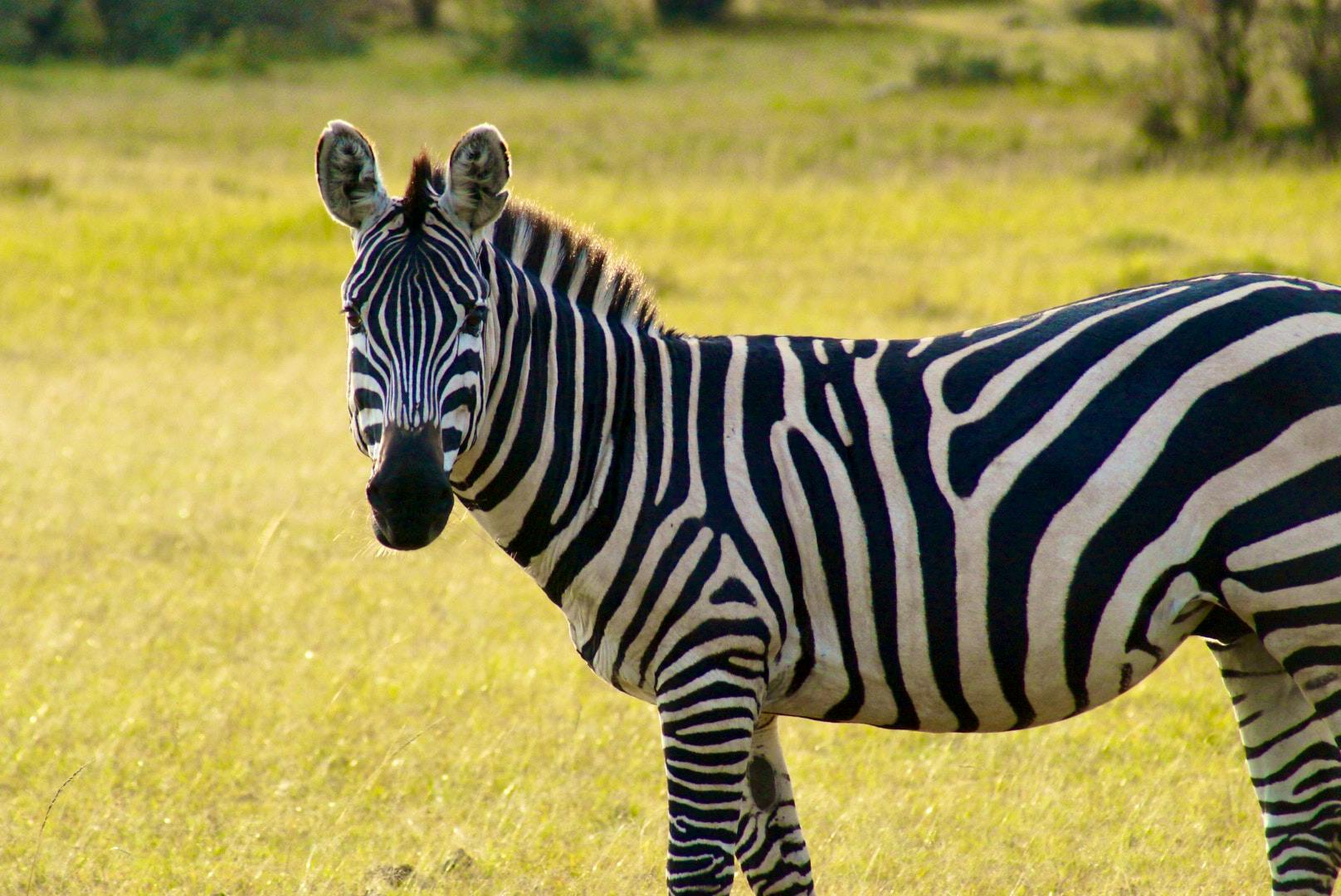
Top 10 General Tanzania Safari Tips
1. consult a doctor well in advance., 2. get travel insurance..
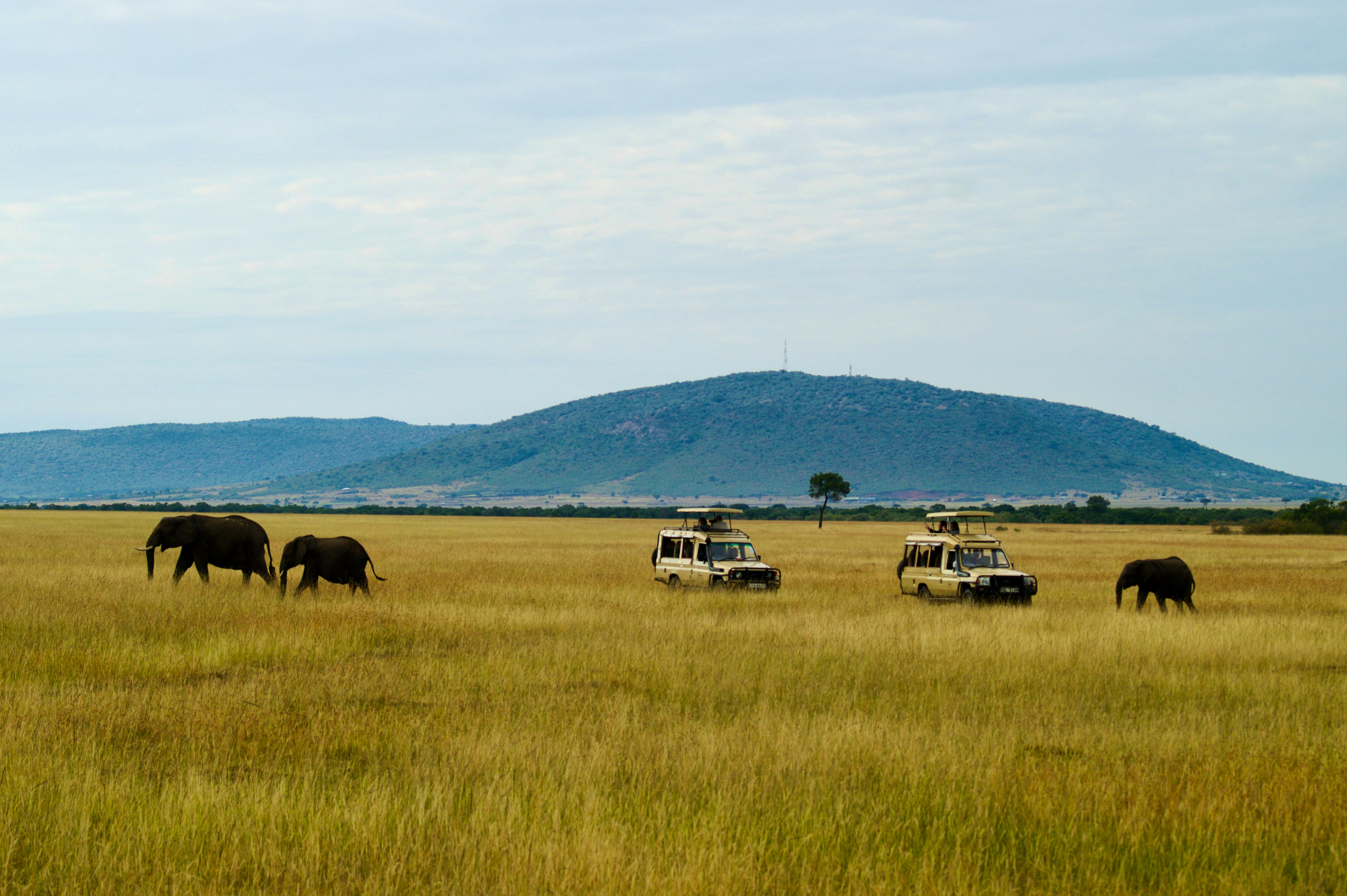
3. Opt for a guided safari.
4. ensure your passport is valid for at least six months beyond travel dates., 5. carry copies..
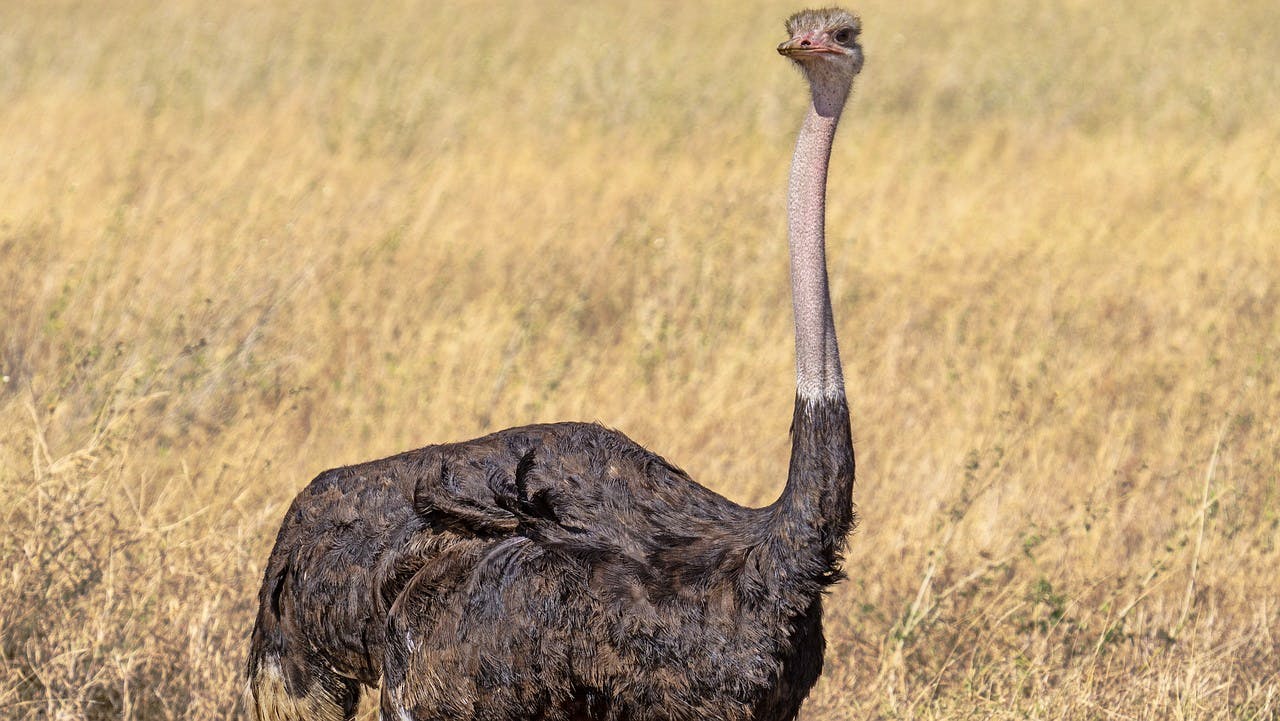
Preparation:
6. plan well in advance., 7. read our recommended packing list for tanzania safari..
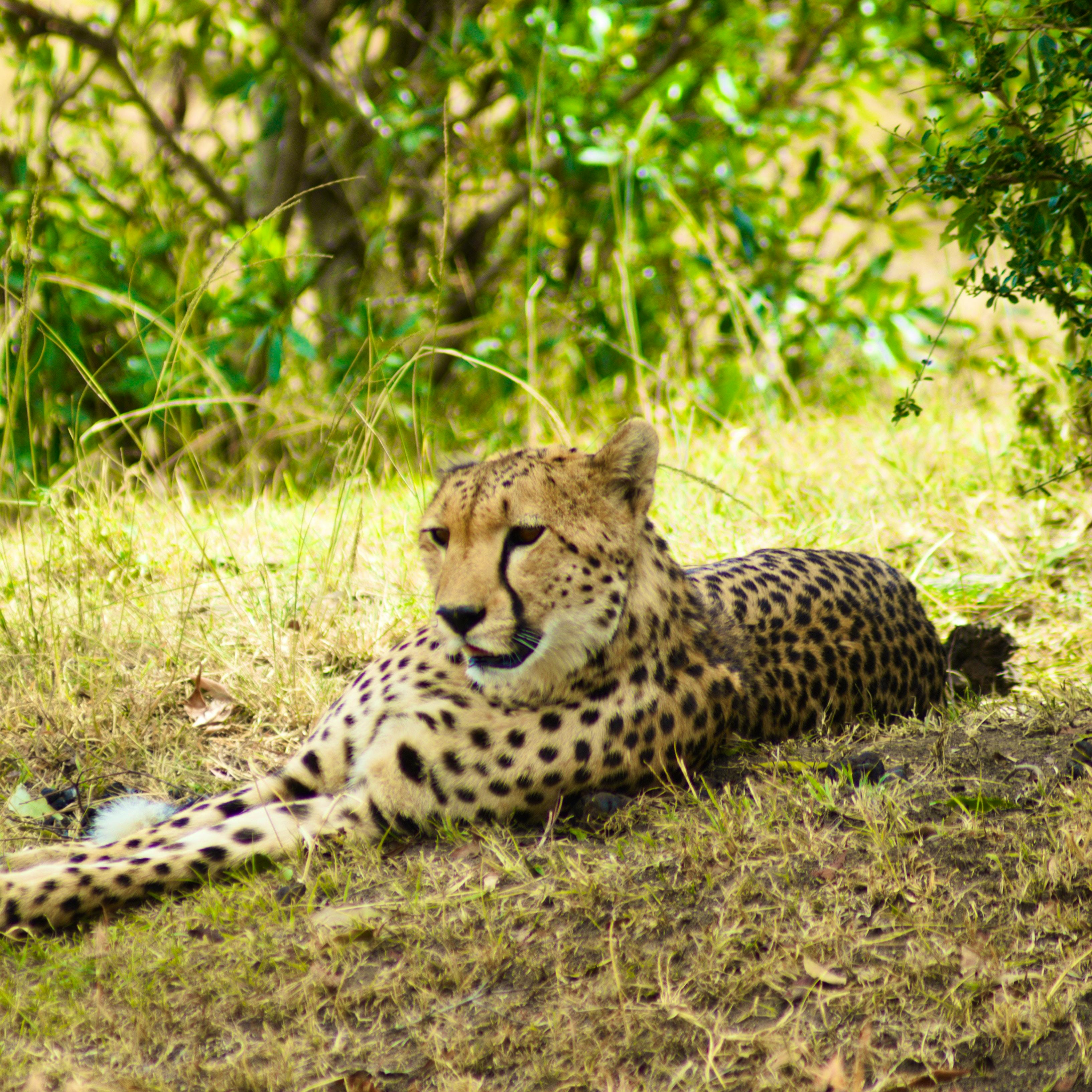
8. Tanzania is fairly conservative.
9. be ready to tip., 10. enjoy and respect the culture..
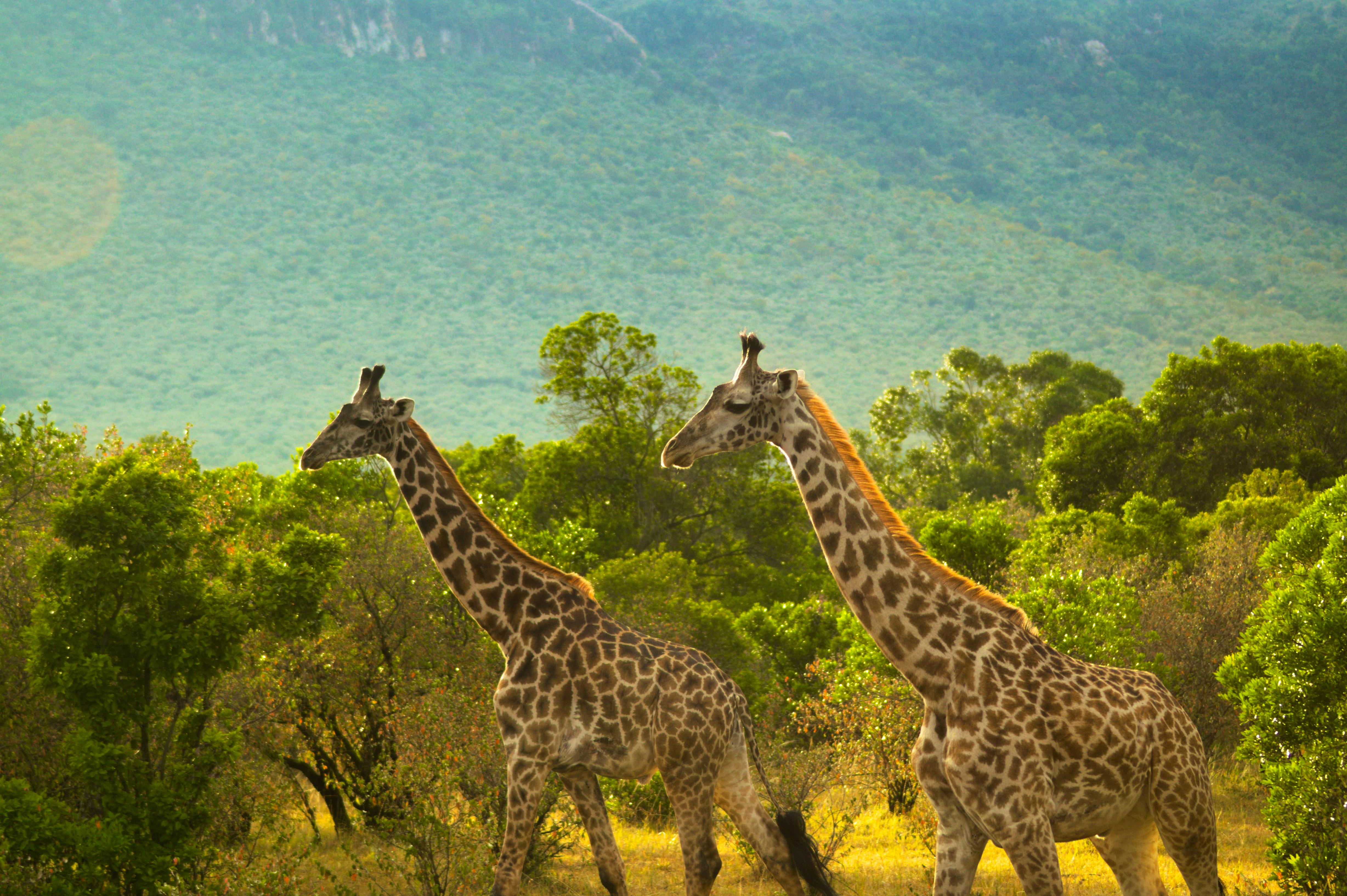
Skyhook’s Guided Trekking Trips in Tanzania
Kilimanjaro Lemosho (8 Day Route)
Kilimanjaro Lemosho (7 Day Route)
Kilimanjaro Machame (7 Day Route)
Kilimanjaro Machame (6 Day Route)
Kilimanjaro Rongai (7 Day Route)
Kilimanjaro Marangu (6 Day Route)
Find your next adventure
- COLLABORATIONS
- PHILIPPINES
- NETHERLANDS
- UNITED ARAB EMIRATES
- SAUDI ARABIA
- TRAVEL TIPS
- INSPIRATION
Everything you need to know before going on safari in Tanzania
I recently returned from Tanzania, a country I didn’t necessarily have on the bucket list, but which surprised me very much, mainly due to the five-day safari experience. I’ve been on a safari in Yala Park in Sri Lanka , but it doesn’t compare.
I activated my adventurous spirit in a safari through the most important safari parks in Tanzania . Tarangire, Serengeti, Ngorongoro, and Lake Manyara are the four places where I managed to complete the mission that probably any traveler who arrives on these lands has: to see THE BIG FIVE.
PIN IT FOR LATER

The four nights spent in the middle of the wilderness made me exclaim Hakuna Matata! No worries, you won’t become a meal for the lions . I also visited a tribe of Maasai, I learned everything about coffee, and I have many stories to tell that will soon make their place on the blog.
It’s time to start with the first one, more precisely, an extensive list of questions and answers I asked myself when I organized this adventure.
I didn’t find everything you need to know before going on safari in Tanzania then, so I challenged myself to do this for those of you who want to have this experience in Tanzania.
What I use every time I travel:
- To book hotels: Booking.com
- To book tours: GetYourGuide.com

wildebeest in Serengeti
Some essential things to know about Tanzania
With an area of 947,000 square kilometers, Tanzania is one of the largest countries in East Africa. The capital of Tanzania is Dodoma , although the largest city is Dar es Salaam .
Famous for the perfect national parks for safaris and the beaches bathed by the Indian Ocean and the highest mountain in Africa, Kilimanjaro, we can say that Tanzania is a destination that is well worth visiting.
Even though the official language is Swahili, most people can also speak and understand English, especially those who work in the tourism industry. So, conversations should not be a problem if you decide to come here.
And if we talk about Swahili, you have to remember the following basic expressions:
- Jambo! – Hello!
- Karibu! – Welcome
- Asante Sana! – Thank you!

zebras and wildebeest drinking water from a river in the Serengeti
Do you need a visa for Tanzania?
In general, tourists need a visa to enter Tanzania; you can get the visa online ten days before your flight or get the visa on arrival.
The visa costs $50, but for Romanian citizens, it is free due to an old and close friendship between Ceausescu, the former ruler of Romania, and Julius Nyerere, the former president of Tanzania.
Why choose Tanzania as a safari destination in Africa
There are many reasons why Tanzania is a great safari option . First of all, the diversity of animals is enormous. Hundreds of animal species, including the big five (buffalo, rhino, lion, elephant, and leopard), but also vast herds of zebras and wildebeest, cross the endless plains of Serengeti every day.
Secondly, the vegetation seen in the documentaries on National Geographic and Animal Planet will surely delight you. You will see acacia and baobab trees everywhere you look, and they are amazing.
Ngorongoro Crater is a unique place on earth, formed more than 2 million years ago, when a volcano erupted and collapsed on itself. The scenery is dreamy, and the road from the top of the crater to the bottom looks pretty damn good. It is also where you are most likely to see the black rhino.
Unlike other African countries, Tanzania is relatively safe in all respects, which is a good enough reason to choose it.
READ ALSO: Best time to visit Zanzibar

stopping point in Ngorongoro Crater
How to choose the safari company
There are several ways to choose the safari company for your trip to Tanzania. Either ask your acquaintances who have already gone through this experience and were satisfied, or search on Facebook groups (at a simple search on Tanzania safari keywords, you should discover a few), or read travel blogs or consult some specialty sites.
I tried all the above options until I made a final decision, and that’s because I wanted to make sure it was the best choice, especially since it’s not a cheap trip at all. Although you can go on safari with a slightly lower budget, being the first time I was going on safari for five days, I chose comfort.
Of all the methods to search for the company, the most efficient was the specialized websites. They are actually a kind of search engine that brings together all companies and their offers. Therefore, I recommend going to either bookallsafaris.com or safaribookings.com.
Put some filters to sift the results, then look carefully at each offer. My suggestion is to keep at least three options in mind and send a message to each company to request a quote and tell them what you want.
Everything can be customized: budget, itinerary, and the type of accommodation you want. You can even opt for luxury accommodation on one of the nights, while you can stay in the tent the other nights. It all depends on personal preferences and the budget allocated to this experience.
We chose Gosheni Safaris, a highly rated company with a lot of experience, and we were pretty satisfied.

car stuck in the mud in the Serengeti, next to a lion pride
How many days do you need for a safari in Tanzania?
Tanzania is one of the best countries globally when it comes to safaris and the opportunity to observe wild animals in their natural habitat. Some of the great parks of Africa are in this country, and the most popular are Serengeti, Ngorongoro, and Tarangire.
The sizes of these parks are enormous, as well as the distances between them. You have to spend at least three days to see a little of each. And if you want to have extensive experience, then five days would be ideal.
The sky is the limit for those with a bigger budget and passion for this type of travel. Our guide told us that some people prefer to stay even for a month, although rarely happens. Most are satisfied with 5-10 days.
We chose the option of 4 nights, respectively, five days. I must mention that the four nights were inside the parks; they do not include the two nights spent in Arusha.
We had enough time to explore Tarangire, Serengeti, Ngorongoro, and Lake Manyara during the five days, precisely in this order. Although, if I were to go again, I would give up on one of them.

Do you need vaccines and other medical treatments before the safari in Tanzania?
Only if you come from Kenya, Uganda , Rwanda, or Burundi the yellow fever vaccine becomes mandatory and must be presented to the authorities.
Otherwise, it’s only recommended. There are also other vaccines you could take for this type of trip, but a doctor would inform you better than me.
The same goes for malaria. You can take medical treatment before and during the trip, as far as I know, but it is best to ask a doctor. I have no medical studies; I’m just telling you that they are not mandatory for Tanzania and that the level of caution remains at everyone’s choice.
What you must have are sprays against mosquitoes and Tsetse flies. There are many, and they can be dangerous, so you should apply and reapply DEET sprays throughout the day for high protection.
READ ALSO: 50 amazing facts about Maasai Tribes

acacia trees and baobabs
How safe is this experience?
Throughout the days spent both on safari and in Tanzania in general, I never felt in danger. As long as you take your protection measures, use the sprays I keep insisting on, sun protection and do not consume tap water, you should be fine.
The animals can’t attack you as long as you listen to the guide’s instructions and don’t get out of the car and don’t walk outside from the campsite.
This is pretty much all you need to know before going on safari in Tanzania about safety.

buffalos in Ngorongoro
How much does it cost to go on safari in Tanzania?
When it comes to costs, no matter how relative things are, going on safari in Tanzania is not cheap. Several factors contribute to the final price.
The main criteria would be the number of days, the type of accommodation, the plane tickets, choosing a private or group tour, and the company you collaborate with.
For example, a classic 4-day safari includes a visit to the three popular parks: Tarangire, Ngorongoro, and Serengeti. Well, prices can start at just under $ 1000 per person, this without including plane tickets, and you would have to stay probably in regular tents, without too many facilities.
On the other hand, you should share the same safari car with strangers, if you don’t come with a group of friends. This can be interesting and fun or vice versa. It depends on what kind of people you meet there. If you want to stick to a relatively small budget, it may be worth the compromise.
On the other hand, there is the luxury version, with 5-star premium accommodation, with an infinity pool right next to the elephants. I am convinced that you have seen these kinds of safari pictures on Instagram.
Such a very Instagrammable accommodation would be Four Seasons Serengeti . Besides this accommodation type, you will have delicious and quality food, drinks, and snacks during the game drive and a private tour. Such an experience exceeds a budget of around $ 4000 per person.
At the same time, there is the middle option. This option includes a private tour and excellent accommodation in lodges or tented lodges. The rooms are big and comfortable, have non-stop water and electricity, and a chef who is cooking for you.
Even the lunch taken in the parks is also prepared by the chefs here, and the food is warm. This option comes with prices starting at $ 1500 and can go up to $ 3000 for a four-day trip. In the picture is the accommodation I stayed for two nights in Serengeti, Acacia Serengeti Luxury Camp.

Acacia Serengeti Luxury Camp
Also worth mentioning is tips, a common custom throughout Tanzania. Even in the contract, it appears specified, and it is not insignificant at all. It is highly recommended that the tips be around $ 15-20 per person for each day of safari.
Tips are also expected at the accommodation units, from the chefs, receptionists, and people who carry your luggage. I’m not saying it’s bad or good.
Indeed, those people work and deserve to be paid, but I consider it an important detail that you need to know before going on safari in Tanzania. However, is rarely mentioned on other blogs. In short, you can expect an extra cost that can reach several hundred dollars.
The perfect safari itinerary in Tanzania
I told you earlier that I would eliminate one of the four places I visited. Well, this is Lake Manyara. Although it should be famous for flamingos and lions climbing trees, not only did I not see any of it, but I saw almost nothing in general.
I must specify that 90% of the roads inside the park were under renovation, which turned the trip into an ordeal. Vast piles of soil were placed in the middle of the road, and our guide slalomed between them.
I thought that we would flip at some point, but fortunately, it did not happen. Thank you, Zadock, for your driving skills!

Lake Manyara, Tanzania
In my opinion, the park should have been completely closed to complete the works because it was a lost day for us anyway. The only animals we managed to see were a few baboons, elephants, and a mini herd of zebras.
Therefore, the ideal safari itinerary in Tanzania, from my point of view, would include a day in Tarangire, two in Serengeti and two in Ngorongoro, beautiful parks abounding in animals and savannah vegetation, with beautiful baobabs, dwarf shrubs, and acacia trees.
And if you have several days, you can add Nyerere and Ruaha, located further south.

an elephant and her cub
What to wear on safari
From a chromatic point of view, the only colors you should avoid when it comes to a safari outfit are blue, black, and very bright and intense colors, which stand out far too quickly.
It is ideal for wearing environmentally friendly colors, beige, brown, cream, white, and savannah green or animal and vegetable prints.
The materials should be as comfortable as possible and cover as much of the body as possible. It would be preferable to wear a hat to protect yourself from the sun and necessarily sunglasses.
I will write an article dedicated to how I chose to dress in the safari, but now I leave you with two pictures as an idea until then. The same advice applies to both women and men.

The best time to go on safari in Tanzania
The best time to visit this wonderful part of Tanzania depends on the season and the density of the animals.
The climate in Tanzania is divided into two major seasons: the dry season and the wet season. If you want to avoid the rains, but have slightly drier vegetation, then it is best to go in June – October.
If your goal is to witness the great migration in Serengeti, you will be able to do this best between June and August.
But if you want to have bigger chances of seeing the animal cubs, most of them are born at the beginning of the year, January-February. However, you could still have opportunities to see them at other times of the year.
Summarizing all the criteria, I would say that the best time for a safari in Tanzania is June-July. While probably the worst, because there is a lot of heavy rain, is March-April.

What to pack for a safari in Tanzania
The one thing in planning the trip that gave me some headaches was the luggage. It’s not my favorite thing to do, regardless of the trip, but especially this time.
First of all, make sure you add some mosquito sprays that contain DEET in a high percentage. Then don’t forget any medications you may need or use regularly. If you have them on the recipe, be sure to add the recipe as well.
Sun protection is also mandatory, considering that you will spend even 12 hours a day in the car, and you will not be protected from the intense rays of the sun, regardless of the month you arrive here.
Given the situation we are still in, bring hand sanitizer and antibacterial wet wipes. Of course, these may be necessary regardless.
Put in your luggage a hat, a scarf, sunglasses, a camera with a lens suitable for safaris, comfortable shoes, and light outfits, which look good in pictures. You should add binoculars, but you better ask beforehand if your guide has and can offer you.
Let’s not forget the adapters. It is unclear what kind of sockets are used in Tanzania because I have come across three different types. So it is best to take some universal adapters with you.
Don’t forget the battery for the camera, although I give you good news: there are sockets in the car!

giraffes in Serengeti
On which airport you should land for safaris in Tanzania
You have two options. Either you land at Kilimanjaro International Airport or the domestic airport in Arusha. Safari usually starts in Arusha, being closer to the main parks.
So if you don’t plan to climb the mountain, it would be best to land here and stay at a hotel in the city, to start the safari the following day.
However, the distance from Kilimanjaro airport to Arusha is not very long, only one hour and a half. Regardless of where you land, Arusha or Kilimanjaro, you can agree with the safari operator to offer you transport to the hotel. In general, it’s included in the price.

Arusha airport

What animals can you see on a safari in Tanzania?
In general, anyone embarking on this adventure has big expectations about the big five. My advice is not to have any expectations and to be surprised. Surely the wildness of these parks will amaze you in several episodes.
As for the five most sought-after animals, the chances are pretty high to meet them all, but nothing is guaranteed. We had the opportunity to see them, noting that we could only see the rhino through binoculars, about a kilometer away.
Even so, I think the experience was a success. I saw thousands of zebras, several species of antelopes, hundreds of elephants, giraffes, buffalo, flamingos and other splendid birds, cheetahs, leopards, lions, baboons, hippos, mongooses, and many more.

a lion finishing his lunch in Serengeti (wildebeest)
What are the must-see safari places in Tanzania?
I think I have already mentioned places that you should not miss, but of course, you can always add more destinations in this incredible country, with so much to offer.
For example, I would have liked to see some waterfalls because I know some really wow, but time did not allow us. On a future visit, I would probably include the waterfalls, along with Mount Kilimanjaro or even Meru.
Also, I encourage you to visit at least one Masaai tribe. The things you will learn from them are fascinating. The experience is an extra cost, but it is worth all the money.
It usually costs about $ 50. If you can, give the children some presents, either school props or juices and sweets. Their reaction will fill your soul with joy!

two black rhinos in the distance
Types of accommodation on a safari in Tanzania
Even if you are in the middle of animals and you probably imagine that such an experience has nothing to do with luxury and comfort, find out that you’re mistaken. There are many types of safari accommodations, and among them are some super luxurious.
To summarize, the types of safari accommodations in Tanzania are of three kinds:
- Tent (camping) – is the most basic, comfort is minimal, and I suppose everyone knows what a simple tent looks like. A big plus here is the adrenaline
- Tented lodge – is a more advanced tent, with electricity, water, even a large bathroom. At such an accommodation I stayed in 3 of the four nights. The tented lodge can be economy or luxury, depending on how it looks and other facilities it offers
- Lodge – a lodge built of stone, wood, and other materials used in a house or hotel. Lodges are luxury or luxury plus. I stayed at a lodge near Ngorongoro Crater, called Farm House. I must mention that it was my favorite accommodation of the three

What food is served in safari?
All tours offered by companies that organize safaris in Tanzania offer three meals a day, and some also provide snacks between meals, including water, coffee, tea, and beverages. The cars are equipped with refrigerators so that the drinks stay cold.
The three main meals are generally prepared by the accommodations where you will stay.
Breakfast and dinner are served at the accommodation and lunch somewhere along the route, generally in specially designed spaces. There are places in the safari where several cars gather at about the same time.
If I may say so, the most “crowded” place was in the viewpoint near the Tarangire River, where there are several groups of baboons that will continue to struggle to steal food.
As much as you love animals and want to feed them from your lunch, you won’t be allowed to do that because they need to keep their wild nature.

dinner at Tarangire Luxury Camp
Can you do the safari on your own?
Yes, you can go on safari on your own, but I would not recommend that. Even if you have experience because you’ve been before, I find it much more comfortable, safe, and advantageous to go on safari with a specialized company.
The guides are prepared for this and have years of experience behind them. They know better than anyone when and where to find animals and they communicate with each other through the station.
Sometimes, several cars meet around some lions, and this is not a coincidence. They frequently talk through the station and announce when they notice something worth seeing.
Even from financial criteria, I don’t think it’s an excellent choice to go on safari on your own. If you take a look at Booking and see what are the prices for one-night accommodation at the park lodges, you will see that the packages made by these companies still have significant financial advantages.

Do you need health insurance for a safari in Tanzania?
If before it was somehow optional and only the most cautious of us used it, I think the time has come for medical insurance to become indispensable when it comes to travel. It could save us from many situations where we would have to pay money out of our own pockets if we didn’t have it.
Tanzania requires a test performed a maximum of 72 hours before entering the country. These are the rules at the time of writing, which may change in the meantime. Therefore, if the test is positive, the vacation is lost. Insurance would help you recover the money spent. This is just one example.
It is not mandatory, and the authorities will not ask you. But for our peace of mind, it’s good to have it.
When do you have to make the payment?
In my experience, you will have to pay a part of them a few days in advance. This part may vary from company to company. We were asked for 30%, and we would pay the total amount when we would meet them. You can pay both in cash and by card, both in Tanzanian shillings and dollars.
Salut, Multumesc ca ai impartasit experienta si ai oferit multe informatii utile. Cat a costat experienta cu safari? Toate cazarile ai fost de tip lux, sau doar cea din Ngorongoro?
La cat mai multe vacante, Aura
Leave a Reply Cancel reply
Your email address will not be published. Required fields are marked *
Notify me of follow-up comments by email.
Notify me of new posts by email.
Recent Posts

Subscribe and follow
This World Traveled
Traveling the world one place at a time.
- Faroe Islands
- Netherlands
- Philippines
- New Zealand
- South Africa
- Travel Gear
Safari in Tanzania: How to Plan the Perfect African Safari Vacation
May 16, 2019 · In: Africa , Destinations , Tanzania , Travel Guides
Going on safari is an absolutely incredible experience and truly a trip of a lifetime. This travel guide will help you in planning your perfect safari in Tanzania with the hopes of seeing the big 5 !
During your 7 day African safari you will visit Serengeti National Park, the Ngorogoro Crater, Arusha Tanzania and more! Find out everything you need to know about Tanzania including how to apply for Tanzania eVisa, what to wear on safari Tanzania, where to stay and what vaccinations you will need.

DISCLAIMER: Some of the links in this post are affiliate links. This means that if you use these links to purchase a product or service I will receive a small compensation at no additional cost to you. Everything I recommend are products or services that I personally use and have been essential for me as a travel blogger.
Traveling to Tanzania? Don’t leave home without getting travel insurance! You never know when something could go wrong and you’ll definitely want to be covered by insurance! Click HERE to get a quote!
LIKE THIS POST? SAVE TO PINTEREST!

Table of Contents
Where is Tanzania?
Tanzania is located in East Africa just south of the Equator. The largest of the East African countries , Tanzania is full of unique landscapes, an abundance of wildlife and fascinating culture. Tanzania is a very popular destination for visitors wanting to do safari! Follow this Tanzania map and plan out your own itinerary for all the best places to visit within the country!
Should You Use a Safari Company?
Since I did a multi-country trip to Tanzania and Madagascar I used a company based out of California to organize everything. For my 7 day safari tour I joined the amazing Duma Explorer’s .
They were friendly, accommodating and very well organized. There are many Tanzania safari tours available however, I would highly recommend Duma Explorer’s if you plan to visit Tanzania. Our guide for the duration of our trip was Sifuni and our talented chef was Amin. The meals he would cook up in the middle of the bush were seriously impressive!

Now it is possible to do a safari in Tanzania on your own by renting a truck and staying at the campsites. However, we probably would have missed seeing most of the wildlife because Sifuni has an eagle-eye for the animals.
He even pointed out a dung beetle as we were driving along! Not to mention, you’d probably get lost somewhere along the way on a game drive as nothing is clearly marked and the internet isn’t always reliable.
What to Expect on Safari
First and foremost remember that these are wild animals . You will hopefully get to see the Big 5 but it is not always a guarantee. Also, there are specific paths that need to be followed and respected within the parks so whether you are doing a self-driving safari or with a guide be sure to keep these rules in mind.

If you choose to do a similar safari to me, you will most likely follow a similar route in order to visit all the different parts of Tanzania!
Now let’s get to the good stuff: SAFARI TIME
Starting Your Safari in Arusha
If you are heading on a safari in Tanzania you will arrive at the Kilimanjaro airport. Following the visa procedure (see all the details at the end of this post) you will collect your belongings and exit the airport. Your tour guide with greet you and escort you to your hotel for the evening.

I stayed at the Rivertree Country Inn for the first and last night of my stay in Tanzania.
The Serengeti & Lake Manyara
The first morning of your safari in Tanzania you will check out of your hotel and begin your drive to the first campsite near Lake Manyara. Here you will unload all of your belongings and prepare for your first game drive to Serengeti National Park in the afternoon.

The first game drive will last a few hours and your guide will take you all over the surrounding area in search of wildlife. You will drive through Serengeti National Park and Tarangire National Park. The landscape of Tanzania is very vast, with open plains and rolling landscapes. This allows you to view animals at varying distances. I could even see some elephants far out on the horizon.

The following morning you will wake up before the sun rises to have breakfast and get an early start on your first game drive. During your safari with Duma Explorers you will spend almost the entirety of our day out in the truck searching for animals.
In my case, I wouldn’t return to the camp, so Amin would pack me a lunch box filled with a variety of delicious foods. This would keep me fueled for my long days out on game drives.

My second evening on safari in Serengeti National Park Tanzania we came upon a large family of elephants of all ages who were splashing and playing in the mud. I was so close that I even got sprayed with some of the mud and found some of it later on my camera!
>> You May Also Like: The Absolute Best Camera Gear for an African Safari

Sitting and watching for about 45 minutes, the elephants eventually left the area and we drove only 5 more minutes until we reached our campsite. It was moments like that where we truly got a sense of how close we were actually sleeping to these wild animals!
Ngorogoro Crater
After spending 2 days in the Lake Manyara area you will leave the Serengeti and drive about 2.5 hours to reach the Ngorogoro Crater. Arriving at the entrance your guide will need to check in with the park guards. There are also restrooms here so be sure to use them at every opportunity you can!
The Ngorogoro Crater is actually a Conservation area and not a National Park. Once inside the conservation area we stopped first at the Simba campsite to unload our tents and cooking gear.

Our game drive this day began at 1:30pm and we made the descent into the large caldera. The Ngorogoro crater spans 266 square kilometers and is the result of a volcanic eruption some millions of years ago.
The landscape within the crater is very barren and dusty. Within this 2,000 foot deep caldera I saw my first rhino, along with many other animals.

The Simba Campsite is actually very crowded and I really missed the small, deserted campsites. With the amount of people that were here the bathrooms became very dirty and the noise at night was quite loud. Shockingly I slept better to the sounds of wild animals.
Central Serengeti National Park
After spending the night at the Simba Campsite will leave the Ngorogoro Crater in the early morning and drive towards the Central Serengeti.
Here you will spend two days staying at the Nyani campsite, translating to vervet monkey in Swahili. From this location you will do a morning and evening game drive where you will have the opportunity to see tons of wildlife!

For your second day in the Central Serengeti you will have the option to partake in a hot air balloon ride with Serengeti Balloon Safaris. This is such a unique and memorable experience. I did the balloon safari and wrote all about it in detail, so you can find that post here !

Immediately following the balloon ride, Sifuni (or your guide) will take you out on a game drive around the central Serengeti. During my afternoon safari I saw lots of wildlife but the real highlight was seeing three lionesses stalking and hunting the wildebeest.

Two lionesses stayed with the fresh catch while the others went off to collect their young. Quickly, the lionesses returned to the site of the kill with many young lion cubs of varying ages in tow. They were absolutely adorable and I was so happy to have seen the babies.

On our way back to camp we spotted a beautiful cheetah who, from the evidence surrounding her mouth, must have just had a snack.

Driving through the Central Serengeti, you will eventually make your way up to the Northern Serengeti. We made a stop at a well known hippo pond where I saw tons of hippos bathing. Here I was able to exit the safari jeep and walk around the pond, at a safe distance of course!

That evening you will arrive at the Lobo Camp in the Northern Serengeti and prepare yourself for dinner. The view from this campsite was absolutely incredible except for the Cape Buffalo that decided to take a break right in front of our tents! Luckily he left sometime during dinner so I was able to get into my tent for the evening.
Northern Serengeti Tanzania
Starting early you will head out in search for animals on a full day of game drives. Depending on the time of year you visit, there is the possibility of seeing the wildebeest and zebra migration. Your guide will take you to the Mara River where the animals will cross to get to the other side.
As we were waiting for the wildebeest and zebras to make a move, our guide received a call over the radio. Nearby there was a rhinoceros and baby! We immediately drove over to watch the mother and baby while we waited for the others to cross the river.

About an hour after driving back towards the river, the wildebeest and zebra finally started to cross. After the first few started to jump in the flowing waters, hoards of them began to follow. Then new herds began appearing, as if they had been called, and started leaping into the water.

Crossing the river is no easy feat, there are crocodiles and hippos waiting for an easy catch. And the current is strong and rocks slippery on their hooves. Fortunately, we didn’t witness any casualties and we marveled at the animals as they exited on our side of the river, directly in front of our jeep.

The sun had begun to set and we needed to drive back to camp before dark. As we drove away the procession continued and many more wildebeest and zebra were crossing the river.
Arrival Back in Arusha Tanzania
In the morning you will wake up from your last night of camping at the Lobo Campsite. Pack up your gear to prepare for your flight back to Arusha Tanzania.
You will depart out of the Lobo Airstrip which is approximately 20 minutes from the campsite. The airstrip is nothing more than a dusty road and a very dirty bathroom. Just before your flight a truck will drive down the runway to clear the path and signal that your plane is preparing to land.

It is a small Regional Air flight with virtually zero check in procedures. The plane is also small, housing no more than 12 passengers and all the luggage is stored below. The flight from the Lobo Airstrip to Arusha lasts about 1 hour 20 minutes with one quick stop along the way.

Arriving back in Arusha Tanzania, you will be greeted with another guide who will take you back to your hotel. There is a large outdoor market nearby to purchase any last minute souvenirs so be sure to ask your guide to take you there. Only cash is accepted at the markets and haggling is definitely the standard.
Where to Stay in Tanzania
Rivertree country inn.
Located in Northern Tanzania just outside of Arusha, you will find the beautiful Rivertree Country Inn . Their small cottages are spread out over a large estate and surrounded by lush greenery. Once an old coffee farm, the original charm creates an inviting atmosphere making it hard to want to leave. During your stay you will have your own cottage with ample privacy and space. Additionally, they have an on-site restaurant serving a multitude of healthy dishes.

Campsites in the Serengeti
If you choose to go on a camping safari in Tanzania then you will most likely stay at some of the same campsites as I did. Most of the campsites have shower and toilet facilities, although they aren’t always great. A few of the campsites had limited water pressure and cold water. I would definitely advise you to bring your own toilet paper, hand sanitizer and hand soap.

Tips for Going on a Safari in Tanzania
1. tanzania visa.
Visas can be obtained on arrival at the Killimanjaro airport and cost $100 USD per person . Be sure to have the exact amount in cash. The multi-step process takes about 45 minutes to 1 hour. First you will purchase your visa, then get in another line to have your passport stamped and photo taken for the visa. Next you will get in a separate line to have your photo taken again and get your fingerprints. Be sure to fill out the paperwork on the plane as this will speed up your time waiting.
You can now apply for a Tanzania visa online. A Tanzania eVisa costs $100 and you will receive the copy of your visa via email. You can apply for your Tanzania eVisa HERE .
2. What to Wear on Safari Tanzania
- Be sure to pack neutral colors such as tans, greens and grays. Do not pack dark blue or black as the tetse flies are attracted to those colors. Also avoid bright colors as they can potentially frighten the animals.
- Wear close toed shoes or sandals that can tighten around your ankles. I prefer to use either tevas or chacos. These will come in handy during all day game drives when you don’t necessarily need close toed shoes. They are also great to use if you are camping and need to wear shoes in the shower.
- Make sure to bring plenty of bottled water with you on your game drives. Most likely you will be out for many hours and you’ll want to stay hydrated.
- Bring a toiletry bag with a roll of toilet paper and hand sanitizer. You never know when you may need it!
- Pack a small towel if you are camping, as well as some flip flops for the shower. Be sure to remember all of your usual toiletries and medications. The shops will have insect repellent to purchase and I think it worked better than what we brought with us.
- For a complete guide to all the camera gear you should bring with you on safari , head over to this blog post to read more!

Vaccinations Needed for Tanzania
Before traveling out of your country it is always important to determine which vaccinations are needed for your destination. The main vaccines for Tanzania would be the measles, your routine vaccinations, typhoid, hepatitis A and yellow fever.
After you’ve received your yellow fever immunization you will be given a yellow card with the date of the jab. Be sure to bring this with you as sometimes you will be requested to show proof.

Other vaccinations that are recommended are rabies, cholera and hepatitis B. You should also talk to your doctor about taking daily anti-malarial medications. These are oral pills that you will need to take with you on your trip.
Have you been on a safari? Do you have any other tips to share? Leave a comment below!
LIKE THIS POST? SAVE TO READ LATER

You’ll Also Love

May 21, 2019 at 11:07 am
These photos are so stunning! This is such a bucket list item for me@
May 21, 2019 at 10:54 pm
Thank you so much Lizzy!! I really hope you get to make it there one day!
May 6, 2020 at 3:44 pm
Can’t believe we used the same safari company! What a coincidence. Seriously Tanzania is so amazing, you made me want to go back …!
May 16, 2020 at 3:15 pm
I know! How crazy is that! They were a great company and I would love to return again one day to see more animals!
Leave a Reply Cancel reply
Your email address will not be published. Required fields are marked *

The Maldives: How to Have an Affordable, Luxury Vacation in the Maldives
Explore the blog.
- Destinations
- Photography
Find a Post
- Privacy Policy
- Disclosure Policy
Copyright © 2024 This World Traveled · Theme by 17th Avenue

7 Tips for Tanzania Safari First-Timers
Tanzania safari first-timers will find this article extremely helpful! Tanzania has a lot to offer with numerous national parks and an abundance of wildlife. But there are a few things you should know before going on your first safari trip to Tanzania. In this blog post, we’ll give you 7 tips that will make your experience as smooth as possible!

1. Learn what to pack for a safari
Going on safari in Tanzania is a once-in-a-lifetime opportunity, and the best way to make sure you have the most amazing experience is to pack properly!
The key to a great safari experience is packing the right items. It can be difficult to know what to bring, but with this list, you’ll be ready for anything:
- light material, breathable clothing of neutral colors (the clothes should perform well in safari conditions)
- a good camera with batteries and a memory card
- a first-aid kit
- a water bottle and a mess kit
- a lightweight bag and backpack
- a comfortable pair of shoes
- a swimming suit
2. Prepare the required documents
Visiting a foreign country has always been connected with the need to arrange numerous required documents.
You’d have to make sure that your passport will remain valid throughout the trip, if not renew it, and most likely you’d need a visa.
But now, the list of required documents needed for the trip has been extended. And that is because of the ongoing pandemic and the additional safety measures that many countries introduce to make traveling possible.
Before heading to Tanzania, make sure that you have checked off the following of your list:
- Tanzania Health Surveillance Form (must be completed online within 24 hours of arrival on https://afyamsafiri.moh.go.tz/#/home
- Tanzania eVisa
- A valid passport
- A negative Covid-19 test result
Please note that Tanzania eVisa applications must be submitted no later than 10 business days before one’s arrival to the country.
You can easily apply online using any working device with an internet connection on https://tanzanianvisa.com and receive your Tanzania eVisa via email within 10 business days!
3. Understand that there are no guarantees when it comes to wildlife sightings
When you’re on safari, it’s important to understand that there are no guarantees when it comes to wildlife sightings.
The animals are wild, after all! However, by knowing where to look and what times of day are the best for viewing certain animals, you can maximize your chances of seeing some of Africa’s amazing creatures. The best way to do just that is by touring the safari with an experienced guide.

Although certain species are more common than others, there’s no guarantee that you’ll get lucky and spot them.
So if you’re hoping to catch sight of all exotic creatures during your travels, don’t get your hopes up too high and instead just enjoy whatever nature has in store for you.
4. Prepare for the heat
What can you expect from the weather in Tanzania? In general, it’s fairly hot and humid all year round. The coolest time of year is between May and August when temperatures range from 15 to 20 degrees Celsius during the day.
November and February mark the hottest period, with temperatures reaching up 31 degrees Celsius.
The climate can also differ between the different parts of the country but it’s also important to keep in mind the fact that Tanzania has rainy seasons.
The rainy seasons runfrom March to May and again from October to December (bi-modal) and October to April (uni-modal).
You have to be prepared for the climate. Make sure to have:
- a high-quality, high-protection sunscreen
- a hat or any other head coverage
While exploring Tanzania outdoors, stay hydrated at all times!
5. Keep some emergency supplies with you at all times
When you’re on the go, it’s always important to be prepared for the unexpected.
That’s why it’s a good idea to keep some emergency supplies with you at all times. By doing this, you’ll be able to handle most minor emergencies that may come up.
Here are some of the things you should consider packing in your emergency kit:
- water purification tablets
- a first aid kit
- hand sanitizer
- water bottle
6. Get travel insurance
Whether it’s a weekend getaway or an extended vacation, don’t forget to protect yourself with travel insurance. Travel insurance gives us peace of mind in case of unexpected events, like canceled flights or lost luggage.
Especially now with the ongoing Covid-19 pandemic and the quarantine, insurance with Covid coverage is a must!
7. Don’t forget your camera! The best way to remember your trip is through photos
Is there anything better than coming home from a great trip and being able to relive all of the amazing memories through photos? Of course not!
That’s why it’s so important to remember to pack your camera before you head out on your next adventure.

With the right equipment, you’ll be able to capture all of the best moments of your trip – from breathtaking sunsets to unforgettable landmarks to exciting wildlife animals you’ll spot.
Pack an additional set of batteries and a memory card to be prepared for everything!
Make sure you have everything you need
What to pack for your next trip.
Make your next trip as simple and as enjoyable as possible by packing smart. It’s amazing how much stress top travel items can save you, so choose carefully. Things like lightweight travel backpacks, for example, are ideal for short trips and allow you to move around with ease, and a passport holder will make sure you keep your documents safe at all times. Check our travel checklist guide for 2021 to make sure you haven’t missed anything, and travel to your next destination in style and with maximum comfort.
Related posts:
One of the best narrative article.
Thank you very much for sharing.
These are really great tips! It’s always best to be prepared, like you say! Especially on a trip like this where you may not be overly close to a shop whilst on a safari!
Thanks for the tips, we can’t wait to go back!
Great Tips as always
thanks for sharing lovely content with us
Leave a Reply Cancel reply
Your email address will not be published. Required fields are marked *
Save my name, email, and website in this browser for the next time I comment.
Notify me of follow-up comments by email.
Notify me of new posts by email.
Wanderlust Travel & Photos
Seeing the world one trip at a time.
- Work With Me
- Travel Journal
- Privacy Policy
- Browse by Continent
- Australia Travel
- Peru Travel
- Thailand Travel
- Browse by Region
- East North Central
- East South Central
- Mid-Atlantic
- New England
- South Atlantic
- West North Central
- West South Central
- Central America
- North America
- South America
- Travel Vlog
- Instagram Photos
The Ultimate Tanzania Safari Itinerary
LAST UPDATED: 3/1/24 – The Ultimate Tanzania Safari Itinerary
Ever since Doctor David Livingstone ventured into the interior of Africa in search of the origins of the Nile River, people from around the world have been curious about the animals and landscapes on this beautiful continent. In many ways, the Tanzania that Livingstone explored has changed a great deal since his time, but in other ways, it is much the same.
The same incredible animals that he ran into and some of the beautiful landscapes that he traversed can still be enjoyed by visitors. Many of those landscapes are on my Tanzania safari itinerary and are some of the best places in all of Africa to see those incredible animals that Livingstone encountered.
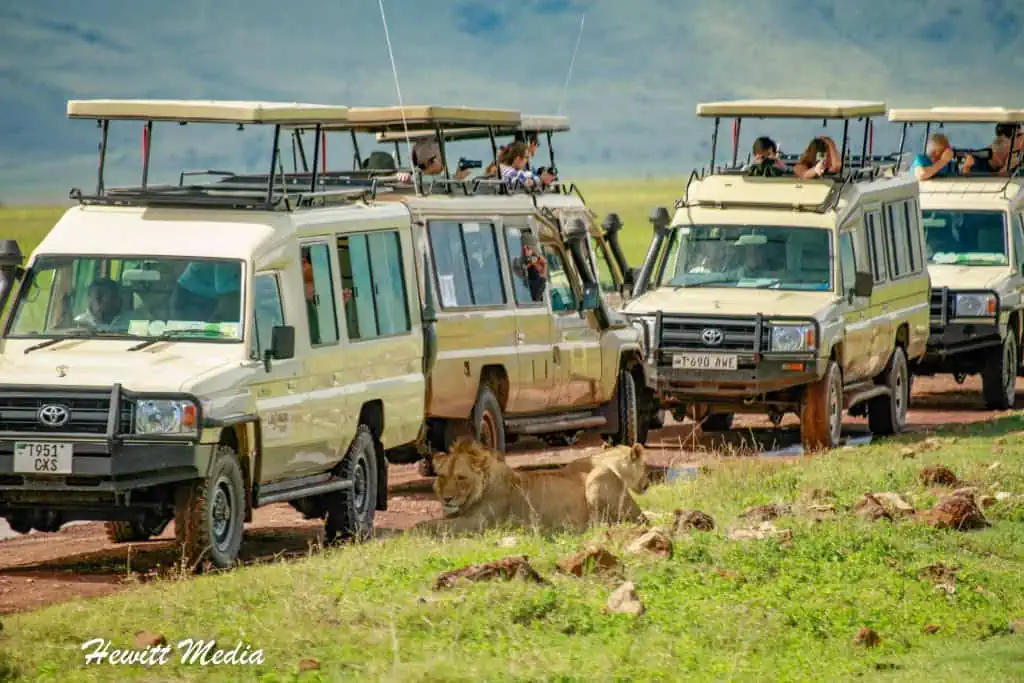
Located in Southeastern Africa, the country of Tanzania is a wildlife traveler’s dream. It is home to many of Africa’s most amazing animals, has some of the world’s best wildlife viewing destinations, and is home to Africa’s tallest mountain.
In my Tanzania safari itinerary, I am going to help you start planning your safari trip to Tanzania by outlining some of the country’s top parks, helping you decide what time of year to plan your trip, and showing you what my recommended Tanzania safari itinerary looks like.
Before You Go on Your Tanzania Safari
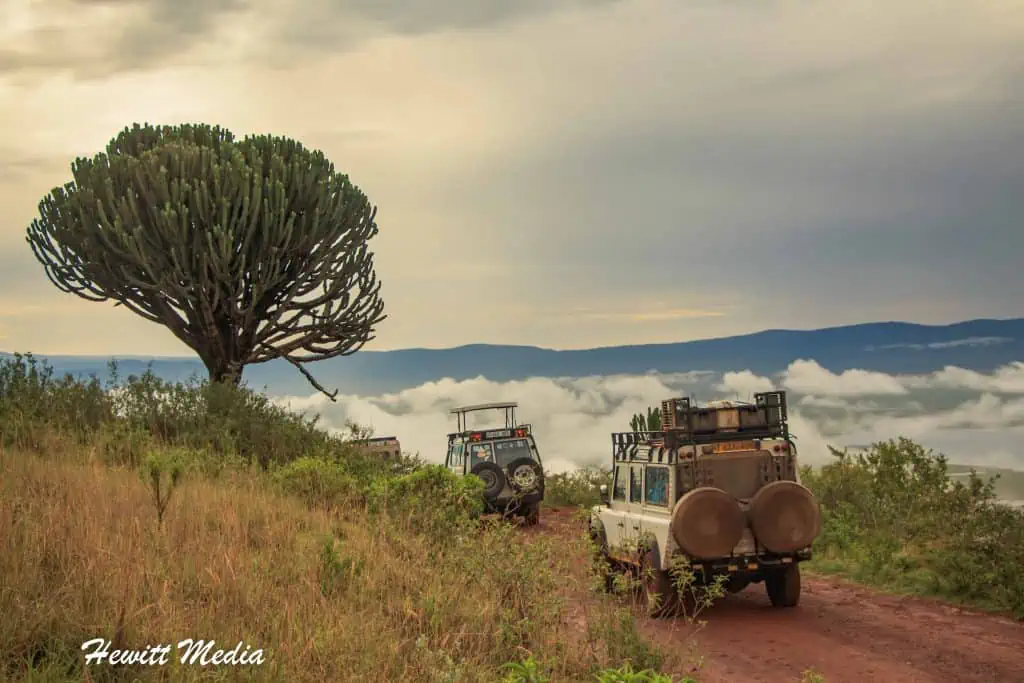
Planning a trip to Tanzania to go on safari can be an incredibly exciting experience, but it can also be a little stressful and overwhelming if you haven’t been to Africa before. If you are planning your first big safari adventure, let me first tell you how excited I am for you. Going on safari, especially in an amazing country like Tanzania, will be one of the most memorable experiences of your life. It only took one visit to Tanzania to get me hooked, and I am sure the experience will be the same for you.
To make the process of planning your Tanzania safari itinerary easier for you, I have included links to some of my most popular safari guides for you to review below. If this will be your first time visiting Africa, I would strongly suggest you review my article on the 20 Tips for Those Visiting Africa for the First Time.
Even if you have been to Africa before, my Safari Packing Guide will help ensure that you have all of the gear and equipment with you to make sure your safari experience is a safe and memorable one. Finally, my Safari Photography Guide will give you plenty of valuable tips and tricks for photographing the wildlife that you see while on safari in Tanzania. Armed with this information, you can be sure that you will capture top-notch photographs to share with your family and friends.
Choosing Which Parks in Tanzania to Visit
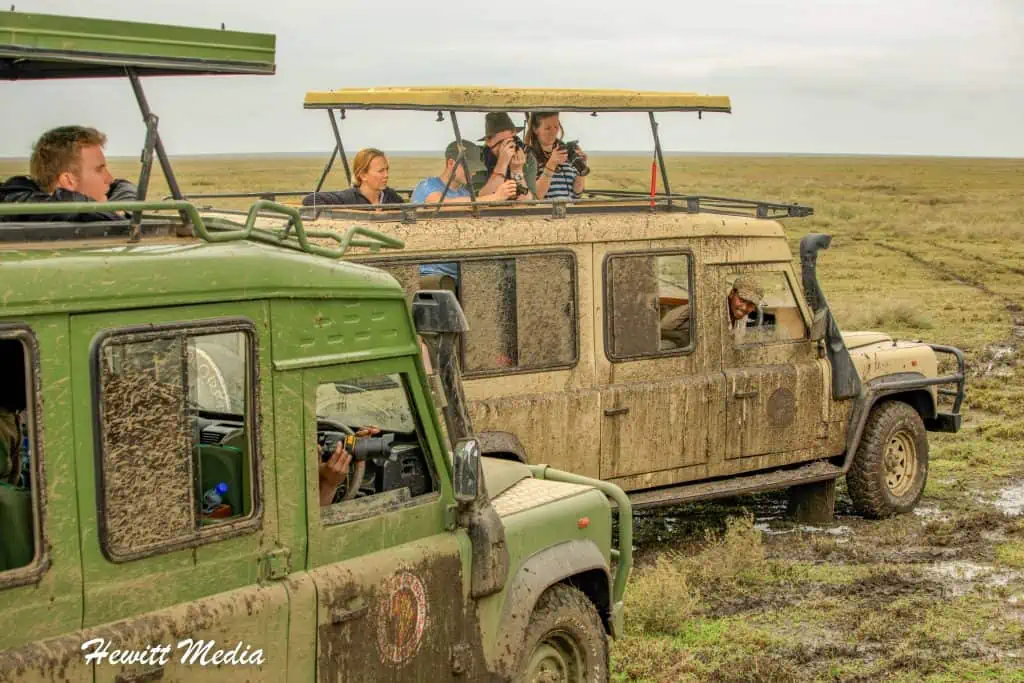
One of the biggest decisions that you will need to make when starting to plan your Tanzania safari itinerary is which of Tanzania’s parks and wildlife areas you will visit during your trip. In this Tanzania safari guide, I include a map of all of Tanzania’s protected areas and my choice of Tanzania’s top national parks to visit.
I also outline each of these parks and discuss what the pros and cons of visiting each park are, what animals you can expect to see when you visit each park, and what time of year it is best to visit each park.
However, as you start to put together your Tanzania safari itinerary, you might have certain animals, landscapes, or events that you want to be sure to see while in Tanzania. For this reason, I have put together this quick reference guide to help you determine which park(s) are best for seeing certain things.
Simply click on the name of the animal or other category below to see which of Tanzania’s parks I would recommend adding to your Tanzania safari itinerary to give yourself the best chance of seeing those animals, landscapes, or events.
Click on the animal or park attribute below to learn more
Several of Tanzania’s national parks consistently have elephants for visitors to spot while on safari. The Ngorongoro Crater is a great spot to see large bull elephants, who migrate to the crater to feed between breeding seasons.
Ruaha National Park is also a great place to spot large groups of elephants while on safari, though your best chance of seeing them in the park is during the dry season when animals are forced to congregate near the remaining watering holes.
If you want to see elephants up close in the wild, then the park you want to make sure you have on your Tanzania safari itinerary is Lake Manyara National Park . The wildlife in the park is more concentrated than in other parks, so up-close animal experiences are more common.
However, the best park to see elephants in Tanzania is undoubtedly Nyerere National Park and the nearby Selous Game Reserve. The park is on the annual elephant migration route and you will find thousands of elephants in the park during their migration.
If spotting lions while on safari in Tanzania is your ultimate goal, then there are plenty of great destinations for you to choose from to accomplish that goal. Except for Gombe Stream, Mahale Mountains, Arusha, and Kilimanjaro National Parks, the rest of the parks that I highlight in this Tanzania safari itinerary offer a lot of great opportunities to spot lions.
As the home to the Great Migration, the Serengeti National Park has some of the highest concentrations of lions in Africa. If you would like a unique lion-viewing experience, I would also suggest checking out Lake Manyara National Park and its famous tree-climbing lions.
However, the best place to visit to be assured of spotting lions while on your safari is the Ngorongoro Crater . With grazing animals in the crater year-round, the lion prides that occupy the crater are typically very easy to find.
As one of the most endangered animals in Africa, the Black Rhino isn’t an easy animal to find while on safari almost anywhere in Africa. Lucky for you, Tanzania is home to one of the best destinations in Africa for viewing Black Rhinos in the wild.
Because it is an enclosed and protected space, the rhinos living in the Ngorongoro Crater are much better protected from poachers than other locations in Tanzania and the rest of Africa. That is why the crater is one of the few places left in Africa where you can view these beautiful creatures in the wild.
For those travelers who have their heart set on seeing wild chimpanzees while on safari, then you will want to be sure to add either Gombe Stream National Park or Mahale Mountains National Park to your Tanzania safari itinerary. Both parks offer incredible wild chimpanzee viewing opportunities but are also much more remote and harder to get to than some of the other parks I highlight in this itinerary.
Gombe Stream was made famous by Jane Goodall, who did most of her chimpanzee research in the park, but Mahale Mountains is my favorite pick for chimpanzee enthusiasts. Not only does it offer some of the best chimpanzee tracking in Tanzania, but there is a greater diversity of other wildlife in Mahale Mountains National Park than there is in Gombe Stream National Park.
While the number of lions and leopards in the infamous Serengeti number is in the thousands, there are only a few hundred cheetahs to be found in the famed park.
There is a chance that you will spot these magnificent predators while on safari in the Serengeti National Park , but you have a far better chance of spotting the speedy cats if you add Ruaha National Park or Tarangire National Park to your Tanzania safari itinerary.
Ruaha National Park is an especially good place to spot cheetahs, despite the large number of other predators, because the park is so large and it is easier for them to stake out territory away from lions and leopards.
If you love giraffes, then you will be delighted to know that most of the top parks in Tanzania offer excellent opportunities to view these beautiful animals. You probably won’t see giraffes when visiting Gombe Streams National Park and Mahale Mountains National Park.
Also, chances are that you won’t spot giraffes inside the Ngorongoro Crater, but you should see them in the surrounding areas of the Ngorongoro Crater Conservation Area. In my opinion, the best parks for spotting wild giraffes are the Serengeti National Park , Lake Manyara National Park , and Tarangire National Park , in order of likelihood of spotting the animals.
Next to black rhinos, African wild dogs are some of the rarest animals that you will be able to spot while on safari in Tanzania. To see these rare and beautiful creatures, you will need to include the right parks on your Tanzania safari itinerary.
The best parks for seeing African wild dogs in Tanzania are Ruaha National Park and Nyerere National Park . If you visit the parks during the dry season when the animals are more concentrated around the watering holes, you have a good shot of spotting wild dogs in these parks.
Spotted hyenas are another animal that you can find in many of Tanzania’s national parks and protected areas. Chances are, you won’t see these unique carnivores in Gombe Streams National Park and Mahale Mountains National Park, and they are rare in parks like Kilimanjaro National Park and Arusha National Park because of their proximity to the city.
However, in parks like the Serengeti National Park , Ngorongoro Crater , and Ruaha National Park , you have an excellent chance of spotting many hyenas.
Few animals in Africa are as incredible to see in the wild as the mighty hippopotamus. These massive and beautiful creatures spend most of their days wallowing in water to protect their delicate skin and then come out at night to feed on grass.
If you would like to see hippos while on safari, I would be sure to add a park with water to your Tanzania safari itinerary. Because it has a constant supply of water year-round, the Ngorongoro Crater would be the top park on my list for seeing hippos.
Other parks that offer a great opportunity to see these African wildlife icons include Lake Manyara National Park , Nyerere National Park , and Arusha National Park .
If you are interested in seeing the Great Migration while on safari in Tanzania, then you will definitely want to make sure that you add the Serengeti National Park to your Tanzania safari itinerary.
The Great Migration, in which upwards of 1.5 million wildebeest and other grazing animals follow the rain between the Masai Mara in Kenya down into the Serengeti in Tanzania and back each year, is one of the world’s most amazing wildlife viewing experiences.
In addition to being able to see millions of grazing animals in one place, the migration also attracts droves of Africa’s big predators to the Serengeti to feast upon them.
The migration reaches the Serengeti around December each year and the animals typically leave by March, so if you want to see the migration in Tanzania, you will want to plan your trip during that time.
Tanzania is a country that is certainly not short on beautiful and breathtaking landscapes. All of the parks that I have included in this guide are incredibly beautiful and worthy of adding to your Tanzania safari itinerary.
However, if incredible landscapes are what you are after, then I would suggest considering Kilimanjaro National Park and Arusha National Park while in Tanzania. In addition to the wildlife that can be found in these parks, both parks offer unique and beautiful landscapes for visitors to enjoy.
Kilimanjaro is home to Mount Kilimanjaro, which is Africa’s tallest mountain and the world’s tallest free-standing mountain. Arusha National Park is home to the incredible Mount Meru and has a fig tree that is so large that you can drive a car through a tunnel in its trunk.
Deciding When to Plan Your Tanzania Safari
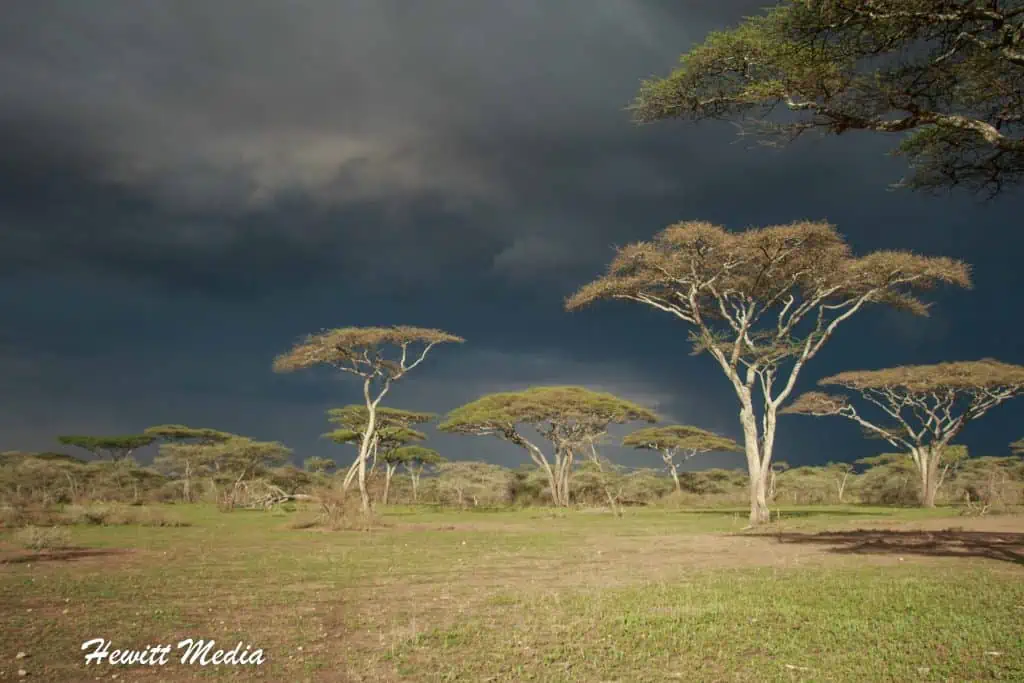
The parks that I have highlighted in this guide are located in different regions of Tanzania, so the best times to plan your Tanzania safari itinerary are going to vary slightly depending on which parks you visit.
For instance, parks like Gombe Streams, Ruaha, and Nyerere are much worse to visit in the rainy months of March and April than some of the other parks in Tanzania.
If you would like to see the Great Wildebeest Migration, then you will want to coordinate your visit for when the Wildebeest are in the Serengeti, which tends to be between December and March.
However, for the most part, the best times to go on Safari in Tanzania is going to be in July through October. These are the driest months of the year and the wildlife is much easier to spot because it is typically concentrated around the watering holes.
Keep in mind, that these are also typically the busiest months of the year for safari in Tanzania, so you might want to target the shoulder months of June or November to have your best shot at good weather and lighter crowds.
Best Times to Plan Your Tanzania Safari Itinerary
My recommended tanzania safari itinerary.
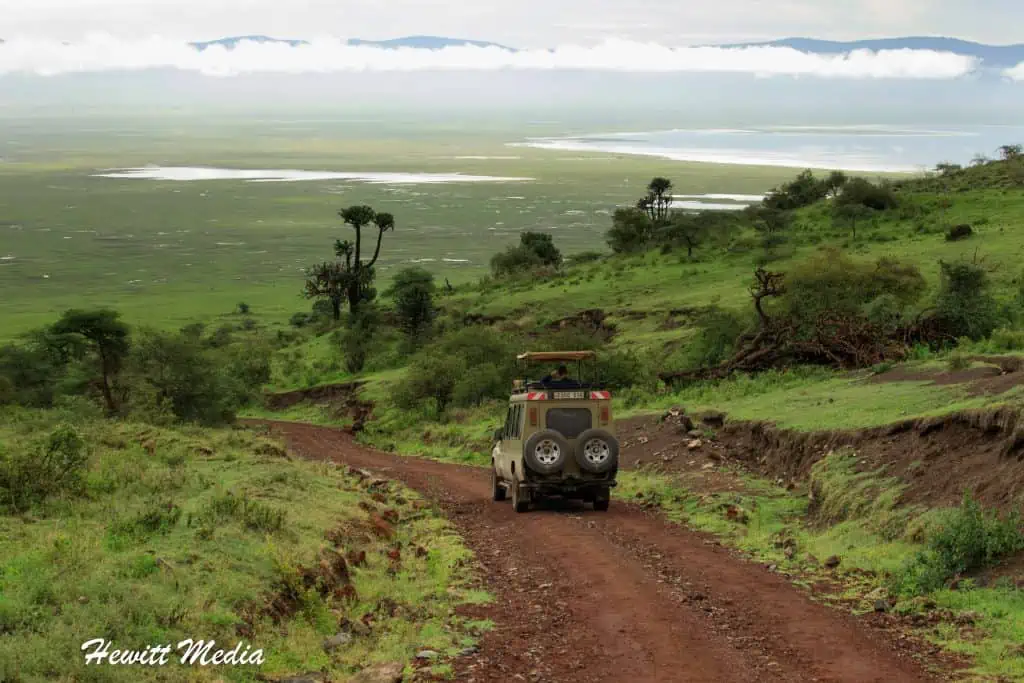
To hit all of the parks on my recommended list, I suggest that you target 6-9 days for your Tanzania safari itinerary, depending on whether or not you want to spend the optional days at the start or end of your trip to visit Kilimanjaro National Park, Arusha National Park, or both.
Using the Tanzania safari itinerary that I outline below, you will be able to hit all six of the parks on my recommended list. Keep in mind, that your permit for the Ngorongoro Crater will only allow you 24-hour access to the crater, so you will want to plan to arrive on night four and spend the night near the crater so that you can start your safari first thing in the morning.
If you would like to plan a shorter trip, I would suggest cutting out a stop at either Arusha National Park, Kilimanjaro National Park, or both. If you would like to spend a longer amount of time on Safari, I would suggest either adding stops at one of the parks not outlined on my itinerary or adding an extra day in the Serengeti.
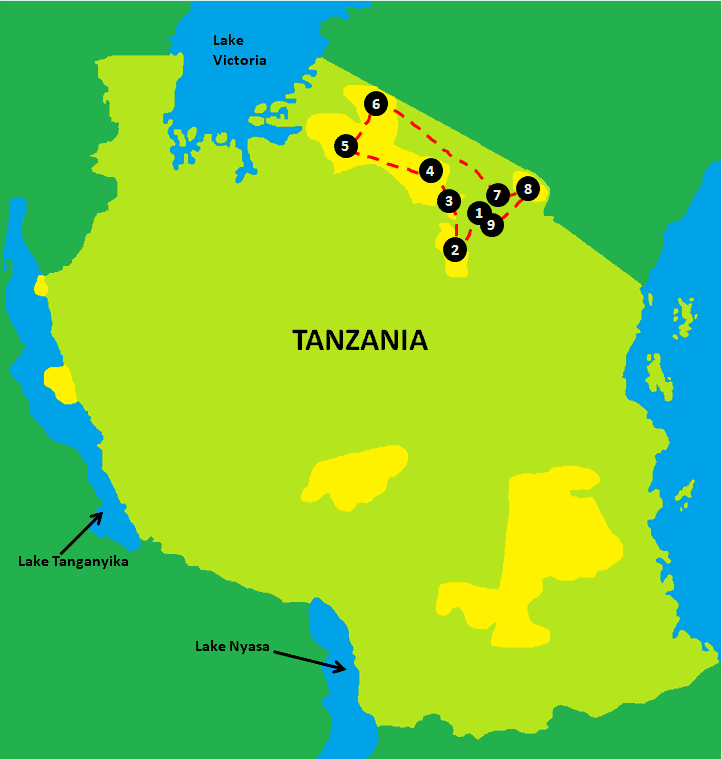
View Larger Map
Tanzania Safari Advice VLOG Episode
Planning a Tanzania safari itinerary is a big undertaking, which is why I am trying to be as detailed as possible when providing my tips on which parks to see, how long to spend there, and what to bring with you on your trip. If you would like to see more of my tips for planning a Tanzania safari itinerary, I would suggest watching my Travel Vlog episode on my Tanzania Safari Advice and Itinerary below.
Tanzania’s Protected Areas
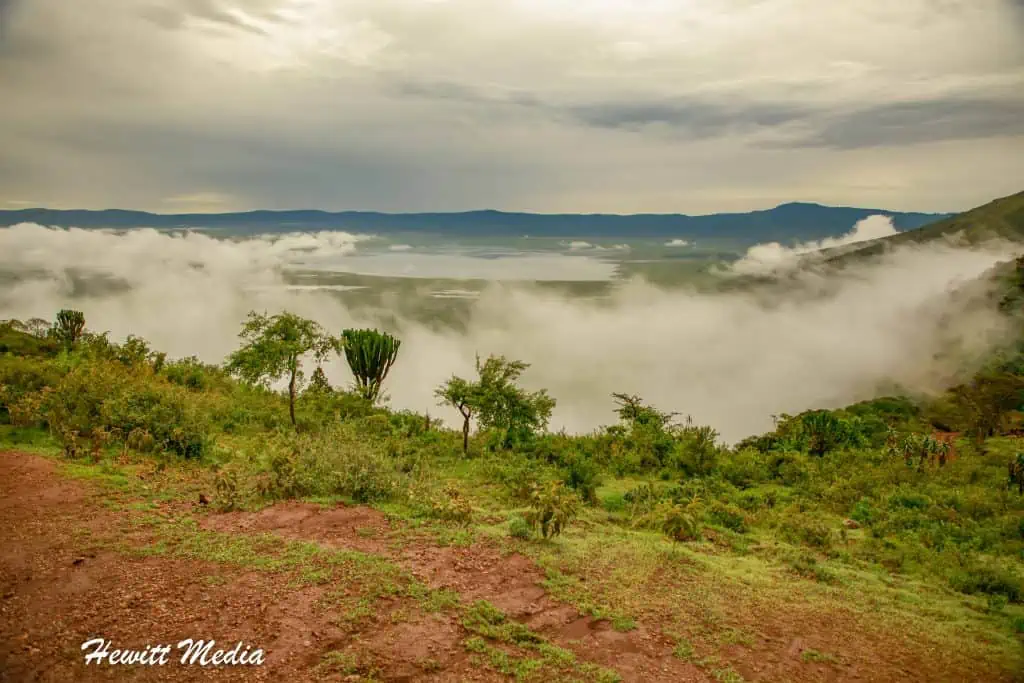
Over the decades, the country of Tanzania has done an incredible job of identifying the most important wildlife areas within its borders and protecting those lands. If you want to go on safari in Tanzania, you certainly won’t have a shortage of destinations to choose from. The country is home to:
- 18 National Parks
- 10 Major Game Reserves
- 2 Marine Park Reserves
- 13 Forest Nature Reserves
- and 3 Game Controlled Areas
While each of the country’s protected areas is spectacular in its own way, I have chosen to focus this Tanzania safari guide on my list of the top parks and conservation areas in Tanzania that I recommend visitors include on their Tanzania safari itinerary.
However, that doesn’t mean that other parks, such as the incredible Katavi or Mikumi National Parks, aren’t worth exploring if you have the time. If you would like an overview of Tanzania’s parks and other protected areas and where they are located, I have included a map below for you to review.
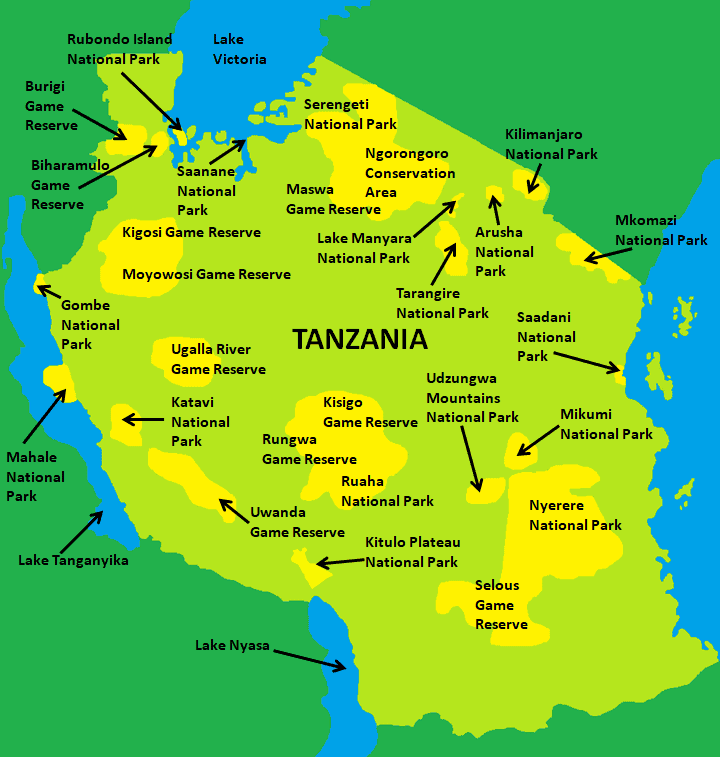
The Top 10 Tanzania Safari Destinations
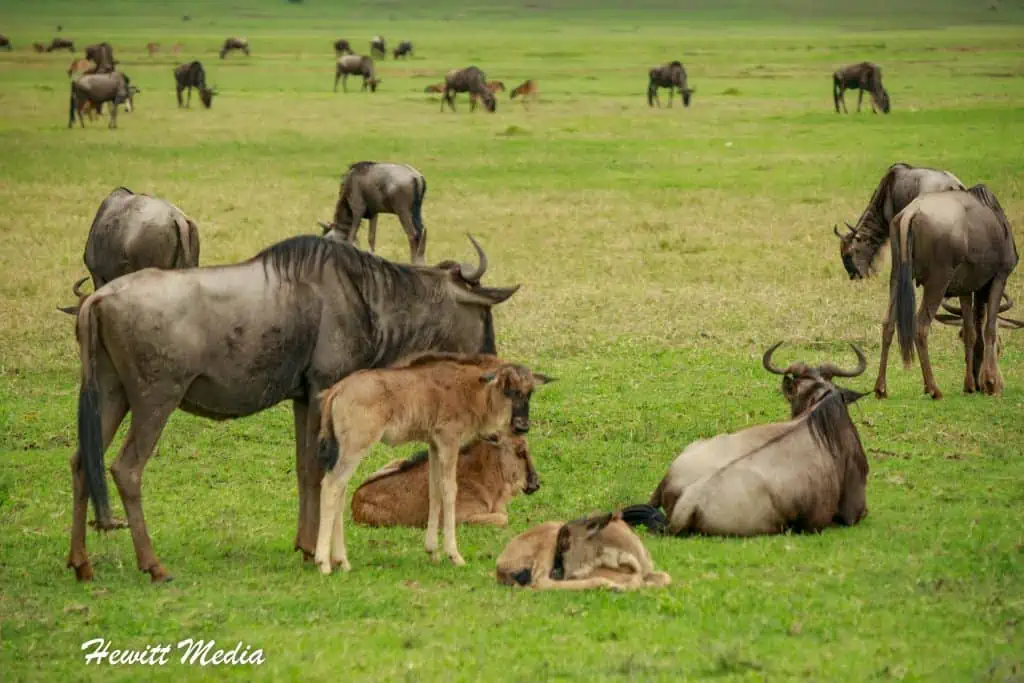
To help you narrow down which parks and wildlife refuges to visit during your safari trip in Tanzania, I have narrowed down the list of options to my Top 10 Wildlife Viewing Areas in the country for you to review. In some cases, I included areas that have very high concentrations of wildlife to see. The Serengeti and Tarangire National Parks fall into this category.
Other locations, like Gombe and Mahale National Parks, were chosen because of the unique wildlife viewing opportunities that they afford travelers.
Finally, parks like Kilimanjaro and Arusha National Parks were chosen both because of their close proximity to the city of Arusha and the unique landscape features that are found within the parks. For an overview of my top 10 recommended safari destinations in Tanzania, please refer to the map below.
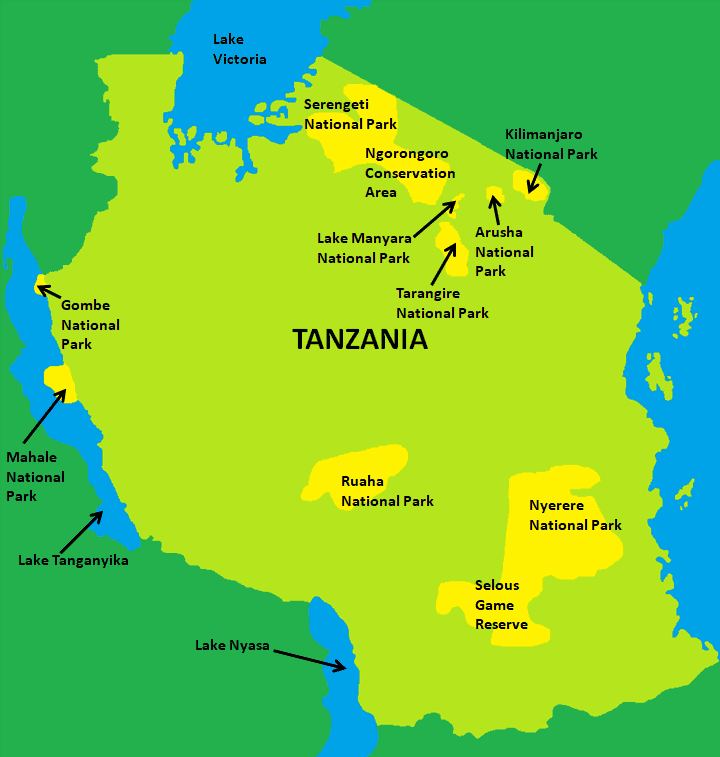
Serengeti National Park
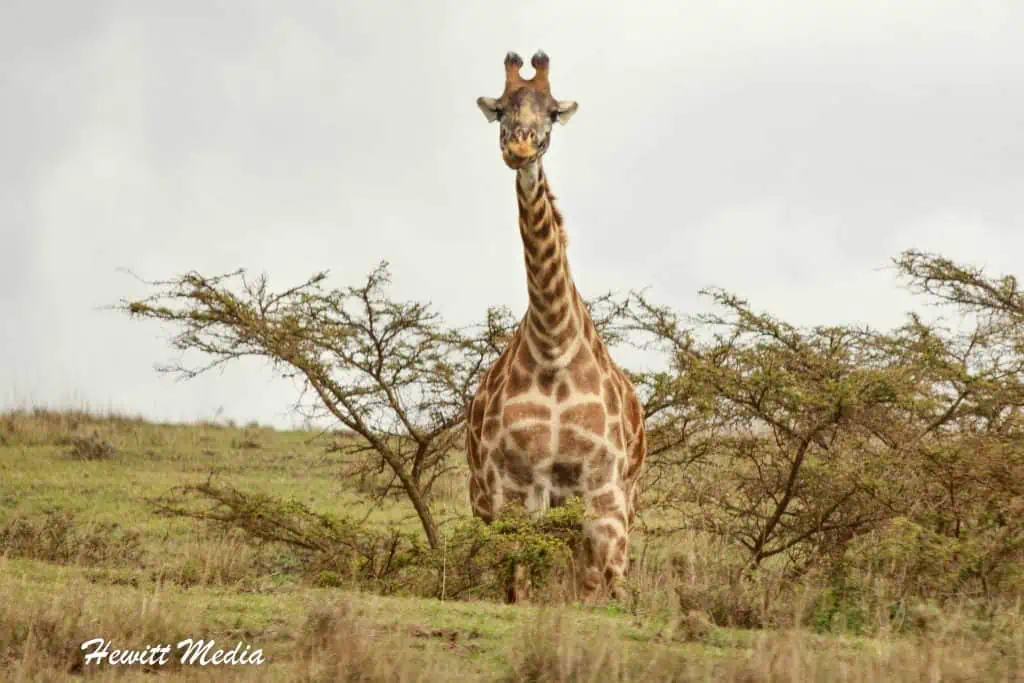
Home to the Great Migration and with the most diversity of wildlife that you will find almost anywhere in Africa, the Serengeti National Park is one of the most iconic wildlife destinations in the entire world. It is one of the most coveted safari destinations in Africa, and for good reason.
It has some of the most authentic wildlife viewing opportunities, is one of the best places to spot Africa’s big predators, has excellent accommodation options, and even offers hot air balloon safaris. Best of all, it is one of the cheapest parks in Tanzania to visit.
If you are going to add the Serengeti to your Tanzania safari itinerary, I would recommend taking the time to tour both the North and the South ends of the park. It is a big park and you will enjoy seeing as much of it as you can. The Serengeti borders the Masai Mara in Kenya, so if you want to really extend your safari itinerary, you can book a tour of the Masai Mara on the tail-end of your Tanzania safari.
Ngorongoro Crater Conservation Area

The Ngorongoro Crater is perhaps one of the best places in all of Africa to see all of the Big Five animals of Africa in one day. This includes the increasingly endangered black rhino. Because the crater is protected by steep walls and has available water year-round, the grazing animals in the crater don’t need to migrate.
This attracts all of Africa’s big predators, who can also be found in the crater all year long. The only downside to visiting the crater is that it can get quite busy during the peak safari season, so you will need to be sure to book your safari well in advance if you want to add the Ngorongoro Crater to your Tanzania safari itinerary.
Tarangire National Park
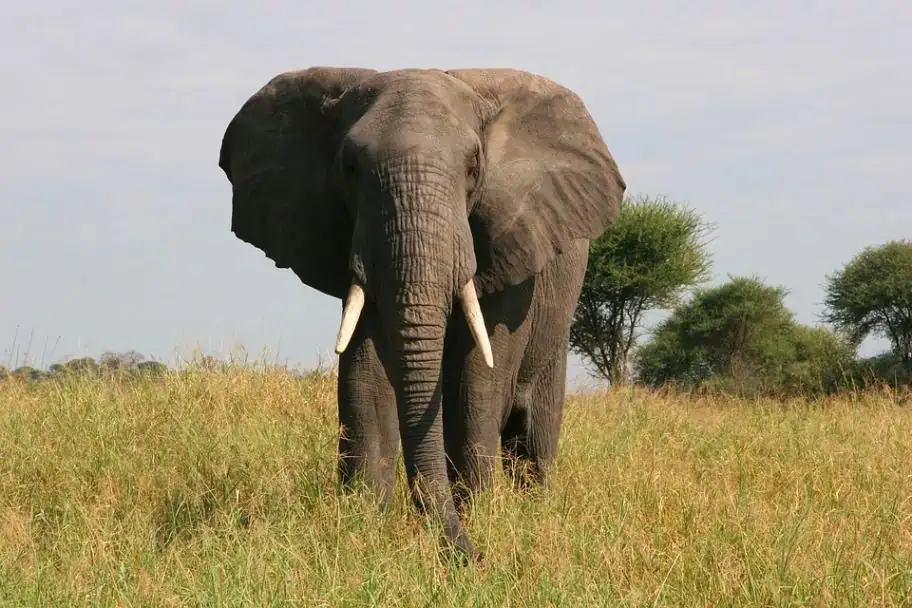
With the second largest concentration of wildlife in Tanzania outside of the Serengeti, Tarangire National Park is definitely a park that you will want to have on your Tanzania safari itinerary. It isn’t located on the traditional safari route, and therefore typically left off the itinerary for shorter safaris.
This means that it is typically much less crowded than the other big parks in Tanzania. During the peak safari season, the wildlife is typically very concentrated within the park, which means there are excellent wildlife viewing opportunities.
The park even offers night safaris, which is an incredible experience. If you want to see Tarangire National Park, I would recommend avoiding the wet season as the wildlife tends to be dispersed inside the big park and can be difficult to spot.
Lake Manyara National Park
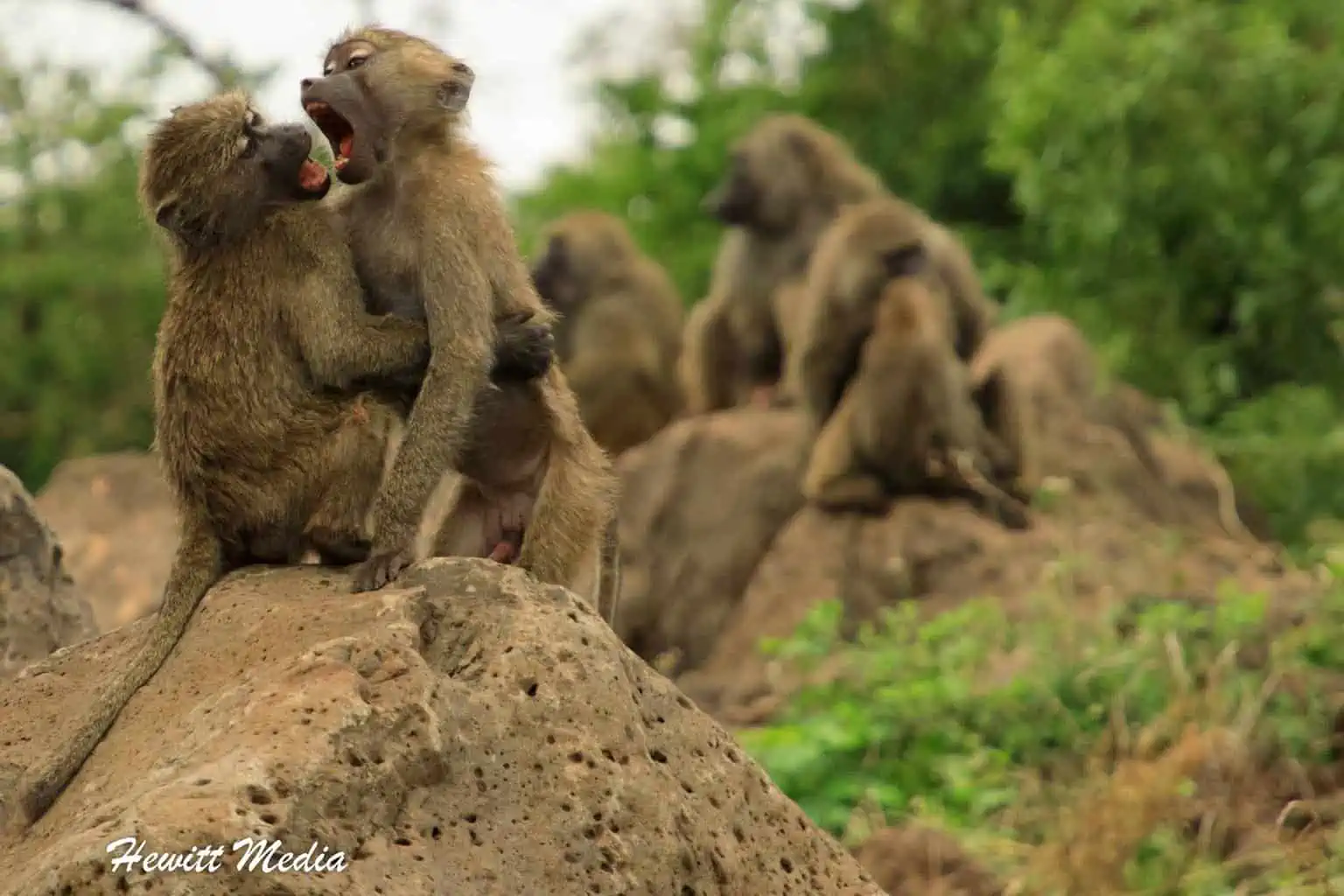
What Lake Manyara National Park lacks in size, it makes up for in the show. There are as many as 11 different ecosystems within this small national park, which means there is a wide variety of wildlife that calls the park its home.
The big draw in Lake Manyara is the famous tree-climbing lions. Few other places in Africa can you see lions who climb as often as at Lake Manyara. In my opinion, that alone is worth adding Lake Manyara to your Tanzania safari itinerary.
However, one of the more underrated aspects of the park is that it offers probably the best opportunity in Tanzania to see elephants up close. The wildlife in the park is typically concentrated in small pockets, which makes getting close much easier.
Kilimanjaro National Park
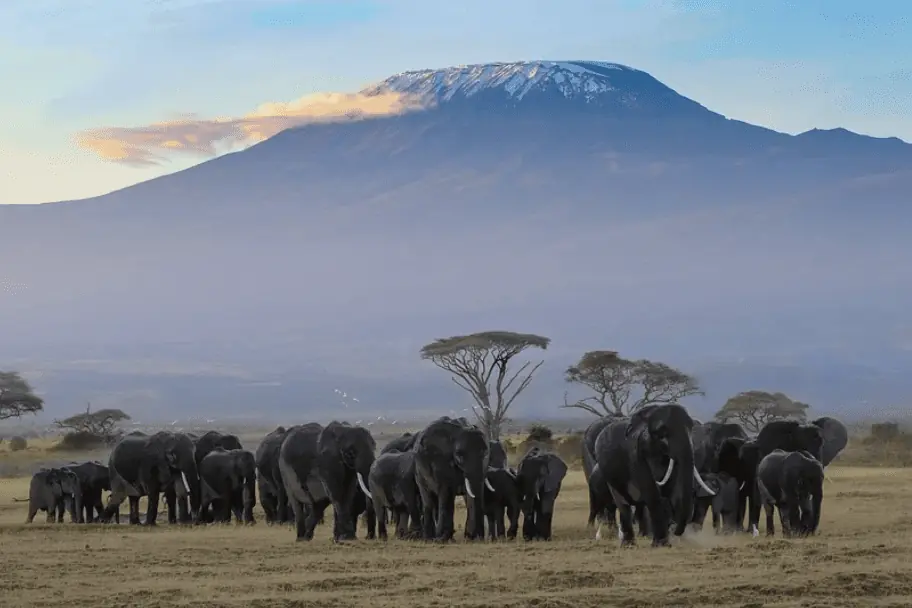
Home to Africa’s tallest mountain and the world’s tallest free-standing Mountain, Kilimanjaro National Park is a park unlike others that you will find in Tanzania. Most who visit the park do so to climb the mountain, but it is also a decent safari location if you are looking to add on a park either at the beginning or end of your Tanzania safari itinerary. It is far less likely that you will spot any of Africa’s big predators, such as lions, in the park, but you do have a good chance of seeing other wildlife.
Arusha National Park
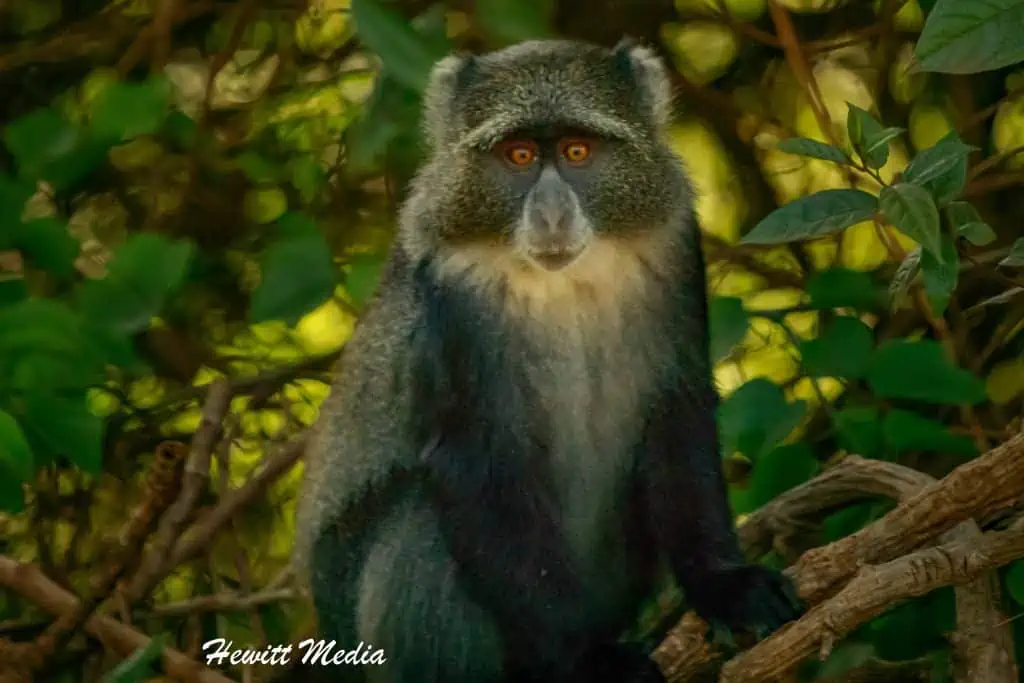
One of the biggest draws to visiting Arusha National Park is its proximity to the city of Arusha and Kilimanjaro National Airport, which makes it a great option if you would like to add on a park either at the beginning or the end of your Tanzania safari itinerary.
It is relatively easy to get to and has some truly breathtaking landscapes that you can explore. One of my favorite spots inside the park is the giant fig tree that has a tunnel carved in it you can actually drive your car through. The park may not offer as good of opportunities to lions as other parks, but you do have a great chance of spotting other wildlife.
Gombe Stream National Park
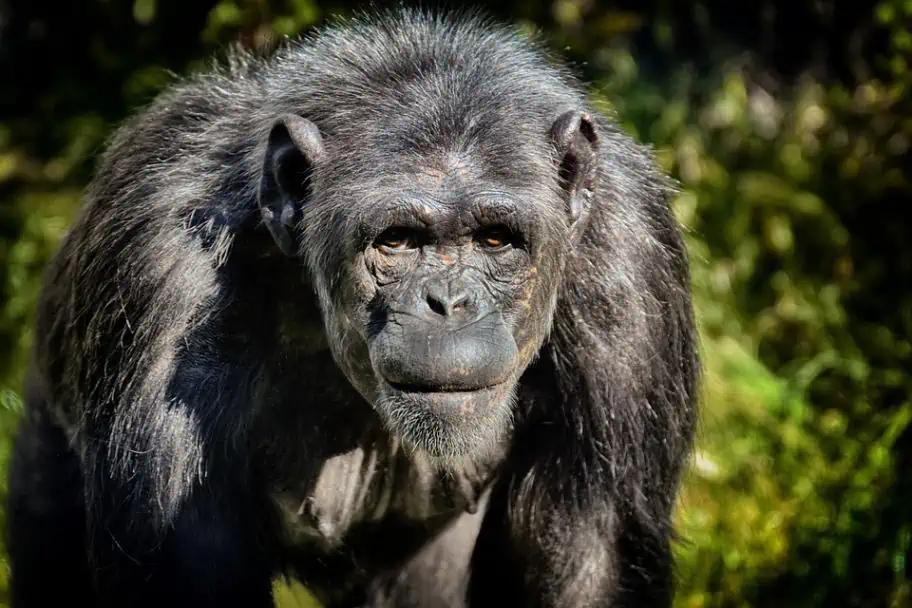
Although Gombe Stream National Park is one of Tanzania’s smallest parks, it offers visitors some unique and spectacular wildlife viewing opportunities. Made famous by Jane Goodall, who performed much of her Chimpanzee research in the park, Gombe National Park is one of the best places in Tanzania to spot wild Chimpanzees.
Because of its remote location, you will either need to take a long bus or car ride from Arusha to get to Gombe National Park or take a bush flight. The park typically isn’t crowded, which is a perk, but the amount of accommodations is limited. Because of this, you will want to book your stay well in advance if you want to add Gombe Streams National Park to your Tanzania safari itinerary.
Mahale Mountains National Park
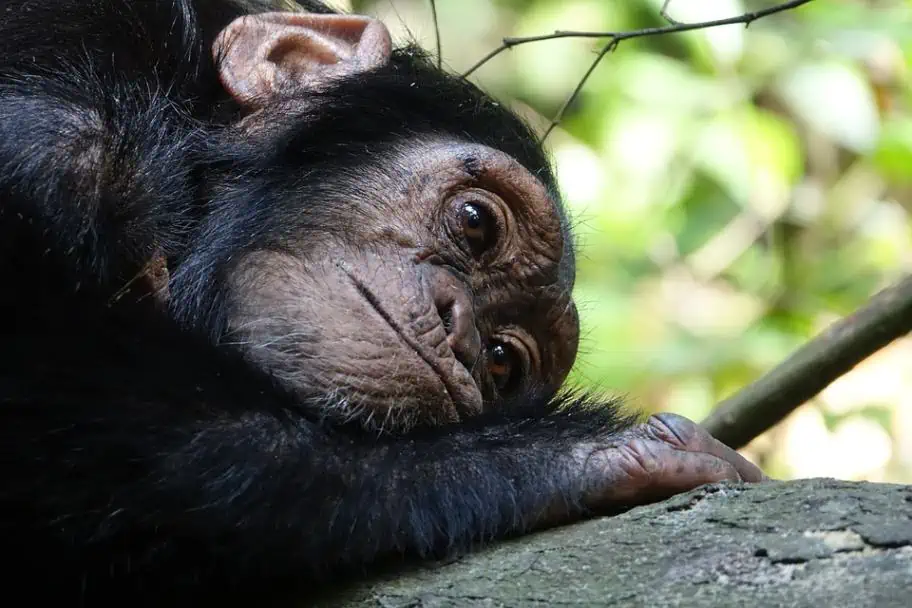
One of the most underrated national parks in Tanzania is undoubtedly the incredible Mahale Mountains National Park . In addition to having the best Chimpanzee tracking experience in all of Tanzania, the park also offers fishing and kayaking tours, spectacular beaches to enjoy, and a greater variety of wildlife for visitors to see than nearby Gombe National Park.
However, its remote location means that you will either need to take a long car ride or a bush flight to get to the park and the accommodations near the park are limited. In addition, Mahale Mountains is also one of the more expensive parks in Tanzania to visit. Because of the limited accommodations, you will want to be sure to book your safari well in advance if you want to add Mahale Mountains National Park to your Tanzania safari itinerary.
Ruaha National Park
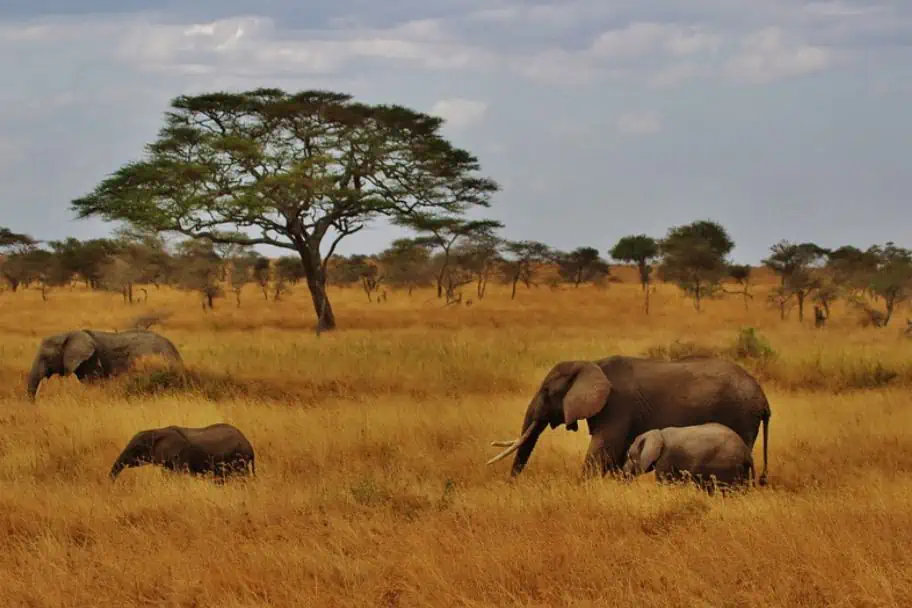
While it is no longer Tanzania’s largest Park, the beautiful Ruaha National Park still offers visitors some of the wildest and most authentic wildlife encounters in Tanzania. The park is famous for its breathtaking beauty, incredible ancient baobab trees, picturesque rivers, and dramatic landscapes.
If you are coming to Tanzania to see African Wild Dogs, which are quite rare, then adding Ruaha National Park to your Tanzania safari itinerary may be your best bet to see them. The park is also home to some unusual antelope species that are harder to find in some of the country’s other parks.
Because of its relatively remote location, Ruaha National Park doesn’t get as busy as the more famous parks in Tanzania. However, the park also doesn’t have as many accommodation options as the busier parks do. Because of that, you will want to book your safari in Ruaha well in advance to ensure you have a place to stay.
When you visit, I will make sure to target the dry season in Tanzania. During the wet season, wildlife can be much more difficult to spot because the animals are not congregating around watering holes.
Nyerere National Park
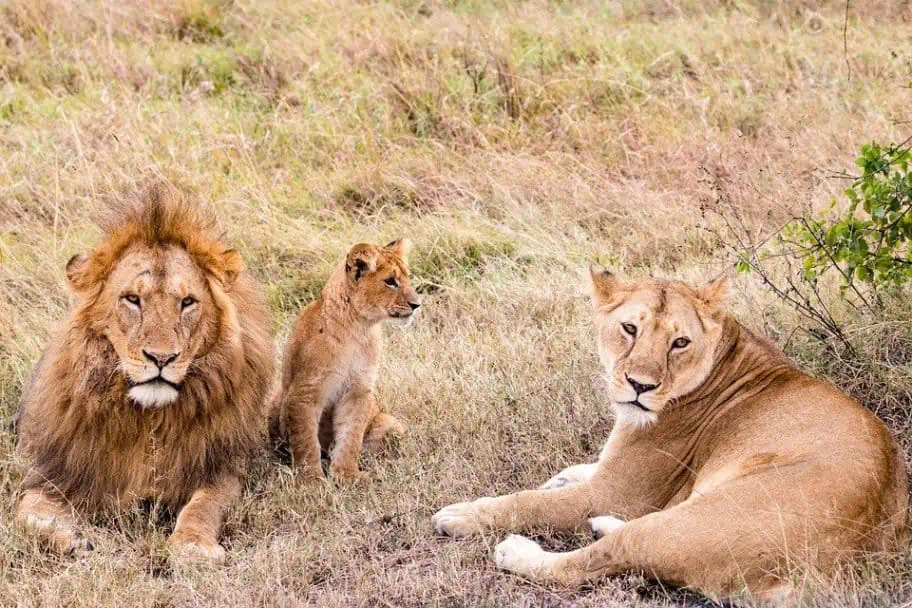
One of the newest national parks in Tanzania, Nyerere National Park is now also the country’s largest. It was formed from a large portion of what was the northern region of the Selous Game Reserve. The large expanses of raw African wilderness in the park really showcase the beauty of the African savannah.
If you love elephants, then you will definitely want to add Nyerere National Park to your Tanzania safari itinerary as it is one of the best places in Tanzania to witness the annual elephant migration. If you visit during the right time of year, you will get to see thousands of elephants in the park.
Nyerere National Park is Very Remote
The park is rather remote, so you will either need to take a long drive or bush plane to get there, so plan accordingly if you want to visit. The park is also in a malarial region of Tanzania, so you will want to ensure that you have proper mosquito netting and insect repellent for your safari.
When you visit, I will make sure to target the dry season in Tanzania. This is another park where wildlife can be much more difficult to spot because the animals are not congregating around watering holes during the rainy season.
Don’t Forget to Subscribe to My Adventures!
Type your email…

Let Me Help You Save On Your Next Adventure!
‘start exploring today’ merchandise available now.
Published by Josh Hewitt
Avid traveler and photographer who loves to see new places, meet new people, and experience new things. There is so much this world can teach us, we just need to explore! View all posts by Josh Hewitt
Related Articles
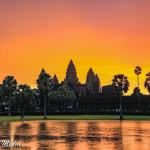
Siem Reap, Cambodia Guide: A Complete Travel Planner
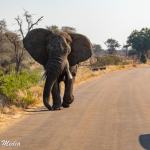
The Ultimate Kruger National Park Safari Planning Guide
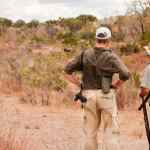
How To Backpack When Planning to Solo Camp Kruger National Park, Africa
2 comments ›.
Thanks for sharing this informative blog with us. This blog will help us while travelling in Tanzania. There is no need to find national parks because you share all the information about national parks in this blog.
No problem! I am so happy to help! Safe travels!! 😄
Leave a Reply Cancel reply
[…] Late November or late February are particularly recommended as they offer a balance between good weather and slightly fewer…
I agree!! It is such an incredible place!
Thailand offers a captivating blend of vibrant culture, stunning landscapes, and warm hospitality, making it a top destination for travelers…
Thank you!!
Discover more from Wanderlust Travel & Photos
Subscribe now to keep reading and get access to the full archive.
Continue reading

Subscribe To My Adventures!
The Rough Guide to planning a Tanzania safari
Book your individual trip , stress-free with local travel experts
- roughguides.com
- how-to-plan-a-safari-tanzania
Plan your tailor-made trip with a local expert
Book securely with money-back guarantee
Travel stress-free with local assistance and 24/7 support
written by Richard Mellor
updated 12.10.2022
Thanks to the presence of some of Africa's biggest and best national parks, a Tanzania safari is a tour de force. It’s also a dauntingly large country, though, so a trip here requires some advance decision-making. Here's everything you need to plan a safari in Tanzania. For more inspiration, read our run-down of the best things to do in Tanzania .
Which region should I choose?
When is the best time for a safari in tanzania, do any parks specialise in particular animals or activities, what about the great migration, how do i get around on safari in tanzania, do i need a guide, family safari in tanzania, can i go to the beach afterwards, how long do i need for a tanzania safari.
This article is inspired by our Rough Guides guidebooks — your essential guides for travelling the world.
This is the big decision. Tanzania has three main safari areas: the Northern and Southern Circuits, and Western Tanzania. Travelling between each is a challenge, so most visitors tend to stick with just one.
Containing the Serengeti and Ngorongoro Crater, Tanzania’s Northern Circuit is decidedly the headline act. This is where you’ll find both the most prolific wildlife (aka "game") and serial crowds. Travel to whichever Serengeti corner the spectacular Great Migration currently occupies, and 4x4 vehicles will generally be bumper-to-bumper.
If you’ll happily swap a few animal sightings for extra tranquility and authenticity, head south. The massive main parks here, Selous and Ruaha, are untamed, multi-dimensional expanses where tree-clogged waterways give way to parched plains. You have to work harder to see wildlife, but spying other humans is also rare.
The still-wilder west offers equally good game (including the Mahale Mountains’ chimpanzees) blended with serious remoteness. Parks like Katavi are the preserve of long-term Tanzania safari junkies seeking a new fix.
Inspired by Tanzania safari? Explore more safari options in Africa.

Going out for a game drive © AdangRuj/Shutterstock
For wildlife sightings in the west and south, June to October is the best time to plan your Tanzania safari. This is dry season, which means vegetation is lower, improving visibility. There are fewer mosquitos to contend with too. It also means animals tend to congregate around known watering holes.
To see the Great Migration in the Serengeti, June and July are the best months. In April and May several parks in the south and west close to visitors, while the parks in the north can be visited all year round. The northern parks also tend to be more crowded.
Where to stay in Serengeti:
- Africa Safari Maasai Boma Camping
Set in Serengeti, Africa Safari Maasai Boma Camping offers free WiFi, and guests can enjoy a restaurant, a bar and a garden. Guests at the camping can enjoy a buffet or a halal breakfast.
Keekorok is 43 km from the accommodation, while Keekorok Airport is 45 km away. The nearest airport is Keekorok, 45 km from Africa Safari Maasai Boma Camping, and the property offers a paid airport shuttle service.
- Serengeti Mawe Camp
With river views, Serengeti Mawe Camp is located in Serengeti and has a restaurant, room service, bar, garden and terrace. Both WiFi and private parking are available at the lodge free of charge. There is a fully equipped private bathroom with shower and free toiletries. A continental breakfast is available daily at Serengeti Mawe Camp. There is a shared lounge at this property and guests can go hiking nearby.
- Mbalageti Serengeti
Boasting an outdoor swimming pool and free WiFi access, Mbalageti Serengeti is located inside the Serengeti National Park. Guests can have a drink at the onsite bar and relax on the terrace. The units in the lodge are fitted with a fan, safety deposit box and bed linen. While some of the units feature a minibar, fridge and sofa, all the units are fitted with a wardrobe and mosquito net.
A continental breakfast is served daily at the property. Guests can have a meal at the onsite restaurant that specializes in African and international cuisines.
- Africa Safari Serengeti Ikoma
With garden views, Africa Safari Serengeti Ikoma is set in Serengeti and has a restaurant, a 24-hour front desk, bar, garden and terrace. Both WiFi and private parking are available at the lodge free of charge. There is a private bathroom with shower and a hairdryer in each unit, along with free toiletries. A continental breakfast is available every morning at Africa Safari Serengeti Ikoma.

A lone giraffe in Ruaha National Park © UlangaTz/Shutterstock
Ruaha National Park has the largest elephant and giraffe population of any African reserve. That's why it's sometimes known as "Giraffe Park". It's also home to 10% of the world’s lion population. Selous is Tanzania’s best national park for seeing rare wild dogs and – together with the Ngorongoro Crater – the best place to see rhinos.
Lovers of the endangered cheetah are directed to the Serengeti’s Ndutu Safari Lodge or Namiri Plains, ideally during January’s calving season. Walking safaris are available in most parks, but try Beho Beho camp in the Selous to enjoy them in league with some of Tanzania’s finest guides.
Looking forward to enjoy the beauty of Tanzania's parks to the full? Check out our 7-days tailor-made park tour .

Elephants have a drink at the watering hole © Andrew Molinaro/Shutterstock
Dependent on the caprice of rainfall, this never-ending procession of hundreds of thousands of wildebeest – plus vast zebra and gazelle herds – can usually be accurately pinpointed to certain Serengeti areas at certain times of year.
September and October see the skittish omnivores attempt risky crossings of the Mara River – optimum time for lion, leopard, cheetah, crocodile and hyena to strike. This spectacle happens in the Serengeti’s further-flung north.Go to the Lamai Wedge to watch it unfold with some semblance of exclusivity.

If you time it right, you can see the wildebeest migration © GUDKOV ANDREY/Shutterstock
Related articles from the blog

Light Cessna planes – dinky, 2-18-seat affairs in which you can sit beside the pilot – are the standard transport mode between Tanzania’s camps. In fact, for visitors to the remote south and west regions, they’re the only means of getting from A to B. If you're a nervous fliers be prepared; otherwise, the experience tends to be magical.
It’s possible to do the Northern Circuit by road, but – despite plentiful concrete – this is a long-winded process thanks to Tanzania’s size. Then again, you do earn the opportunity to stop in non-tourist towns and villages, and sample local life.
Inspired to experience safari? Check our 10-days tailor-made luxurious tour to Tanzania.
Safari in Tanzania © Shutterstock
Having a guide for your trip is definitely advised. In fact, in many parks – the Serengeti included – you must travel with one by law. Having a guide also means you needn’t worry about park entry fees. Even more important is the fact that guides are trained to spot wildlife and and have superior local knowledge, so you're more likely to see the animals.
Most guides are charming, too, making their constant company a pleasure rather than a chore. Rough Guides works with local experts to provide qualified guides.
Read more about how to safari safely and ethically.
The Rough Guides to Tanzania & Zanzibar and related travel guides
In-depth, easy-to-use travel guides filled with expert advice.

With diverse wildlife and white sandy island beaches, Tanzania is perfect for a family holiday. Safari is a great experience for children, but children under five will be along for the ride only. The type of safari that'll suit you best depends on the age of your youngest child. The older your child is, the more options there are. Whichever type of safari you choose, a good guide is the key to making sure you and the kids get the most from it.
You can also easily combine a safari with a beach holiday in Tanzania. There are plenty of family-friendly beach options along the Tanzanian coast, such as beaches on the Mafia island or Zanzibar.
South Africa is a very popular destination, so check the best routs of South Africa to find some inspiration for the future holidays.

Matemwe beach, Zanzibar. Tanzania © Marius Dobilas/Shutterstock
Most visitors do. The main draw is Zanzibar, an Indian Ocean island whose beautiful name is adequately matched by a glut of white-sand beaches and teeming coral reefs. Hotels here range from billionaire boltholes to very affordable, charming guesthouses.
Just south of Zanzibar is the quieter and similarly idyllic Mafia Archipelago, especially good for diving. Other options include Pemba, a more remote isle, and the mainland, where a top-notch villa and beach lodge scene has more recently sprung up.
Where to stay in Zanzibar:
- Antonio Garden Hotel
Featuring a bar and a garden, Antonio Garden Hotel is located in Zanzibar City, 400 m from Stone Town Beach and 700 m from Peace Memorial Museum. Among the facilities of this property are a restaurant, a 24-hour front desk and room service, along with free WiFi throughout the property. The hotel features family rooms.
- Sunny Palms Beach Bungalows
Sunny Palms Beach Bungalows features a restaurant, fitness centre, a bar and shared lounge in Zanzibar City. Each accommodation at the 4-star hotel has pool views, and guests can enjoy access to a garden and to a private beach area. The accommodation offers a 24-hour front desk, room service and currency exchange for guests.
- Zanzibar Palace Hotel
Zanzibar Palace Hotel is located in Stone Town on Zanzibar Island. It offers individually decorated suites with free Wi-Fi. The beach is within 1 km from the hotel where guests can enjoy water activities.
All suites feature Zanzibari, Arabic and English décor and are fitted with tiled floors. Each one includes a seating area with a flat-screen TV and telephone. Some suites offer a balcony and a sun deck with a hot tub.
On the Northern Circuit, spending 2-3 nights at each park will give you time to enjoy every experience – daily game drives, often plus Maasai village visits and walking safaris – without risking cabin fever. Slightly longer per camp is advised in the South, however, to enable true immersion.
There are lots of fantastic safari destinations in Africa. Check out the best safari lodges in Kenya for inspiration.
Tanzania safari is a trully unforgetable expirience. For more inspirational travel tips check our inspirational guidebook, The Rough Guide to the 100 Best Places on Earth 2022 .
We may earn commission when you click on links in this article, but this doesn’t influence our editorial standards. We only recommend services that we genuinely believe will enhance your travel experiences.
Top image © Vaclav Sebek/Shutterstock

- Nature & Wildlife
- National Parks & Reserves
- Tanzania and Zanzibar
- East Africa
- Inspiration
- Travel Tips
- Where to stay
- Tanzania & Zanzibar
Planning your own trip? Prepare for your trip
Use Rough Guides' trusted partners for great rates
Find even more inspiration for 95 here
Ready to travel and discover tanzania & zanzibar, get support from our local experts for stress-free planning & worry-free travels.
African Safari Tours
- Arusha, Tanzania
- [email protected]
- Call/ Whatsapp +255 745504340
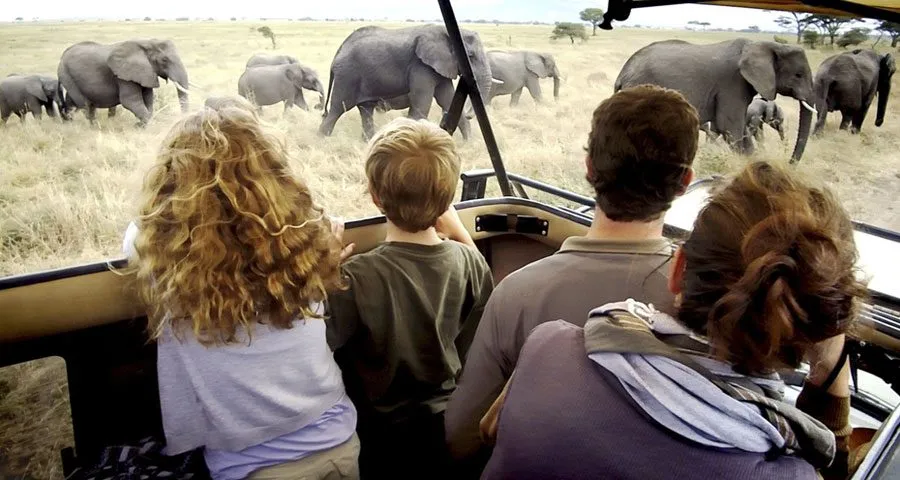
10 Tips for Planning a Perfect Tanzania Family Safari
How to plan an african safari for kids of all ages.
Dreaming of an awe-inspiring family vacation? Look no further than a Tanzania family safari. Imagine witnessing majestic elephants, elusive leopards, and graceful giraffes up close, all while creating cherished memories with your loved ones. In this comprehensive guide, we’ll navigate through the intricacies of planning a flawless Tanzania family safari. Whether you’re a wildlife enthusiast, an adventure seeker, or simply seeking quality family time, these 10 expert tips will help you make the most of your once-in-a-lifetime experience.
Tanzania is a magical place that offers endless adventure for families who love to explore the wild side of life. From stunning wildlife and landscapes to warm, friendly people, Tanzania has it all.
If you’re planning a family safari in Tanzania, here are 10 tips to make your trip perfect. This is the best tips for a family safari in Tanzania when traveling to Africa.
Is Tanzania good for families?
Yes, Tanzania is a great destination for families! Tanzania offers a wealth of diverse wildlife , breathtaking landscapes, and cultural experiences that can be enjoyed by families of all ages. Here are some reasons why Tanzania is a good destination for families:
Wildlife and Nature : Tanzania is home to world-renowned national parks and wildlife reserves, such as Serengeti National Park, Ngorongoro Conservation Area, Tarangire National Park, and Manyara National Park, where families can witness the iconic African wildlife, including lions, elephants, giraffes, zebras, and more, in their natural habitats. Tanzania also has beautiful landscapes , such as Mount Kilimanjaro, the highest peak in Africa, and stunning beaches along the coastline of the Indian Ocean.
1. Best family Safari tour operators in Tanzania
Choosing the right Tanzania family safari tour operator is essential to ensure a smooth and enjoyable safari experience for your family. Here are some tips on how to choose the right tour operator:
Look for reputable companies with a proven track record of organizing family safaris in Tanzania. Check their websites, read reviews , and ask for recommendations from friends or family who have previously done a family safari in Tanzania.
How to find the best tour operators who offer family safari tours in Tanzania? Research and Compare, Experience and Expertise, Warm Hospitality, Safety, Guided Safaris, Family-Friendly Lodging, Educational Opportunities, Wildlife and Nature.
Firstly, look for one that specializes in family safaris – they will be well-equipped to cater to all ages and interests. Secondly, check their safety record and ensure they have qualified guides who prioritize safety above all else. Thirdly, read reviews from other families who have traveled with them before to get an idea of what to expect.
2. Tanzania Family Safari Safety and Health
Safety is crucial, especially when traveling with children. Follow all safety guidelines provided by your guides and lodge staff, and be cautious during game drives, nature walks, and other activities. Also, carry a basic first aid kit and any necessary medications for your family.
3. Accommodation Options for family Safari Tours in Tanzania
Family-Friendly accommodation in with different options of Lodging: Tanzania has a wide range of family-friendly accommodations, including lodges, tented camps, and resorts that cater to the needs of families.
These accommodations often offer amenities such as family rooms, swimming pools, playgrounds, and kid-friendly meals to ensure a comfortable and enjoyable stay for families.
4. Safari Guide kids friendly for Tanzania families Safari
Our best safari tour guide for children in Tanzania are experienced, knowledgeable, patient, engaging, safety-conscious, flexible, and passionate about wildlife and nature.
A well-prepared and child-friendly safari guide can make the safari experience enjoyable, educational, and memorable for children, creating a lifelong appreciation for nature and wildlife. We select a safari tour guide for children in Tanzania.
Our Safari Tour Guide is experienced, knowledgeable, patient, and engaging. Here are some qualities to consider when choosing the best safari tour guide for children: Experience and Knowledge. Child-Friendly Approach. Safety Consciousness. Engaging and Interactive. Flexibility and Patience. Excellent Communication Skills. Passion and Enthusiasm.
5. Best family Safari Activities in Tanzania
Tanzania is a dreamy destination for families seeking an unforgettable safari adventure. With so many options to choose from, it can be overwhelming to decide which activities to include in your itinerary. Fear not, we’ve rounded up the best family-friendly safari activities that will make memories to last a lifetime.
Wildlife spotting
Tanzania’s national parks are home to some of Africa\’s most magnificent creatures, including lions, elephants, zebras, and giraffes. Embark on a guided game drive or walking safari with a knowledgeable ranger who will share interesting facts about each animal you encounter.
Hot air balloon ride
For a truly unique perspective of Tanzania’s vast landscapes, take to the skies in a hot air balloon. Float above herds of wildebeest and catch panoramic views of the Serengeti as the sun rises over the horizon. Keep in your mind children under 5 years are not allow to be in balloon due to safety and insurance restrictions.
Cultural and Traditional Experience
Maasai cultural experience -Meet the Maasai people and learn about their traditional way of life through a visit to one of their villages. Watch as they perform their famous jumping dance and participate in hands-on activities such as bead-work and spear throwing.
Hadzabe people : Are nomadic hunters and gatherers who have managed to maintain their traditional way of life despite modernization. They live off the land, hunting game and gathering wild fruits and berries. The Hadzabe have a deep connection to nature and believe in living harmoniously with it.
The Datoga people : Are known for their impressive metalwork, particularly their skillful crafting of weapons and jewelry. They also have a strong sense of community, with extended family being an important part of daily life. Their beliefs center around the importance of ancestors and spirits, which they honor through ceremonies and offerings.
6. Best Safari Lodges for families in Tanzania
Tanzania offers a wide range of safari lodges that are suitable for families, providing comfortable accommodations and family-friendly amenities. Here are some of the best safari lodges for families in Tanzania: -Our top hotels & lodges for Family Safaris in Tanzania. Arusha Gran Melia Hotel, Mount Meru Hotel, Four Season Safari Lodge, Serengeti Serena lodge, Arusha Serena Lodge, Lake Manyara Nepture lodge, Four Seasons Safari Lodge Serengeti. Kubu kubu tented lodge. Kitela Lodge, Ngorongoro Farm house, Melia Ngorongoro Lodge. Ngorongoro Rhino lodge, Arusha Legendary Lodge. Arusha Coffee Lodge. Elewana Tarangire Treetops. Tarangire Chem Chem Lodge. Plantation Lodge. Lake Manyara Kilimamoja Luxury Lodge etc.
7. Best time of year to go on a family safari in Tanzania
When is the best time to on Tanzania Family Safari? The best time to visit Tanzania for a family safari depends on various factors, such as the specific activities you want to do, your budget, and your preferences. The best time to visit Tanzania is during the dry season (June to October) is generally considered the best time for family safari in Tanzania because of classic wildlife viewing, while the wet season (November to May) can offer unique experiences and lower rates. The shoulder seasons can provide a good balance between the two.
Tanzania has two main safari seasons – dry season and wet season. Dry season, which falls between June and October, is generally considered the best time for a family safari as the weather is pleasant and wildlife is more concentrated around water sources. Wet season, which falls between November and May, may offer lush landscapes but can also bring heavy rains and make some areas inaccessible.
8. Tanzania Family Safari Packing List
What to Pack for your family safaris in Tanzania? Pack For A Family-Friendly Safari In Tanzania appropriate Clothing and Gear: Tanzania can have varying weather conditions, so pack appropriate clothing for both warm and cooler temperatures. Don’t forget to pack sunscreen, hats, insect repellent, binoculars, and a good camera for wildlife viewing. Also remember Tanzania Safaris Packing List For Kids – Essential Gear For A Wildlife Adventure like Light thermal vest. Long-sleeved t-shirts, A warm jacket that is wind-proof, Jeans or similar long pants, Warm socks. Comfortable bush shoes (trainers or hiking boots are good), Gloves. T-shirts Toiletries. Flip flops.
9. Get Your Vaccinations and Travel Documents in Order
What shot do i need and necessary documents before getting to Tanzania? Get Your Vaccinations and Travel Documents in Order: Make sure that all family members have the necessary vaccinations for Tanzania, such as yellow fever, and that everyone has a valid passport with at least six months of validity remaining. Check if you need any visas for entry into Tanzania and ensure that you have them in hand before your trip.
10. Best family safari itineraries in Tanzania
Tanzania is a wonderful destination for families who want to go on an exciting safari adventure! Here are some of the best family safari itineraries that will make your trip unforgettable!
Serengeti Safari Adventure
This itinerary takes you to the famous Serengeti National Park where you can witness the Great Migration, one of nature’s most breathtaking spectacles! Your family can see wildebeest, zebras, and gazelles travel across the plains in search of food and water. You can also spot lions, leopards, and cheetahs in their natural habitat.
Ngorongoro Crater Expedition
The Ngorongoro Crater is a UNESCO World Heritage Site and home to an array of wildlife including elephants, buffalos, hippos, and flamingos. On this expedition, your family will descend into the crater floor and observe these magnificent animals up close.
Tarangire National Park Tour
Tarangire National Park is known for its massive elephant herds and baobab trees. Your family can enjoy game drives through the park while spotting giraffes, baboons, and impalas along the way.
Lake Manyara Family Safari
Experience the ultimate family adventure with a Lake Manyara Safari! Get ready to embark on an exciting journey through Tanzania’s stunning wildlife reserve. Witness majestic elephants, playful baboons, and graceful gazelles as they roam freely in their natural habitat.
This safari is perfect for families of all ages, with plenty of opportunities for children to learn about the diverse flora and fauna of Africa. Your expert guide will take you on a thrilling game drive, where you\’ll spot lions lounging in the sun and giraffes gracefully munching on leaves high above. A Lake Manyara Family Safari is not just a vacation, it’s an unforgettable experience that will bring your family closer together.
11. Whats is Included, Excluded and Bring for Tanzania family safari
This tour will take you through Serengeti Tarangire & Ngorongoro crater and you will be able to see the big five, Tanzania is home to wildlife and game drive through all around the world, making tours and safaris with us give you unforgotten memory.
Included families safari
Park fees (for non-residents)
Activities (unless labeled as optional)
Tented lodge accommodation
Professional driver/guide
Transportation (unless labeled as optional)
All Taxes/VAT
Roundtrip airport transfer
Meals (as specified in the day-by-day section)
Drinking water (on all days)
Airport pick up and drop off
Options of Balloon Safari- Options of Walking Safari in Tarangire National Park.
The government imposed an increase in taxes and/or park fees
Accommodation before and at the end of the tour
Family Safari, medium group & large group safari, honeymooners safari on request
Excluded from families safari
International flights (from/to home)
Tips (tipping guideline US$20.00 pp per day)
Personal items (souvenirs, travel insurance, visa fees, etc.)
What to bring for families safari
Clothes. A warm sweater as the nights can be chilly at high altitudes Comfortable shoes
12. Best Destinations for Family Safari Tours in Tanzania
Where to go for your family safari tours in Tanzania? Tanzania is home to world-renowned national parks and wildlife reserves, such as Serengeti National Park, Ngorongoro Conservation Area, Tarangire National Park, and Manyara National Park, where families can witness the iconic African wildlife, including lions, elephants, giraffes, zebras, and more, in their natural habitats. Tanzania also has beautiful landscapes, such as Mount Kilimanjaro, the highest peak in Africa, and stunning beaches along the coastline of the Indian Ocean. TripAdvisor Reviews.
Comments are closed.

- +44 (0)7788 194 180
- [email protected]
- USD $ EUR € GBP £ JPY ¥ CHF CHF CAD C$ AUD $ NZD $ ZAR R INR ₹ CNY ¥ Login Register Enquire Now
Are you looking for a wildlife safari?
JOIN to get fantastic deals, leave reviews and be part of our safari community.
Are you a responsible operator planning amazing wildlife safari?
JOIN our safari community to connect with travellers looking for wildlife experiences. Display your best trips and get direct referrals from SafariDeal.com
Login to Your Account
Register as a traveller.
Get access to even better safari deals from our 2026 Travel Partners. These could be last minute or specially negotiated deals, just for you.
Congratulations, you have successfully registered.
Thank you. The Safari Deal Team
Request A Custom Quote
Your details.
Contact Number
Country of Residence
Plan Your Safari
Safari Destination Borneo China India Kyrgyzstan Mongolia Nepal Russia Sri Lanka Vietnam Cameroon Democratic Republic of Congo Belize Guatemala Burundi Ethiopia Kenya Rwanda Tanzania Uganda Azores Finland Iceland Norway Portugal Serbia Slovakia Slovenia Spain Sweden Iran Jordan Morocco Canada Mexico Argentina Brazil Chile Colombia Ecuador Falkland Islands Guyana Patagonia Peru St Helena Botswana Madagascar Malawi Mozambique Namibia South Africa Swaziland Zambia Zimbabwe Ghana
Total Budget Per Person
GBP (£) USD ($) EUR(€)
Total Adults
Total Children 0 1 2 3 4 5 6
Child 1 age 1 2 3 4 5 6 7 8 9 10 11 12 13 14 15 16
Child 2 age 1 2 3 4 5 6 7 8 9 10 11 12 13 14 15 16
Child 3 age 1 2 3 4 5 6 7 8 9 10 11 12 13 14 15 16
Child 4 age 1 2 3 4 5 6 7 8 9 10 11 12 13 14 15 16
Child 5 age 1 2 3 4 5 6 7 8 9 10 11 12 13 14 15 16
Child 6 age 1 2 3 4 5 6 7 8 9 10 11 12 13 14 15 16
Travel Dates
Tell us more about your ideal safari
We care about your data. Read our Privacy Policy here
- Best Tanzania Safari Travel Tips And Advice

Planning is the key to going on a safari and making it a successful and memorable experience. With this in mind, we have created a list of travel tips and advice to help you, together with some additional resources about Tanzania you might find helpful.
A. Safari Advice
I. wildlife safari.
An iconic safari destination , Tanzania is home to one of the greatest wildlife events on earth, Serengeti’s spectacular annual wildebeest migration. Witness this natural spectacle play out as hundreds of thousands of wildebeests, zebras, and gazelles survive the arduous journey across murky river waters full of crocodiles while on dry land predators wait around every corner.
In addition to the great migration, there are plenty of other reasons to visit Tanzania: superb wildlife, mountain climbing, cultural interactions, spectacular landscapes, beautiful beaches and much more. Tanzania is the perfect place to combine two or more of these highlights for the ultimate safari experience.
There is fantastic year-round game viewing in Tanzania’s national parks and reserves. The well-known parks of the northern circuit include Serengeti National Park, Ngorongoro Crater, Lake Manyara National Park and Tarangire National Park, which are highly biodiverse regions and among Tanzania’s premier safari attractions , packed with wildlife and numerous bird species. Less well-known and visited, but equally desirable, are the national parks of the southern circuit, which include Selous Game Reserve, Ruaha National Park and Mikumi National Park.
Some of the most popular wildlife hotspots have busier times of the year so for those who want to avoid crowds completely, head to hidden gems such as the Grumeti Concession, Mahale Mountains National Park, Saadani National Park and Rubondo Island, to name just a few.
For more information on which national parks to visit, check out our handy guide on Tanzania Safaris: North vs South .
II. Beach Safari
Tick another item off your bucket list by visiting the Islands along Tanzania’s coastline. Zanzibar remains a primary attraction with its historical significance and extravagant marine life. The beaches will offer a relaxing post-safari break after spending busy safari days in Tanzania’s national parks and game reserves. Spend time relaxing on stunning beaches, snorkel and boat in the azure sea, look out for dolphins and other marine life, explore the forests in search of colobus monkeys and discover the famous spice plantations, which give Zanzibar its name, ‘The Spice Islands’.
Ramadan, one of Zanzibar’s most extravagant religious festivals in April, lasts one month. It is also one of the best times to visit Zanzibar. You have to follow some of the basic Ramadan etiquettes, showing respect to these traditions. At night, expect parties and lots of noise in the neighbourhood. After an entire day of fasting, people get together, eat, play games, and you’ll also hear loud drums beat and songs coming from the streets signalling to people that it’s time for a midnight snack.
With its fabulous bustling marketplaces and magnificent restaurants, Stone Town is a must-visit. Consider staying in Stone Town and exploring the Swahili culture further by booking into one of the converted Swahili houses.
Zanzibar gets its fair share of visitors so, if you want to avoid crowds, you can plan a trip to serene Pemba Island, north of Zanzibar. Pemba is perfect for adventure enthusiasts with activities such as snorkelling and diving. There are daily flights from Zanzibar to Pemba if you decide to add both to your travel itinerary. Mnemba and Mafia are two other islands known for their glorious sandy beaches.
Browse our wealth of Tanzania tours and start planning your own unforgettable safari experience for 2023.
1. Packing Advice
- Tanzania’s locals have strong religious beliefs, so certain etiquettes need to be followed both in Tanzania and Zanzibar. For one, visitors have to dress modestly so pack some long-sleeved shirts and long trousers. These are also good to wear to avoid mosquito bites.
- Although you should dress conservatively in the main towns to respect the local culture, also pack some beachwear if you are heading to the coast as well as swimming costumes for any safari lodges/camps which have swimming pools.
- Don’t wear camouflage clothing that looks like army outfits. It is illegal to wear them in Tanzania.
- Pack a good pair of walking shoes, an essential on safaris. Throw in a pair of flip flops or sandals for the beach.
- Don’t bring your big laptop. Carry a lightweight tablet or smartphone.
- An important tip, Tanzania does not accept US Dollar bills printed before 2006. Use cash to purchase things and to tip the staff and tour guides. Major cities, towns and airports have ATMs where you can withdraw cash. Avoid using traveller’s cheques as they may incur transactional fees. Check with your bank about any charges which might arise when using a credit card.
For more information on what to pack, refer to the must-have items to pack for your first safari
2. Travel Safety Advice
- Although Tanzania has had no cases of Yellow Fever in recent years, the country is vigilant about protecting everyone. A yellow fever vaccination is required if coming from or passing through, an infected country.
- Speak to your local GP about other vaccinations and malaria prophylactics. The majority of lodges and camps have taken measures against malaria and are likely to have mosquito nets and sprays but to be on the safe side, you should carry a bottle or two of your own mosquito/bug repellent.
- When you are travelling through built-up areas be vigilant and have your personal belongings secured.
Refer to Tanzania’s Travel Safety Tips page for an updated travel advisory .
3. When to Visit
- Wildlife Viewing: The ideal time to visit most of Tanzania’s national parks is June to September, although there is game viewing year-round. Visitors interested in seeing the wildebeest migration should plan a trip between June and October when the wildebeest are in the Serengeti. You could also plan a trip from January to March, the wildebeest calving season, when the predators are active, lying in wait to pounce on the vulnerable mother and calf.
- Bird Watching: The wet season brings lots of migratory bird species to the wilds of Tanzania. When the rain hits the dried up vegetation, Tanzania starts blooming, transforming the bush into a scenic wonder. It makes November to March a great time for bird watching.
- Zanzibar Beaches: The dry season, June to September, is the best time to visit the Zanzibar beaches. Dolphin viewing is ideal during these months together with January and February, the second dry season.
Read our detailed guide featuring reasons to visit Tanzania in the summer, monsoon and winter for more information and inspiration on when to travel.
4. Travel Tips
- Zanzibar has basic visa requirements that every visitor has to fulfil before entering the country. For a detailed breakdown of visa requirements, refer to our short travel guide .
- Flights to Zanzibar: Zanzibar has one airport, Zanzibar International Airport, located in Stone Town – the island’s cultural centre. To reach Zanzibar, visitors have to take direct flights from either Dar Es Salaam, Kilimanjaro, Arusha or Nairobi.
- Travelling within Zanzibar: Besides taking the local buses or local dala-dalas, visitors can rent scooters and motorbikes in Zanzibar to drive through the streets of Stone Town and explore the island.
Our Tanzania Resources
- Tanzania Frequently Asked Questions
- Tanzania’s Safari Animals
- Tanzania’s Lesser-known wildlife species
- Top 15 Tanzania Safari Lodges and Camps
Our expert in-country travel partners are ready to help you create your dream safari.
- previous
- next
- Tanzania Safari advice
- Tanzania safari guide
- Tanzania safari tips
About author
Content by in-house writer or as indicated on the blog post.
No Comments
Leave a reply.
Your email address will not be published. Required fields are marked *
Cancel reply
Other related posts.

- Safari Deal
The Best Ecuador Safari
Exploring Ecuador's biodiversity, dramatic landscapes, and vibrant cultures offers an unforgettable experience....

The Ultimate Kenya Safari Photography Guide: Exploring Kenya Through Your Lens
To the amateur photographer, Kenya presents a world of photographic opportunities as one of Africa’s...

Guided Safari Tours vs. Self-Drive Safaris in Kenya!
Kenya is a land of vast savannahs, dramatic landscapes, and wildlife spectacles that will leave you breathless....

Birdwatching Safaris in Kenya: Your Ultimate Q&A Guide
Kenya, known in wildlife safari circles for its vast savannahs, majestic wildlife, and coastal beauty,...
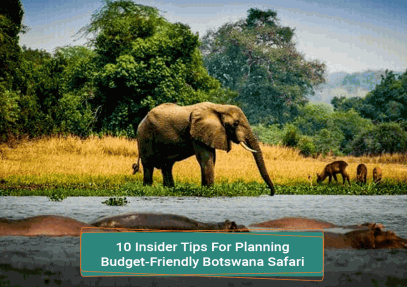
10 Insider Tips For Planning Budget-Friendly Botswana Safari
Botswana, a captivating safari destination, entices travellers with its vast wilderness and commitment...

Expert Tips for Choosing an Experienced Safari Tour Operator
Planning and embarking on a safari is an exciting thing and it could turn out to be an adventure of a...

7 Things You Must Pack for Your African Safari
Get ready for an unforgettable African safari experience, where you can immerse yourself in the stunning...

Where To Go On Safari In June
Our Pick of the Best Holiday Destinations in June Countries to visit in June: Tanzania, South Africa,...

Things to Do in Kenya: The Top 15 Must-See Tourist Attractions
An award-winning safari destination, Kenya has a bounty of riches with an array of attractions from the...

Where to See Elephants in Africa: the 10 Best Safari Destinations to Visit
African elephants, the largest land mammal, are intelligent creatures with studies suggesting that elephants...

The Best Places in Africa to See Lions
One of Africa’s renowned big five animals, the African lion is one of the top wildlife species that...

7 Thrilling African Honeymoon Destinations
From scenic wonders and wildlife adventures to beautiful beaches and fascinating culture, Africa is the...
Privacy Overview
Tanzania safaris – What you need to know for your first time

Lions prowl across dusty savannah. Elephants gather at raucous waterholes. Wildebeest hoofs create a drum roll as herds cross the Serengeti. This is a Tanzania safari , a true immersion in wildlife and wilderness.
There are more wild land mammals in this country than anywhere else on the planet. There are almost a dozen different safari destinations and the complete suite of wildlife, with so much more than the big five.
Most preconceptions about an African safari can be realised in Tanzania. This is the country where you get closer, see more, and experience the wild at its untamed best .
But Tanzania is an enormous country and wild animals don’t live everywhere. In this detailed guide we’ll show you the places to go , things to see , experiences to try , places to stay and when to go ; along with tips for planning your first time in the country.
Tanzania Safaris – Essential Information
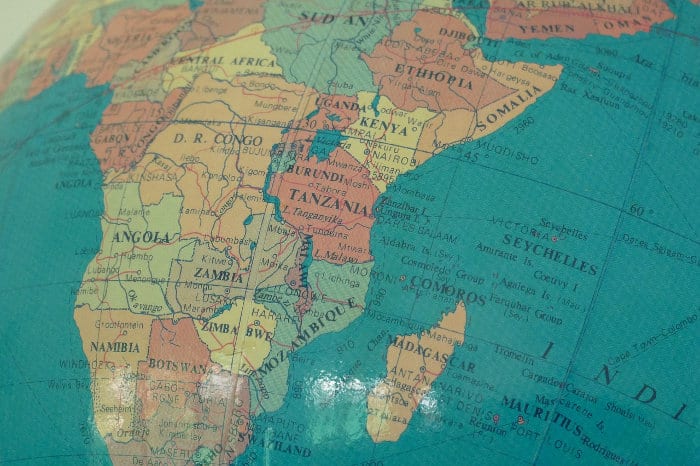
Where is Tanzania and how do I get there?
Tanzania is a large country in East Africa, immediately south of Kenya . Dar es Salaam is the largest international airport but for most safaris it’s more convenient to use Kilimanjaro International Airport to the north.
Why are Tanzania safaris so famous?
The great wildebeest migration is in Tanzania for nine months of the year, in the most famous African destination of all – the Serengeti .
One glance at the Serengeti and you’ll immediately see this was the landscape that inspired Disney’s Lion King .
Tanzania is also home to Ngorongoro Crater and almost a dozen other national parks, all with their own wildlife specialisms.

What animals will I see on a Tanzanian safari?

Lions , leopards , rhinos , elephants , giraffe , buffalo , wildebeest , zebra , Thomson’s gazelle …the list goes on and on, with Tanzania home to a stunning diversity of life.
Most impressive is the abundance . On a multi-day safari you don’t encounter a single lion but many different prides. Sometimes you’re confronted by herds of zebra numbering over 5000 individuals.
And none of the animals are seen in isolation. The beauty of an African safari is watching how everything interacts , especially at a waterhole or the battle between predator and prey.
How long do I need for a Tanzania safari?
This is not a one-day experience. Realistically you need at least four days . A week on safari is recommended as it allows you to visit different parks and really explore the wilderness.
What does a Tanzania safari cost?
A safari here is a once in a lifetime experience and it doesn’t come cheap . But can you put a price on watching lions prowl around tens of thousands of wildebeest?
You’ll need a permit for each park that’s visited , which ranges from USD 30 – 100 per day . Accommodation in basic camps starts at USD 50 per night per person, going upwards of USD 1000 per night.
While it is possible to rent a car and do your own safari, this really isn’t recommended and also attracts substantial fees. Almost everyone books a tour , so you must calculate the price of a sturdy four-wheel drive Toyota Landcruiser, a driver-guide or driver plus guide, then your meals and drinks.
The most basic multi-day safaris start at USD 180 per day per person. USD 300 – 400 per day is more realistic for using an experienced tour operator and clean, comfortable camps. At the top end a safari could cost you more than USD 2000 per day.
Why Tanzania and not Kenya or South Africa?
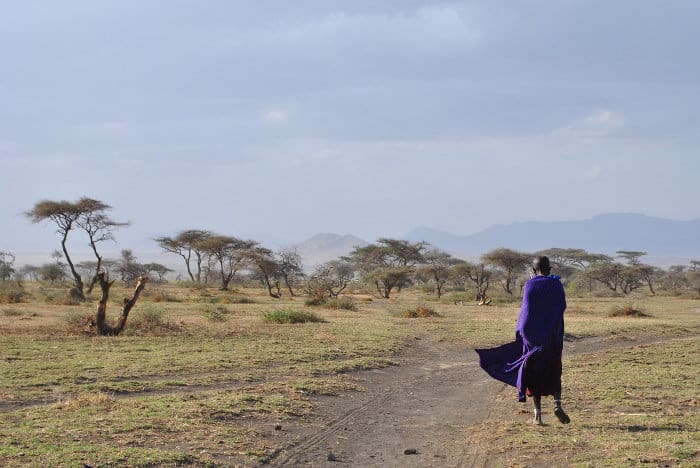
In Tanzania you explore with all the senses . Hippos grunting as they emerge from a lake. The smell of fear as you watch a leopard stalk a gazelle herd. Lions roaring, elephants hooting, buffalo charging and zebra grazing besides your tent.
Tanzania isn’t the only country in Africa where you can go on safari. However, it is the one that most reflects preconceptions about an authentic safari .
The scale – Tanzania’s parks are huge; as an example, the Serengeti ecosystem is roughly the size of Belgium and one of the country’s largest reserves. Such a scale stops anywhere from feeling too crowded.
The animal abundance – no other African country has as many wild animals.
Getting closer – with so many animals it’s very easy to get close; it’s common for lions to rest in the shade created by your safari vehicle.
Pure wildlife theatre – nothing is seen in isolation and on a multi-day safari you become centre stage in it all.
Diversity – on a multi-day safari you’ll explore a myriad of habitats and ecosystems, each with its own atmosphere and wildlife cast.
Unique safari experiences only found in Tanzania
- Follow the great wildebeest migration across the Serengeti plains; or witness the calving season from January to March.
- Find Africa’s ultimate Eden with a morning game drive in Ngorongoro Crater , where all the big five can be spotted at once.
- Spot hundreds of elephants and baobab trees in Tarangire .
- Search for rare tree-climbing lions in Lake Manyara National Park .
- Go on thrilling walking safaris in Selous Game Reserve .
Safari experiences that are commonplace in Tanzania
- Utilise light aircraft to land on dusty wilderness airstrips, deep within national parks .
- Camp in the wild and wake up to zebra and buffalo grazing around your tent.
- Track large lion prides on a hunt , or even a leopard or cheetah stalking its prey.
- Be surrounded by elephants or giraffe.
- Cross vast open landscapes that seem to have no end.
- Watch hyenas and African vultures fighting over a fresh kill , or hear the crack of carnivorous teeth ripping through bone.
- The safari never stops – you don’t just do a game drive or walk, you live the wildlife experience for 24 hours a day.
When to Visit Tanzania for Safari
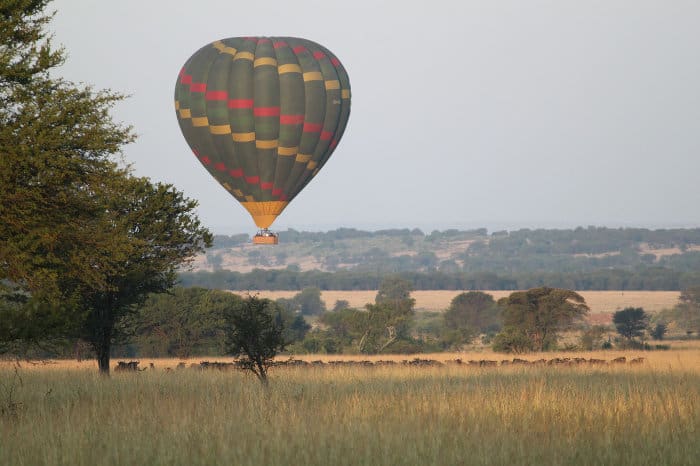
Tanzania is marked by wet and dry seasons and there is no best time to go on safari . Different times of year are better for different destinations, while the spread of tourism numbers across the year means that nowhere gets uncomfortably crowded.
January to February – Wildebeest calving
- This is the hottest and driest time of the year in Tanzania.
- The Great Migration is at the most accessible south-eastern part of the Serengeti, and the wildebeest are calving on the plains. This is a great time to visit the Serengeti and see predators on a hunt.
- The warm dry weather makes wildlife spotting easy in all of Tanzania’s parks.
March to May – The long rains
- The main rainy season lasts for three months and tropical downpours occur on most days.
- Many safari lodges close and these months are low season in Tanzania.
June – August – Cool, dry, popular, and great for wildlife viewing
- The long dry season is the most popular time to visit Tanzania . That’s partly because it has the most agreeable weather.
- Wildlife viewing is good although the Great Migration will probably be in Kenya at this time of year.
- The popularity of these months mean that Northern Tanzania’s destination can get crowded . However, the southern parks are never crowded , whatever month of the year.
September – late October – End of the dry season
- As the dry season continues wildlife must come to the waterholes to drink , making animal spotting very easy.
- Even though wildlife viewing is superb this is an unpopular time, so lodges and safaris are cheaper .
Late October – December – The short rains
- Short afternoon showers are common at this time of year although they’re not as heavy as in March to May.
- Wildlife viewing is still generally good, although the abundance of water means that game is widely scattered and harder to find .
Where to Safari in Tanzania
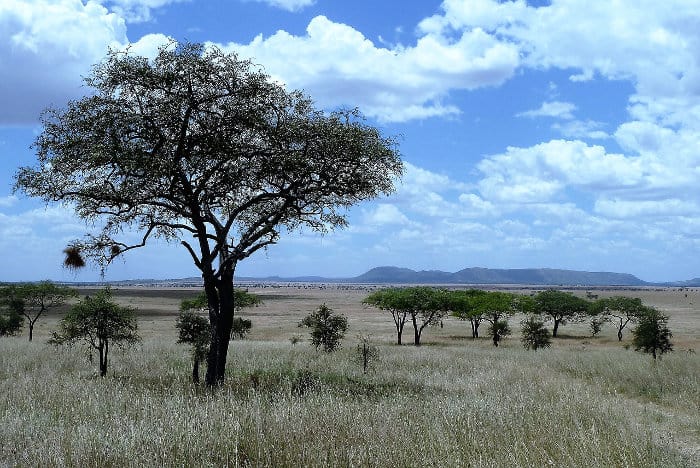
This article provides a more detailed guide to the best safari destinations in Tanzania . These are your options:
Northern Tanzania
Open plains and epic savannah make Northern Tanzania a refuge for millions of wild mammals. This is the most popular region to explore . Just fly in and out of Kilimanjaro International Airport then set off on a five to eight-day overland safari.
You can use local flights to access the Serengeti directly, bypassing the other parks. This is a good option for a Tanzania and Kenya safari, or if you only have three to four days in the country.
The Serengeti – These endless grass plains are home to the great wildebeest migration. It’s the most unmissable destination in Tanzania and you really need three days to explore different areas of the park.
To the west of the national park, Grumeti Game Reserve offers exclusive and expensive experiences, particularly with the wildebeest migration.
Ngorongoro Crater – The world’s largest intact volcanic caldera is home to some 30,000 wild mammals including the full big five . For the best experience visit on a sunrise game drive, just as the gate opens. One morning is ample time.
Tarangire – The wild home of elephants and baobabs, along with a superb diversity of other mammals. A good introduction to the safari experience with some intense pachyderm encounters. 24 to 48 hours is recommended.
Lake Manyara – Tanzania’s most beautiful park, with tree-climbing lions, lots of hippos, all manner of antelope species and the world’s largest baboon population. Unlike other destinations, Manyara is as good during the day as at early morning or late afternoon. One day is all you need.
These four destinations are contiguous and easily combined on the Northern Circuit safari route. This can be done over five days but it’s worth making that a week – Lake Manyara, Tarangire, Ngorongoro, then two to three days in the Serengeti.
This is Africa’s most famous multi-day safari circuit. It’s also the best option for a budget Tanzania safari as you won’t need expensive internal flights.
Also in the north of the country is Arusha National Park . This could be a one-day safari option if you don’t have time for elsewhere, for example if you’re visiting Tanzania to climb Kilimanjaro. However, it’s not worth adding Arusha National Park onto a longer itinerary – the other parks are so much better.
Southern Tanzania
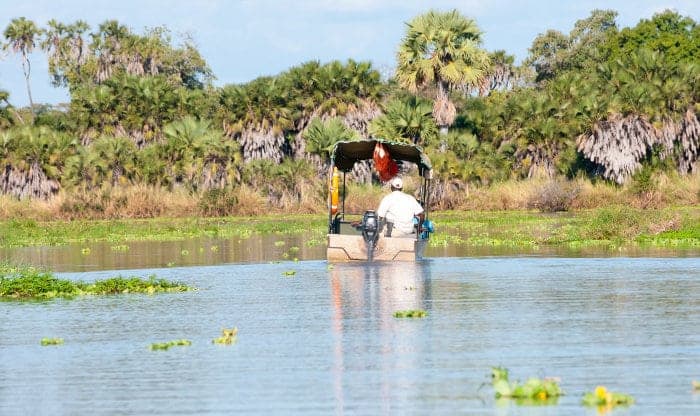
Southern Tanzania is untouched and under-visited, a vast space of raw and redolent wildlife scenes . If you want to see nature truly untamed then this is where to come. Expect a real off-road adventure.
An overland safari through Southern Tanzania will require eight to ten days if you depart from Dar es Salaam . Local flights land at all these destinations and are recommended if your budget allows. These flights also provide a connection between Ruaha and Selous with the Serengeti and Ngorongoro.
Mikumi National Park – Green floodplains and large populations of wildebeest and zebra make Mikumi feel like the Serengeti in miniature form. It’s a good standalone destination if you’re short on time but avoid the weekends, when the park gets busy with day-trippers from nearby Dar es Salaam.
Ruaha National Park – One of Africa’s best hidden gems, this enormous park is packed full of scenes of predators meeting prey, along with Tanzania’s largest wild dog and elephant populations.
There’s over 20,000 square kilometres of untouched savannah and only a few visitors. Most game viewing takes place around the Ruaha River and you can mix game drives with walks. Allow at least three days.
Selous Game Reserve – Offering a superb variety of safari activities, this vast reserve (over 50,000 square kilometres!) is home to almost all of Africa’s great mammals.
Take a boat along the Rufiji River , walk in lion country, game drive to wild scenes, and see everything from giraffe to leopard around the camps. 48 hours is ideal.
Udzungwa Mountains National Park – Halfway between Mikumi and Ruaha, this woodland park provides an excellent contrast to Southern Tanzania’s savannah.
Go walking on narrow trails in search of 400 different birds and six species of monkey, including the endemic Iringa red colobus monkey and sanje crested mangabey .
Western Tanzania

Dominated by forest and wild plains, Western Tanzania provides off the beaten track experiences in three very different parks . These destinations are difficult to get to without internal flights, but very rewarding, especially for anyone who has been on a safari before.
Gombe National Park – Best known for its chimpanzee safaris, this remote western park contrasts the safari experience you get on the savannah. Come to see lots of primates in lush, tangled forest.
Katavi National Park – Thousand-strong buffalo herds and plentiful hippos make this grassland savannah a stunning little destination. Katavi is vastly underrated and you may be the only visitors amid a great abundance of wildlife.
Mahale Mountains National Park – Trekking to habituated chimpanzee troops is the major experience here, at a park that’s hard to reach and wild beyond words.
Where to Stay on a Tanzanian Safari
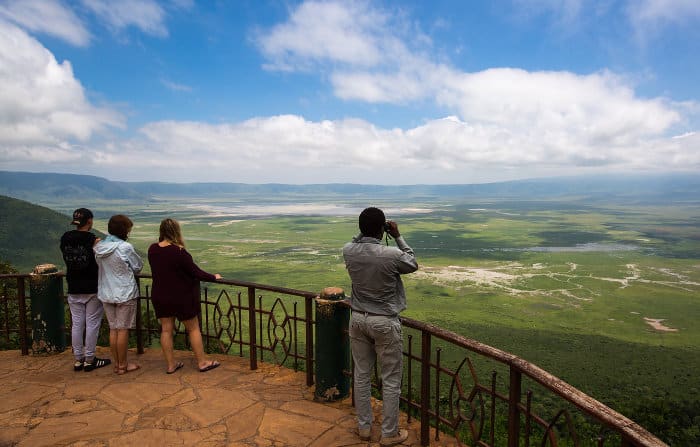
Where you stay is part of the experience. Through the night you hear the sound of elephants . Around camps and lodges you spot animals grazing. The safari never stops as you look out across plains or waterholes.
Location, location, location
Almost everywhere you can stay is deep within nature. So forget some of your modern luxuries. The experience is about wildlife and wilderness, and you’ll connect with your wild side by having canvas as walls, rather than dedicated Wi-Fi or plush bathrooms.
Your tour operator will suggest accommodation and these choices have a big impact on the total safari cost. Look first and foremost at location .
Camps within national parks are the best but are more expensive. Those around a park’s boundaries are in buffer wildlife zones and will be much cheaper, while still connecting you with wildlife.
Be wary of safari itineraries that use camps or lodges in towns , or anywhere more than a few miles from a national park gate.
For example, budget operators will try to use cheap camps in the dusty, rundown town of Karatu , where there’s traffic rather than wildlife, even though Ngorongoro and Lake Manyara are both only 30 kilometres away.
Types of safari accommodation
All the national parks have dedicated camping sites within their boundaries. These can be used if you’re on an overland safari. Tents and camping gear will be packed into your safari vehicle and you’ll set up camp at different locations each night. This is simple accommodation and the best budget option that’s available.
Tented camps provide beds and bathrooms within larger safari-style tents. They are more comfortable than camping sites and a good balance between price, comfort and location. Most visitors don’t need to go for anything more than a tented camp.
Mobile camps are temporary structures that move with the wildlife dependent on the seasons. They are similar to tented camps although more expensive and usually more luxurious, kind of glamping with animals.
Permanent lodges are bigger structures and vary in quality. Again, look for location as much as the facilities on offer.
Five Top Tips for Maximizing the Tanzanian Safari Experience
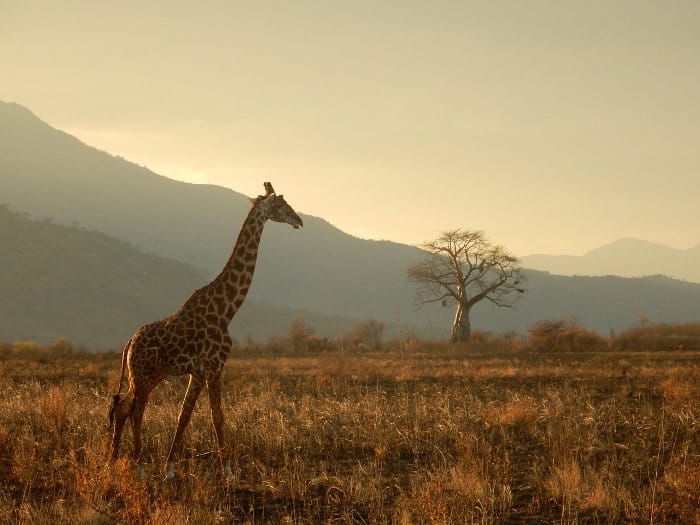
Everyone has their pre-safari dreams. Perhaps it’s spotting a black rhino, maybe a leopard out on a hunt, or ticking off the full big five ? These dreams excite and inspire. But sometimes the preconceptions start detracting from the experience .
Take a Tanzania safari and it’s almost certain you’ll enjoy intimate encounters that reflect all your dreams. But it won’t happen in the first 30 minutes. So don’t worry if the first day doesn’t deliver five lion prides, a 100 strong elephant herd, and quarreling buffalo.
There is beauty to be discovered at every turn ; don’t miss it because you’re worried that a certain animal hasn’t been seen. Relax, soak up every moment of the experience, and the famed big game will come to you.
2. Forget Animal Tick Lists
A Tanzania safari is not like being in a zoo. It’s an authentic immersion in the wild . Every game drive is different and every moment is unpredictable.
Many people have long tick lists of essential sights. But the beauty of a safari is not glimpsing an animal and putting a tick next to its name; it’s admiring the interaction and realism of a world untouched by man .
Don’t worry about tick lists because they don’t reflect the quality of the experience. Watching a giraffe give birth or lions stare down elephants at a waterhole can’t be reflected with a tick.
3. Always Have Your Camera Ready
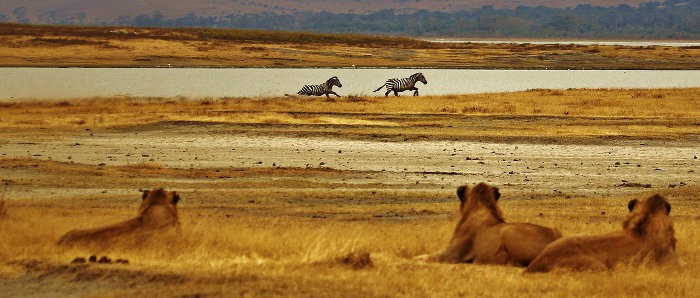
The Tanzania safari isn’t restricted to game drives or the time you spend with a guide. It’s a 24 hours a day experience .
Drift off to sleep and you can hear the trumpeted calls of elephants in trees nearby. Drink morning coffee and a zebra herd is grazing beside your tent . Wake up to evocative paw prints in the dirt nearby . All these are part of the safari yet not part of any game drive or activity.
So when a hippo pod rampages across the riverbank, just below your tent, you’ll want to make sure that you have the camera ready. You don’t want to rummage in your bag to find it and miss out on the experience. So always keep your camera to hand , because the wild Tanzanian landscape brings treats at the most unpredictable of times.
4. Dress Comfortably
Tanzania is usually hot and often dusty. Remember, you’re heading out into a wild animal world, so there won’t be the comforts of air-conditioning.
There’s lots of advice out there about the exact clothes to wear on a Tanzania safari. It’s not complicated. Just dress in clothes that you are comfortable in . There’s no need to arrive in full khaki gear and thick walking boots, especially if you’re only going to be doing game drives.
Just one piece of essential advice: avoid wearing blue . This colour attracts tsetse flies, which can be a painful nuisance.
5. Respect the Animals and the Animals Will Reward You
It’s always important to remember where you are. No, not in a theme park or zoo with captive animals. On a safari! You’re catapulted into their world, so it’s essential to respect the rules and not interrupt the natural cycle of life.
Most importantly, don’t make unnecessary noise or leave an impact on the environment . Respect the animals and they’ll reward you with increasing intimacy.
For example, scream wildly because you’ve just seen a rhino, and the rhino is likely to turn around and march the other way. But stay silent , be patient , and the rhino might walk within just a few meters of you.
Upset an elephant with the camera flash and it’s likely to get frustrated and lose all its endearing elegance. But take photos discreetly and you can be treated to the elephant gently caressing her calf and guiding it to water.
Planning a Tanzania Safari

Africa Freak provides an experiential safari service that can connect you to enriching wildlife experiences with top safari specialists. Speaking to a specialist means discussing what’s best for your interests, time frames, and estimated time of travel.
You can do this by clicking here .
About The Author
Editorial Team
Related posts.

“Robbed” by an elephant (iPhone story)

How Tanzania chose me as an ambassador
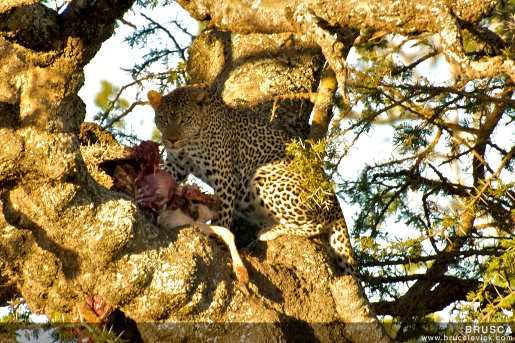
How to “spot” leopards of the Serengeti
3 thoughts on “tanzania safaris – what you need to know for your first time”.
My wife and I have done a trip to Tanzania. I wish all who venture forth this advice. Choose your tour guide service wisely after considerable scrutiny. Thanks to my wife’s efforts we were very successful in our choice. Next and most importantly: Treat your personal guide as you would a family member or a long lost friend. Our rewards were unbelievable. Do not try in any way to interact with any of the wildlife. You are an observer and only an observer, more than that and you may be mistaken for a challenger or lunch. Enjoy yourself but leave any intoxicants out of your excursions.
This is fantastic, especially for someone planning their future trip!
I love how you’ve broken it into great sections and also loveee how you’ve said about respecting the animals. That’s soo important!
Thanks for this!
Cheers, glad you found it helpful.
Continue to “Bea” adventurous! 😉
Leave a Comment Cancel Reply
Your email address will not be published. Required fields are marked *

Ultimate 5 Day Tanzania Safari Itinerary & Costs (6 unique Itineraries)
By Author Ella McKendrick
Posted on Last updated: 21 March 2024
From watching a majestic lioness chasing a zebra across the Serengeti to witnessing a baby elephant frolicking in a watering hole, my experiences in Tanzania have been some of the most incredible and thought-provoking of my life.
If, like me, you love the natural world and observing incredible wild animals in their natural habitats, then I have no doubts that you’re going to fall in love with the country too!

Tanzania has a reputation as being one of the greatest safari destination on earth. Boasting the vast and awe-inspiring Serengeti National Park, all of the Big Five, over 500 species of birds and 120 unique tribes, it’s not hard to see how the country has earned its enviable reputation.
With so much to see, you might be wondering if 5 days will cut it? Whilst you can easily fill out a 7-10 day Tanzania safari itinerary , 5 days will give you the opportunity to experience the very best of Tanzania including the world famous Serengeti National Park.
A 3 day safari itinerary is also possible (especially if you have the budget for a fly-in safari to save time). However, I would strongly recommend a 5 day itinerary (or more) as this will allow you to visit three of the best parks in Tanzania.

In this article I’m going to walk you through all six of my ultimate 5 day Tanzania safari itineraries . I’ll also give you an idea of Tanzania safari costs and how to find and book the best safari tour company for each itinerary option.
On top of all that, I’ll provide guidance on the best time to visit Tanzania for each itinerary and share tips and tricks including how to avoid some of the mistakes I made such as a terrifying night-time taxi ride .

Plan Your Safari Adventure
Save time and ensure an incredible experience from the local safari companies I use to organise my own trips.
I’m here to make booking your perfect safari quick, easy and risk-free. It takes less than 1 minute to fill out the form and in under 48 hours you will receive multiple, no-obligation proposals from my favourite local tour operators with glowing online reviews.
In This Guide
- 5 Day Northern Circuit Highlights Itinerary
- 5 Day Great Migration Wildebeest River Crossing Safari Itinerary
5 Day Great Migration Wildebeest Calving & Other Baby Animals Safari itinerary
5 day budget safari itinerary, 5 day luxury fly-in safari & beach itinerary.
- 5 Day Cultural Tour Including Hadzabe Bushmen Itinerary
Is 5 Days Enough in Tanzania?
- How to Book a 5 Day Safari in Tanzania?
- How Much Does a 5 Day Tanzania Safari Cost?
Tanzania Safari Tips & Tricks – Avoiding my Mistakes

Six different 5 Day Tanzania Safari Itineraries
I’ve detailed six of my favourite 5 day Tanzania Itineraries below.
I’ve focused on Tanzania’s Northen Parks for my 5 day itineraries as the Northern circuit contains some of the best and most popular parks in Tanzania. The southern parks are drastically more spaced out and would require much longer than 5 days.

5 Day Northern Circuit Highlights itinerary
This is the most popular of the 5 day safari itineraries as it takes you to all the highlights of Tanzania’s Northern Circuit and to three of country’s best parks including the world-famous Serengeti, the magical Ngorongoro Crater and Tarangire National Park with it’s huge African elephant herds.
A variation of this itinerary is going to Lake Manyara National Park. However, I didn’t include it as the wildlife sightings are not quite as predictable in Lake Manyara at the moment due extreme rainfall over the last few years affecting the lake height.
If it’s your first time in Tanzania then you can’t go wrong with this classic 5 day safari itinerary. It’s also the fixed itinerary for most group camping safaris, so despite going to some expensive parks it can still work well if you’re on a budget.
On the flip side if you’ve looking for a luxury private safari you can upgrade this itinerary with a balloon safari in central Serengeti or alternatively you might want to consider my 5 day wildebeest migration river crossing or 5 day wildebeest calving itineraries as well.

Quick Facts
- Average driving time per day: 3.3 hours.
- Best times of year: Long dry season from June to October or the short dry season from January to February.
Itinerary Map for 5 Day Northern Circuit Highlights
Itinerary starts and ends in Arusha.

Day By Day Breakdown for the 5 Day Northern Circuit Highlights Itinerary
Day 1: tarangire – total drive time 5.5 hrs.
Your journey starts in Arusha, the gateway to Tanzania’s world-famous Northern Safari Circuit. It takes around 3 hours to drive west from Arusha to Tarangire Nation Park’s Northern Gate.
Activities for Your Day in Tarangire Nation Park
You’ll go on a full day game drive around the park. You also have the option of a walking safari if you want an even more intimate experience.
About Tarangire Nation Park
Tarangire is the sixth biggest park in Tanzania at 2,850 km². The park’s name comes from the Tarangire River which spans across the park and provides a water source for its many inhabitants. The park is famous for its huge heard of majestic African elephants which can reach over 5,000 in total during the peak of the migration from July to October.
Tips for visiting Tarangire Nation Park
The best time to visit Tarangire is in the dry season when the migratory herds are present.
There are two fantastic lunch spots in Tarangire but there’s no catering so bring your own hot or cold lunch. If you are visiting with a tour operator, they will typically provide this for you.
My Personal Experience in Tarangire Nation Park
In my opinion, Tarangire is severely underrated. As soon as I entered the park, I found myself surrounded by wildlife. It’s one of the most wildlife-dense places that I’ve ever been! I absolutely loved watching the majestic African elephant herds in Tarangire – it’s one of the best places in Tanzania to see them. A highlight for me was watching a family of elephants drinking at one of Tarangire’s watering holes. A baby elephant rolled joyfully in the water, a sight that warmed my heart. The park fees are also around 50% of the Serengeti making it a great value park to visit.
You can watch a video of my Tarangire safari experience on Youtube .
Where to Spend the Night
Whilst it’s possible to spend the night in the Tarangire, it’s usually wise to drive for 2 hours to Karatu – a small bustling town and the gateway to the Ngorongoro Highlands. Karatu is closer to the Serengeti so saves on driving the next day and it’s also better value vs in-park accommodation.

Days 2 – 4: Seronera ( Central Serengeti) – total drive time 7 hrs
You now begin your epic 4 hour journey from Karatu to Seronera (Central Serengeti). After around 2 hours you’ll reach the Serengeti entrance gates and restrooms before the real adventure begins.
You’ll spend the rest of day 2, all of day 3 and the morning of day 4 in the Serengeti.
Activities for Your Day in Seronera ( Central Serengeti)
Other than embarking on game drives through the open plains of the Serengeti, the other key activity that you can enjoy is a balloon safari. Serengeti balloon safaris (normally around $450-550 per person) take place before sunrise and give you a bird’s eye view of the savannah. They may be expensive but the experiences is honestly a once-in-a-lifetime. Where else can you float effortlessly above the wilds of Africa and perhaps even witness the great migration from the air?
Walking safaris and night game drives aren’t permitted in the Serengeti.
About Seronera ( Central Serengeti)
The Serengeti which means ‘endless plains’ in the local Maasai language is quite possibly the greatest safari destination on earth. Home to all of the Big Five and spanning 30,000 km², The Serengeti National Park is awe inspiring in every way. To give you an idea of the scale, the Serengeti is 20x the size of Kenya’s Masai Mara National Reserve which sits on the other side of the Mara River in Northern Serengeti.
You’re in for a treat – central Serengeti has one of the highest densities of predators of any national park. Lions, cheetahs, leopards and hyenas can all be found here. The Serengeti is also one of the few places in the world where you can catch a glimpse of tree-climbing lions!
Tips for visiting Seronera ( Central Serengeti)
The best time to visit the Serengeti is during the dry season from June to October or January and February.
If you’re visiting during mid-July to September or mid-October to mid-November, you also have the option to view the river crossing where millions of wildebeests cross the crocodile-infested Mara river. It’s a 4 hour drive each way (or 1 hour flight) to northern Serengeti, where the Mara River can be found. Going there and back in one day is ambitious and honestly not recommended as the wildebeest can spend hours milling on the banks of the river, unsure whether to cross.
Not truly contemplating how the odds were stacked against me, I took the chance and headed up north to try to catch a glimpse of the Mara river crossing. Luck was definitely on my side as I managed to catch the river crossing in full swing. In fact I actually saw two river crossings! However, I must emphasise that I was very, very lucky as often you have to wait for 4 hours or more to see the river crossing. Sometimes the wildebeest don’t cross at all!
If you want to see the river crossing, it’s better to extend your trip an extra day or two and spend a couple of days in northern Serengeti or alternatively follow my 5 day Serengeti Itinerary below.
If you’re visiting between January to March I’d recommend visiting southern Serengeti to view the wildebeest calving and related big cat activity.
During May to July, you may wish to drive to Tanzania’s Western Corridor (west Serengeti) to watch the Grumeti River crossing. Some say it’s as spectacular as the Mara river crossing but is nowhere near as popular so you won’t be competing with lots of vehicles to get front-row seats.
My Personal Experience in Seronera ( Central Serengeti)
Driving into the Serengeti was in itself a magical experience – the vast planes of the south seem to go on forever, blending with the horizon-line. It almost felt otherworldly and brought back memories of my Namibia road trip .
Nothing could have prepared me for how abundant the wildlife is in the Serengeti. Sure, I knew of it’s fantastic reputation but seeing it for itself is something else. I was amazed by the numbers of lions I spotted. It actually got to the point where we would drive past lion sightings as we had seen so many.
One of the highlights of my time in central Serengeti was watching a pregnant lioness stalk a zebra. I felt like I had been transported into a nature documentary and held my breath as she ran full-pelt through the scrubland, the zebra only just managing to escape her grasp.
Another magical moment was spotting my first ever wild leopard. Leopards are perhaps the hardest of the Big Five to spot. In one single afternoon in the Serengeti, I managed to spot not one but three leopards: a mother and cub and a solitary female.
Watching two cheetahs gorge themselves on a freshly-caught wildebeest was another moment that I will never forget.
You’re probably getting the point now. The Serengeti is heaven for wildlife lovers.
You can watch a video of my Serengeti Safari experience on Youtube
You’ll spend the night of the second and third day in the Serengeti. On the morning of the fourth day, you’ll enjoy a sunrise safari in the Serengeti as you head towards the mystical Ngorongoro Crater. Once you reach the gates of the Serengeti, it takes around 2 hours to reach the Ngorongoro Conservation area where you’ll spend the night, usually on the rim of the crater.

Day 5: Ngorongoro Crater & Maasai Tribe (total drive time 4 hrs)
First thing in the morning you’ll drive along the crater rim through dense swathes of forest before beginning your epic 2,000 meter decent into the Ngorongoro Crater. The Ngorongoro Crater is unlike anywhere else on earth – towering crater walls surrounding a barren plane. To me it felt like I had entered into a lost world filled with a stunning array of wildlife and habitats.
Activities for Your Day in Ngorongoro Crater
You’ll spend the morning on a game drive in the crater followed by lunch on the banks of Lake Magadi, a large alkaline lake which is home to flamingos and hippos.
In the afternoon you’ll you’ll ascend the crater and visit a Maasai village to see their famous jumping dance and learn more about their unique culture. You’ll also go on a guided walk with the Maasai around the rim of the crater where you’ll be rewarded with spectacular views and lear about the Maasai’s deep connection to the crater.
About Ngorongoro Crater
Part of the wider Ngorongoro Conservation Area which is a UNESCO world heritage site , the crater is a massive caldera formed millions of years ago by the collapse of a volcano.
The crater was named by the Maasai Tribe after the sound produced by the cowbell (ngoro ngoro) as their crows walked around the crater.
It is the only conservation in Tanzania which protects wildlife whilst also allowing the Maasai to live in the area too, although no one is allowed to live within the crater itself.
Tips for visiting Ngorongoro Crater
I’d recommend an early start when visiting the crater as it avoids the crowds and gives you the best chance of spotting one of the 30 rare black rhinos which call the crater home. The rhinos usually congregate together around sunrise before splitting off in search of food.
You can’t beat having a pre-prepared hot lunch on the banks of Lake Magadi inside the crater. Your safari company can arrange this. You’ll have views of flocks of lesser flamingos and the odd prehistoric looking marabou stalk.
As most of the wildlife stays in the crater all year round, the best time to visit Ngorongoro Crater is pretty much all year round. However, the very best times are the short dry period from January and February to see baby animals and the long dry period from June to October when grass on the crater floor is shorter so it’s easier to spot wildlife.
My Personal Experience in Ngorongoro Crater
Ngorongoro Crater was one of the highlights of my trip to Tanzania. As we drove along the crater rim, we found ourselves engulfed by mist which created an eerie yet electric atmosphere.
My first view of the crater itself is one that will stay with me for the rest of my life. I felt like I was within Jurassic Park, entering a prehistoric lost world.
There are very few trees on the crater floor which makes it very easy to spot wildlife. As soon as I entered the crater I spotted a lone hyena, a group of buffalos and then found myself surrounded by herds of wildebeest and zebras.
The highlight of my Ngorongoro safari was spotting a family of servals, one of Africa’s smaller cat species. Servals are rare to see which made the sighting of a family of servals hunting rodents in the grass all the more special.
You can watch a video of my Ngorongoro Crater safari experience on YouTube .
After the day’s activities you’ll return back to Arusha for the night.

For this 5 day itinerary, full board Tanzania safari costs for private safaris start at around $280 per person per day for 4 people and $330 for two people. Prices assume working with a small local safari company and will vary depending on the level of accommodation chosen and number of people sharing the safari truck.
For budget and mid-range safaris, park fees make up the biggest proportion of the total safari costs.
In Tanzania it’s usual practice for the safari companies to organise everything and give you an ‘all inclusive price’. However, I wanted to give you a quick example of how the pricing breaks down:
Ngorongoro Crater is the most expensive of Tanzania’s safari parks and entry fees for one safari truck plus 2 adults at the time of writing are $613 + 18% Tanzania tax = $723.34. Then you have around $350 per day for the private safari truck and your driver / guide, so that’s a running total of $536.5 per person for that particular day before adding accommodation and other costs.
Due to the high park fees, local tour companies don’t usually make much profit on the safaris – usually around 10% – 15% and much of this is offset against the special trade prices they receive for accommodation, so they end up working out very cost effective.
Recommended Booking Options For This 5 Day Tanzania Itinerary
Private Safari
Most popular & best experience – typical prices start from $280 per person per day .
Visit safarisbyella.com for free quotes from trustworthy local tour companies I use to book my own trips.

Group (Shared) Camping Safari
Good for budget or solo travellers – from $160 per person per day.
My recommended Tanzania tour operators only provide private safaris, however, I’ve listed the best group options for this itinerary, on Safari Bookings below.
Click the links below to request quotes for the group safari options on the safari bookings website.
5-Day Group Budget Camping Tour for the Northern Circuit Highlights Itinerary plus Manyara
5-Day Group Budget Camping Tour for the Northern Circuit Highlights Itinerary
Jump back to the table of contents to select another 5 day itinerary to view or keep scrolling to read the next itinerary.

Great Migration Wildebeest River Crossing Safari Itinerary
This 5 day itinerary gives you quite possibly the ultimate safari experience in just 5 days. You’ll be spending most of your time in arguably the best safari park in the world – the Serengeti.
However, prices will work out more expensive than the 3 park option above due to the inclusion of an internal flight and higher Serengeti park fees.
Your adventure begins with a flight on a small propeller plane from Arusha to northern Serengeti. Alternatively, it’s a 7-8 hour drive if you want to save on flight costs.
At the Serengeti National Park you’ll have a good chance of seeing all of the Big Five as well as the the Great Wildebeest Migration crossing the Mara River in northern Serengeti.
You’ll break up your drive back to Arusha at the end with a night in Ngorongoro Conservation area followed by a morning safari in the mystical Ngorongoro Crater. This is the best place to try to catch a glimpse of a black rhino.
Late May and early June marks the beginning of the Great Migration – one of the greatest wildlife spectacles on earth.
During the migration, millions of wildebeest and zebras journey from the southern plains to the northern Serengeti in search of fresh pastures.
The very pinnacle of the Great Migration is the Mara River crossing in northern Serengeti where up to thousands of wildebeest at a time cross the crocodile-infested Mara River.
This five day itinerary aims to give you the best chance possible of experiencing this once in a lifetime spectacle. If you want to see the river crossing, then you would need to visit mid-July to late September or in mid-October to mid-November when the wildebeests cross back again.
Dates vary depending on the variable timings of the rains each year – choosing a date towards the middle of the period would be the safest bet if you want to maximise your chances and seek the guidance of a professional safari company.
You can still experience the other incredible sights of the Great Migration outside of these dates such as the calving in January and February (see my 5 day wildebeest calving itinerary ) or the Grumeti River crossing on Tanzania’s Western Corridor from may to July. However, you would adjust day 3 and 4 of the itinerary depending on the location of the migration at that time of year.
I’ve seen some versions of this itinerary which suggest you should drive to the Serengeti, visiting Ngorongoro Crater on your way and then fly home. The main drawback with that itinerary is that you will be entering Ngorongoro at midday, so have missed many wildlife sighting opportunities.
In my itinerary you fly out first to make sure you can visit the crater first thing in the morning as it avoids the crowds and gives you the best chance to see the black rhinos grouped together before they separate for the day.

- Average driving time per day: 1.4 hours
- Best times of year: For the Mid-July to late September or mid-October to mid-November*
- *Dates can vary according to the timing of the rains
Itinerary Map for Great Migration Wildebeest River Crossing Safari

Day By Day Breakdown for the Great Migration Wildebeest River Crossing Safari Itinerary
Days 1 & 2: kogatende – northern serengeti – total flight time: 1 hour or drive time 8 hrs.
Your journey starts in Arusha, the starting point for most of Tanzania’s northern circuit safaris. From here you’ll catch a small propeller plane which will take you directly to northen Serengeti. Flights normally cost around $350 per person and they give you the opportunity to see the vast Serengeti from the air.
If you’d prefer not to fly or would simply like to keep costs down, you can drive instead which takes 7-8 hours.
Depending on the time of year, you’ll adjust your destination in the Serengeti to see the Great Migration. It’s worth noting these are rough dates as the timings of the rains can speed up or slow down the usual migration timeframes. A good safari company will be able to keep you updated on this to ensure you get the best experience.
For this Itinerary we’re going to assume you’ve visiting around Mid-July to late September or mid-October to mid-November and are keen to see the Mara river crossing.
Here are a few other variations of this itinerary if you’re going on different dates:
May to July: fly to western Serengeti to see the Grumeti River crossing.
January and February: Follow my 5 Day Great Migration Wildebeest Calving & Other Baby Animals Safari itinerary and fly to central Serengeti and then make your way south via car to see the Wildebeests calving in southern Serengeti and the Ngorongoro Conservation Area
Activities for Your Days in Kogatende – Northern Serengeti
Day 1: If you’ve flown, you’ll have plenty of time for a safari for the rest of the day.
Day 2: You’ll wake up for your first full day in the Serengeti, arguably the greatest safari destination on earth.
I’d recommend a balloon safari at sunrise as this will give you a bird’s eye view of the Great Migration. After the ballon safari, you’ll spend the rest of the day day on a game drive and will have the opportunity to witness the incredible Mara river crossing at close quarters.
About Kogatende – Northern Serengeti
The Serengeti which means ‘endless plains’, is home to all of the Big Five. The park covers 30,000 km² making it 20x the sizes of the adjoining Masai Mara
In the north, during the river crossing, thousands of wildebeests wait hesitantly on the banks of the crocodile-infested Mara river until eventually one of them takes the plunge and scrambles down the steep banks before launching itself into the river whilst the hungry crocodiles watch on. As herd animals, this prompts hundreds more wildebeests to follow, jumping into the water and swimming across the river whilst the crocodile patiently wait for any weak animals to exhaust themselves trying to scramble of out the steep bank at the other side.
Tips for visiting Kogatende – Northern Serengeti
The best time to visit the Serengeti is during the long dry period from June to October to see as any animals as possible. Alternatively, if you want to see baby animals and related big cat activity, then January and February is a great option.
My Personal Experience in Kogatende – Northern Serengeti
When I visited the Mara River, I was lucky enough to see the wildebeests crossing almost immediately, although some people had been waiting 4 hours. My luck hadn’t run out yet and, shortly after the first crossing, my guide found another crossing taking place. It was here that we managed to witness a crocodile successfully hunt a young wildebeest calf.
You can watch a video of my Serengeti Mara River Crossing Safari on YouTube
You’ll spend night 1 & 2 in Kogatende – northern Serengeti. There are both tented and non-tented accommodation options available. I’d recommend staying in tented accommodation as you feel much closer to nature. Nothing is as magical as hearing a distant lion roaring as you lie in bed!

Days 3 & 4: Seronera – Central Serengeti – total drive time 3 hrs
On day three you’ll make your way down from the north to Seronera (central Serengeti) which will take a couple of hours. Your journey will double-up as a game drive and you’ll find yourself meandering down quiet tracks through the savannah, keeping a look-out for the Serengeti’s famous residents.
Day four is your last morning in the Serengeti and a great opportunity to enjoy a sunrise game drive.
Sunrise safaris are a great time to see predators hunting as its cooler compared to the day-time during which times predators usually laze around in the heat of the sun.
You’ll continue your safari, keeping a look out for the Big Five as the morning turns to afternoon.
After your safari, you will continue your drive south to the Ngorongoro Consveration Area.
From the gates of the Serengeti it takes a further 2 hours to reach the Ngorongoro Conservation area. Spending the night on the rim of the crater provides fantastic views.
Activities for Your Days in Seronera ( Central Serengeti)
You’ll spend most of your time on game drives.
Central Serengeti has one of the highest densities of predators including tree-climbing lions. It’s also one of the best places in Africa to see leopards.
Early morning or late evening game drives are a great way to see big cats hunting. They prefer these times as it gets too hot in the day.
Keep an eye out for any tails handing down from trees – this is often a tell tail sign of a tree-climbing lion or elusive leopard.
Spending a full day on safari in Seronera was one of the highlights of my entire time in Tanzania. Nothing gets me as excited as spotting big cats so imagine my delight when I managed to spot more lions than I can count, three leopards and three cheetahs within a 24 hour period in Seronera.
Other notable sightings included elephants galore, large herds of zebra, several families of giraffes and a couple of spritely warthogs.
You can watch a video of my Central Serengeti safari experience on YouTube .
You’ll spend night two in central Serengeti and night three on the rim of Ngorongoro Crater.

In the morning you’ll embark on a 2,000 meter decent into the lost world of the Ngorongoro Crater. You’ll spend the bulk of the day within the crater before visiting a Maasai boma on your way back to Arusha.
Much of the day will be spent on a game-drive in the Ngorongoro Crater. Your safari will be broken-up by a picnic lunch on the banks of Lake Magadi.
After your safari you’ll visit a Maasai Boma on the rim of the crater where you’ll watch their traditional jumping dance and join them on a walk along the crater rim enjoying spectacular views and learning about their connection with the area. Finally, you’ll drive back to Arusha which takes around 4 hours.
Part of the UNESCO world heritage site of the Ngorongoro conservation area, the crater is a calera which was formed millions of years ago by the collapse of a volcano .
The Crater is one of the only places where you can see the black rhinos which are best spotted at sunrise or sunset.
I’d recommend asking your safari company to bring a packed lunch (often provided by your accommodation) so you can eat lunch in the crater on the banks of the Lake Magadi. It’s a wonderful experience to have lunch with wildlife all around you such as flocks of lesser flamingos and the odd prehistoric looking marabou stalk.
The best time to visit Ngorongoro Crater is during the short dry period from January and February to see baby animals or the long dry period from June to October when grass on the crater floor is shorter so it’s easier to spot wildlife. However, as most of the animals in the crater, don’t migrate, the park is great to visit year-round.
I absolutely loved my time on safari in Ngorongoro Crater. Although I didn’t personally spot any rhinos, I still managed to sight three of the Big Five (lions, buffalos and elephants) on the crater floor. The landscape is like no where else on earth and is pretty much guaranteed to take your breath away.
You’ll spend your last night in Arusha.

Whilst this itinerary will give you even more game viewing time compared to the first itinerary option, as well as and incredible sightings, it will also be more expensive.
Compared to the first Itinerary, you are adding a flight to the Serengeti which is more expensive compared to driving. However it gives you more time on the Serengeti. It’s also worth noting that whilst flights are more expensive than driving, you will save the $80 fees per person to pass through the Ngorongoro Conservation area which would be paid when driving.
Compared to the first itinerary, you are also replacing a day in Tarangire with an extra day in the Serengeti which will increase the costs as Serengeti park fees are higher, plus you’ll be staying in the park over night which required overnight fees (known as concession fees) to be paid.
For this 5 day itinerary, full board Tanzania safari costs for private safaris start at around $480 per person per day for 4 people and $520 for two people. Prices assume working with a small local safari company and will vary depending on the level of accommodation chosen and number of people sharing the safari truck.
Most popular & best experience – typical prices for this itinerary start from $480 per person per day .
Group (Shared) Safari
Good for budget or solo travellers – from $476 per person per day (driving only, no internal flight).
Please note, it was not possible to find any 5 day group options for this itinerary as the group safaris drive instead of flying to save costs, which is why I’ve listed 6 and 7 day options.
Click the links below to request quotes for the group safari options on the Safari Bookings website.
6-Day Group Mara River Crossing Safari – travel via road (no internal flights)
7-Day Group Mara River Crossing Safari – travel via road (no internal flights)

The wildebeest calving season (part of the Great Migration) is where you will get to witness the largest concentration of large land animals in the wild and is something that you’ll remember for a lifetime.
Calving is the reason why the wildebeests risk their lives crossing the crocodile-infested river. They cross the river in to order to position themselves near fresh pastures which give them the necessary energy for the demanding calving season as well as providing food for their new borns.
During this time, hundreds of thousands of wildebeests will give birth at a rate of 8,000 each day. It’s amazing to watch the baby wildebeests spring to their feet within in minutes of being born, ready to run with the herd away from predators in just a few days.
With so many newborns around, it’s also one of the best times of year to see a successful predator hunt.
If you’ve visiting Tanzania in January, February or March and want to see the Great Migration, then this is the itinerary for you!
In March, tens of thousands of zebras and gazelles (who accompany the wildebeests on their journey) join the wildebeests in giving birth, relying on the safety of the numbers of the wildebeests to help protect their new borns.
I’ve seen some versions of this itinerary which suggest you should drive to the Serengeti, visiting Ngorongoro Crater on your way to the Serengeti and then flying home at the end. In my itinerary however, you fly out to the Serengeti first to make sure you can visit the Ngorongoro Crater first thing in the morning, as it avoids the crowds and gives you the best chance to see the black rhinos grouped together before they separate for the day.

- Average driving time per day:
- Best (only) times of year: January, February and March (February being the optimum month)
- As with all wildebeest seasons, the timings of the rains can bring things forward or push them back
Itinerary Map for 5 Day Wildebeest Calving Safari

Day by Day Breakdown for the 5 Day Great Migration Wildebeest Calving & Other Baby Animals Safari Itinerary
Days 1 – 4: ndutu – southern serengeti (total flight time: 1 hour or drive time 6 hrs).
You’ll start in bustling city of Arusha, known as the gateway to Tanzania’s Northern Safari Circuit. From here you’ll catch a small scheduled propeller plane which will take you directly to the Ndutu Airstrip in South East Serengeti. Flights normally cost around $350 per person and give you the opportunity to see the vast Serengeti from the air as well as save 6 hours driving time.
If you’d prefer not to fly or to keep costs down, you can drive which takes around 6 hours hours.
There are a number of lodge options but the best for seeing the calving are the mobile tented camps which move around following in the migration. These provide large tents with proper beds and ensuite bathrooms.
If you’ve flown, you’ll have plenty of time for a safari for the rest of the day 1.
On day 2 you’ll wake up for your first full day in the greatest safari destination on earth, about to see one of the most amazing wildlife spectacles in Africa.
Activities for Your Days in Ndutu – Southern Serengeti
Your guide will take you on safari in search of the migrating wildebeest herds which usually start calving around January. The pregnant wildebeests give birth and by February there are around 8,000 baby wildebeests being birthed every single day into March.
You will also see tens of thousands of zebras and gazelles who have accompanied the wildebeests on their migration, ready to give birth alongside the wildebeests, as they know their babies will find protection from any onlooking predators from within the vast number of wildebeests.
The huge quantities of young and inexperienced babies does not go unnoticed by the Serengeti’s high density of hungry predators. Big cats including lions, cheetah, leopards as well as African wild dogs, spotted hyenas and black-backed jackals stalk the herds, looking for their opportunity to pounce.
The new born calves spring to their feet in minutes to maximise their chances of survival and within 3 days they are able to run to escape predators. In this interim period they are left vulnerable and must reply on the size of the herd and their mother to protect them.
Your chances of seeing a successful hunt are very high. Many predators also give birth at this time of year as they know there will be plenty of food for their own babies.
If you want to experience the great migration from the air then you can travel to central Serengeti (1 – 2 hours drive) for a balloon safari at sunrise the following morning. Alternatively you can stay in the Ndutu region for the full 3 days.
About Ndutu – Southern Serengeti
The Ndutu Region spanning 8,000 km², is part of Ngorongoro Conservation Area, a UNESCO world heritage site and stretches to the southern Serengeti.
The area is famous for its short and particularly nutrient-dense grass, which is one of the reason the wildebeests choose this location for their calving. The extra nutrients in the grass help to sustain the wildebeests and their young as well as the other migratory animals during the birthing season.
The calving season attracts large numbers of hungry predators to the area including lions, cheetahs, leopards, spotted hyenas and African wild dogs.
Fortunately for the wildebeests, the short grass planes makes it harder for predators to hide when stalking the wildebeests and their calves.
It is the only nature reserve in Tanzania which allows you to drive off road which means you can get great views of the action.
Tips for visiting Ndutu – Southern Serengeti
The best location for viewing the migratory herds in on the banks of Lake Ndutu on the eastern edge of Serengeti National Park. The lake attracts large herds of thirsty wildebeests, zebras and other animals.
You’ll spend nights 1, 2 and 3 in the Ndutu region – usually in a mobile camp which follows the location of the migration. However, there are also fixed location accommodation too slightly further away.

Days 4: Ndutu to Ngorongoro Highlands (total drive time 2 hrs)
Before you bid the Ndutu region of the Serengeti goodbye, there is time for a sunrise game drive through the southern Serengeti plains.
Early morning game drives are the perfect opportunity to see predators hunting as they are very active at this time due to the lower temperatures compared to later in the day.
After your nearly full-day game drive, it will then take 2 hours of driving to reach the Ngorongoro Crater rim.
You’ll spend the night on the rim of the crater which provides incredible views.
One the afternoon of day 4 you can visit a Maasai boma and go for a walking safari along the rim of the creator with Maasai guide.
You’ll spend the night on the Ngorongoro Crater rim with majestic views into the caldera.

Days 5: Ngorongoro Crater (total drive time 3 hrs)
This morning you will descend into the magnificent Ngorongoro Crater and go on a full-day game drive. There are two benefits to visiting the crater this early. Firstly, you’ll beat the crowds and secondly, it will give you the best chance to see the endangered black rhinos which gather together at sun rise before splitting off to look for food.
A full day game drive in Ngorongoro Crater, broken up by a picnic lunch overlooking Lake Magadi.
The crater which sits in the UNESCO world heritage site of the Ngorongoro conservation area is a giant caldera which was formed millions of years ago when a volcano collapsed.
Visit early and bring lunch with you – ideally ask your safari company to bring a hot lunch from your accommodation which you can eat on the banks of Lake Magadi. You’ll be surrounded by pink flamingos and the the views are fabulous.
The 2,000 meter decent into the creator is quite magical. It’s like entering a lost world and filled me with awe and excitement for what was to come.
After your safari you’ll ascend the crater and drive back to Arusha for the night.

Seeing the Great Migration calving is a once in a lifetime experience and gives you one of the best opportunities to see successful predators hunts. However, compared to the first northern safari itinerary, this will be more expensive. This is due to the inclusion of a domestic flight to Ndutu as well as paying overnight fees to stay in the Ndutu region.
However the costs will be slightly lower than the river crossing itinerary above, as you’ll be traveling outside of peak season. Additionally, as Ndutu is actually within the Ngorongoro Conservation Area, you won’t have to pay a transit fee through Ngorongoro as you are already within the conservation area.
For this 5 day itinerary, full board Tanzania safari costs for private safaris start at around $400 per person per day for 4 people and $430 for two people. Prices assume working with a small local safari company and will vary depending on the level of accommodation chosen and number of people sharing the safari truck.
Most popular & best experience – typical prices for this itinerary start from $400 per person per day .
Good for budget or solo travellers – from $427 per person per day.
5-Day Group Wildebeest Calving Safari – travel via road (no internal flights)
5-Day Group Wildebeest Calving Safari without Ngorongoro Crater – travel via road (no internal flights)
5-Day Group Wildebeest Calving Safari – substitues day 2 with Tarangire – travel via road (no internal flights)

The cheapest way to experience a Tanzania safari is usually by joining a group budget camping safari. You can view a list of my recommended group budget camping safaris here . However, there are some downsides to group safaris, which mean they are not the right choose for everyone on a budget:
- The itinerary is fixed, giving no flexibility .
- They run at scheduled times and for a fixed number of days – usually 3 or 6 days.
- You are sharing the safari truck with a number of people who may have different priorities on what to see and how long to spend at each sighting.
- Without the ability to easily move positions in the vehicle at a sighting, you may be stuck with a poor view of a great sighting.
- You can’t control how loud the other people in the group are which could scare animals away
- As group safaris are usually aimed at the budget market, they are no frills and sometimes the campsites are poorly maintained.
- The more experienced guides are usually allocated to private safaris leaving the inexperienced guides for group budget packages.
If you’re on a tight budget but you want to avoid the downsides of group safaris by booking a private safari instead, I have created the below itinerary. This itinerary for a private budget safari is lower cost than the others in this article, taking you to fantastic and sometimes lesser-know parks with lower park fees.

- Average driving time per day: 3.8 hours
Itinerary Map for 5 Day Budget Safari

Day By Day Breakdown for the 5 Day Budget Safari Itinerary
Day 1: arusha national park (total drive time: 3 hrs).
Day 1 of the 5 Day Budget Safari Itinerary starts in Arusha. Although most safaris start in Arusha, known as the gateway to the northern circuit, most people don’t realise there is a hidden safari gem in Arusha itself. Located in the foothills of Mount Meru, Tanzania’s second highest peak, is the mysterious Arusha National Park.
As it’s lesser known, the park fees are much less than many of the other national parks. However, don’t let the lower park fees fool you – this park came highly recommended by one of my favourite Tanzanian safari guides.
Activities for Your Day in Arusha National Park
The park offers you the opportunity to spend a day on a walking safaris, game drives or even enjoy a spot of canoeing. I would personally recommend taking advantage of the opportunity to go on a walking safari as this isn’t always possible in some of the other national parks (although the government is gradually allowing them in more places, such as Tarangire where you’ll be visiting tomorrow).
About Arusha National Park
The park which covers 552 km², boasts the largest population of giraffes in the world. It’s one of the few places to see the Maasai giraffe and the reticulated giraffe in the same location.
Due to the varied ecosystems which include lush rainforests, savannahs, acacia woodlands and alpine vegetation on the higher parks of Mount Muru, the park incorporates some fascinating species of animals which can’t been seen in other Northern Circuit parks, such as the colobus and blue monkeys.
The park has its own mini version of the famous Ngorongoro Crater which is called Ngurdoto Crater and houses buffalos and elephants which you can explore on a game drive.
The Serengeti Ndogu (know as little Serengeti) and the forests including Tululusia Hil, a former looking dating back to Tanzanias tribal wars with incredible 360 degree views, are both great destinations for a walking safari
Small Momella Lake is the perfect location for a canoeing safari. This picturesque lake has shallow waters and offers game viewing as animals are drawn to the shores of the lake to drink.
Tips for Visiting Arusha National Park
One of the things I loved about Arusha National park was that I was able to see all three distinct parts of the park within the day.
Whilst the park has a lot to offer, I’d recommend visiting it at the start of your safari as once you’ve been to some of the other parks in this itinerary, the bar gets set very high in terms of quantities of sightings.
For this budget safari itinerary, I’d recommend staying around Moshi as accommodation is good and it will minimise driving on day 2. I’d particularly recommend wear mosquito repellent in Moshi as the heat and humidity does seem to attract them.

Kilimanjaro Coffee Tour, Materuni Waterfalls & Chemka Hot Springs (total drive time 5 hrs)
The cultural experiences I had I Tanzania were right up there with the safari / wildlife experiences. With over 150 unique tribes in Tanzania, spending one of your 5 days on cultural activities will really enhance your experience and help provider a deeper understanding of Tanzania. Taking a day off from safari also helps keep this a budget itinerary.
Today you’ll visit the famous Mount Kilimanjaro, meet the Chagga tribe who live on the slopes of the mountain, eat a traditional lunch and make some fresh coffee. Finally you’ll visit the paradise of Chemka Hot Springs where you can relax in the warm waters of the spring.
It’s around 45 minutes drive from Moshi to Materuni village. The village is located on the southern slopes of Kilimanjaro at an altitude of 1300 m above sea level.
Activities for Your Day in Kilimanjaro with the Chagga tribe & Chemka Hot Springs
From Materuni village, you can go a 45 minute walk to the thundering Materuni Waterfalls. Although the walk is fairly easy, I’d recommend some good walking boots, especially if it’s wet weather as it can get a little muddy. There is the option to drive closer to reduce the walk to 15 minutes.
The return leg of the circular walk takes you slightly uphill which and takes around 1 hour back to the village. Back at Materuni village, the Chagga tribe will show you the full hands-on process of preparing and roasting the coffee, which they have gown on the slopes of Kilimanjaro. Finally, you taste the delicious coffee and eat a traditional Chagga lunch as well as learning more about their way of life.
For the afternoon it’s a 1 – 2 hour drive down to the Chemka Hot Springs for a bout of afternoon relaxation.
The springs are around 10m deep at the their deepest and you can rent flotation devices. As well as access into the spring via steps, for the more adventurous travellers, there is a rope-swing into the water.
About Kilimanjaro, the Chaga tribe & Chemka Hot Springs
The Chagga (aka Chaga) are the third largest ethnic group in Tanzania and descended from immigrants of various Bantu tribes who inhabited the once forest-covered foothills of Kilimanjaro around 1,200 years ago.
The tribe are famous for their work ethic and members of the tribe work as porters carrying equipment up and down Kilimanjaro during expeditions. They also grow coffee, amongst other crops, on the fertile slopes of the mountain using organic fertilisation methods practiced and since 1920s. The coffee has been a large source of income, leading to them becoming one of the wealthiest tribes in Tanzania.
The Chemka Hot Springs are geothermal springs which were once worshipped by the Chagga people. The hot springs are made up of two lagoons connected by a narrow canal. At the bottom of the biggest lagoon is an underwater cave which produced bubbles; this is the source of the hot springs. The water originates from Kilimanjaro and is the reason why it’s warm.
The name Chemka means boiling in Swahili. Despite what the name would suggest, the hot springs are not hot. Instead they are pleasant at around 20°C.
There are two main types of fish that inhabit the springs – the red garra (which nibble the dead skin off your feet and the locals call massage fish) and the larger catfish.
Tips for visiting Kilimanjaro, the Chaga tribe & Chemka Hot Springs
At the Chemka Hot Springs there is a restaurant which serves fantastic local food.
If you can, bring your snorkel mask as it’s very pretty underwater.
There are some basic toilets but nowhere to lock your bags so I’d recommend leaving any valuables in the car if you planning to take a dip in the springs.
My Personal Experience in Kilimanjaro, the Chaga tribe & Chemka Hot Springs
I absolutely loved my afternoon at Chemka Hot Springs! Leaping into the water from the rope-swing was exhilarating and I the temperature of the water was very soothing. I’ve honestly never seen water as clear as here – it glows a beautiful cyan colour under the dazzling sunlight.
You can watch a video of my Chemka Hot Springs experience on YouTube .
After your day of adventure, you’ll spend the night in Arusha.

Tarangire National park (total drive time 6 hrs)
From Arusha it’s a 3 hour drive to Tarangire National Park’s northern gate.
Park fees for Tarangire are around 50% of the cost of the Serengeti making it great value without compromising on quality. Tarangire is one of my favourite national parks and one of the best places in the world to see African elephants in the wild. I loved watching numerous huge herds of majestic African elephants and their babies stroll around park.
Activities for Your Day in Tarangire National Park
You can spend your day on a game drive or alternatively the park has just started allowing walking safaris too which gives you an even more intimate experience.
About Tarangire National Park
Tanzania’s sixth biggest park at 2,850 km² park revolves around the Tarangire River, from which it gets its name. The river forms a ‘honey pot’ in the dry season, when thirsty animals migrate to the park and congregate around the river for water.
The most famous of these migratory inhabitants are the huge herds of African elephants, for which Tarangire is famous, and can reach up to 5,000 in number at the peak of the migration from July to October.
Tips for Visiting Tarangire National Park
To get the very best sightings of the park’s inhabitance, I’d recommend arriving as early as possible.
My Personal Experience in Tarangire
I was absolutely blown away by the sheer density of wildlife within Tarangire National Park. Not only did I feel surrounded by elephants, but giraffes, zebras, wildebeest, eland and so much more were in abundance. I even spotted a family of lions relaxing beneath an acacia tree.
Spend the night in Mto Wa Mbu, a town 3 hours outside of Tarangire, ready for an early start at Lake Manyara the following day.

Lake Manyara National Park (total drive time 2.5 hrs)
Lake Manyara is another park which provides great value on park fees. The park is famous for its tree-climbing lions and huge flocks of pink flamingos as well as 250 other bird specifies.
It’s also a good place to see the effects of climate change as extreme weather has caused the lake to swallow up large swathes of the forest.
The drive to Lake Manyara National Park is only around 30 minutes.
Activities for Your Day in Lake Manyara National Park
It takes around 3-4 hours to game drive the whole of Lake Manyara National Park.
There is a 45 minute tree top canopy walk which allows you to view the park from a different perspective.
For the afternoon I’d recommend a canoe trip on the lake where you can see huge flocks of pelicans and pink flamingos and hear the sometimes not-so-distant sounds of hippos bellowing.
About lake Manyara
Lake Manyara National Park is one of the few places where you can spot tree-climbing lions on the acacia and sausage trees in the park. Covering a massive two thirds of the park is the large yet shallow lake.
The park covers an area of 325 km2 (125 mi 2 ) including about 230 km2 (89 mi 2 ) lake surface
The park was originally set up to protect the large herds of elephants who stroll around the park.
Tips for visiting Lake Manyara
The water levels need to be high enough to canoe so at the driest times of years it’s not always possible.
The park is a lot smaller than it used to be due to climate change which is marked by extreme weather. The lake has swallowed up a lot of the park due to excessive rainfall. In the lake you can see the remains of the park it swallowed in the form of the dead trees standing upright int he water.
You have the option to spend half the day in the park and the other half on a cultural tour in Mto Wa Mbu which you can see in my Youtube video linked below.
My Personal Experience in Lake Manyara
I had lots of fun canoeing on Lake Manyara in the company of local fishermen. There’s something so incredibly soothing about being out on the water, undisturbed by the rumbling of motors. I heard countless hippos, although they remained out of sight. Instead I saw some cheeky vervet monkeys on the banks of the lake as well as Maasai herders, taking their cattle for a stroll through the outskirts of the forest.
You can watch a video of my Lake Manyara canoe safari & Mto Wa Mbu tour on YouTube .
As you’ll be exploring the incredible Ngorongoro Crater tomorrow, which is best visited first thing in the morning, you’ll want to spend the night as close as possible. The ideal location would be accommodation on the rim of the crater which is around a 2 hour’s drive from Lake Manyara. However, staying on the crater rim is more expensive than if you were to stay outside of the park. Therefore to keep this itinerary is budget as possible, I’d recommend spending the night in Karatu, a town just outside the Ngorongoro Conservation Area.

Day 5: Ngorongoro Crater & Maasai Boma (total drive time 4.5 hrs)
First thing in the morning you’ll begin your exciting 2,000 meter decent into the floor of the mysterious calera that is Ngorongoro Crater. Formed millions of years ago by the collapse of a volcano, it’s one of the few remaining places where you can see endangered black rhinos in the wild.
You’ll spend the morning on a safari drive around the crater. Your best chance to see one of the 30 black rhinos is early in the morning whilst they’re in groups before they separate for the day in search of food.
After the game drive, you will ascend the crater and head over to a local Maasai boma where you can learn more about their way of life, their connection with the crater and go on a guided walk around the rim of the crater which provides epic views.
The crater is the jewel of the larger Ngorongoro Conservation area which is a UNESCO world heritage site . Formed by the collapse of a volcano it’s actually the largest largest inactive caldera in the world! The crater floor covers about 250 km² and the crater is about 600 meters deep.
The best time to visit Ngorongoro Crater is all year round as most of the animals stay in the crater and don’t migrate. Different times of year provide different highlights such as baby animals in January and February. The long dry season from June to October provides the best visibility, due to low vegetation, to see as many animals as possible.
Make sure to arrange with your safari company to have a lunch prepared to eat at the side of Lake Magadi within the crater. This will usually be cooked by either your personal chef or the accommodation’s chefs. It’s an incredible experience to have a delicious lunch in such an epic environment with a vast array of animals around you, although you do have to watch out for the cheeky black kites who try to steal food.
Visiting Ngorongoro Crater was one of the highlights of my trip to Tanzania. There is something incredibly magical and mysterious about the crater and as a cat lover I was delighted to have some rare daytime sightings of a serval cat hunting in the grasslands.
Another personal highlight was spotting a marabou stork skulking around the picnic site. The bird looked like something out of Jurassic Park and was the size of a human!
You can watch a video of my Ngorongoro Crater Safari experience on Youtube
You’ll drive to back to Arusha which takes around 4 hours, where you’ll spend the night.

For this 5 day itinerary, full board Tanzania safari costs for private safaris start at around $250 per person per day for 4 people and $280 for two people. Prices assume working with a small local safari company and will vary depending on the level of accommodation chosen and number of people sharing the safari truck.
Most popular & best experience – typical prices for this itinerary start from $250 per person per day .
There are no group safaris available following this itinerary. However, this itinerary has been designed to offer budget prices when following this itinerary as a private safari.

If you’ve got a chunky budget and fancy a fast-paced holiday, combining the excitement and exhilaration of safari with peace and relaxation of a paradise beach destination, then this 5 day fly-in safari and beach itinerary could be just up your street.
Due to time constrains, you’ll fly to Serengeti and Ngorongoro Crater, to experience the best safari experience that Tanzania has to offer in just 3 days, followed by a direct internal flight to the tropical island of Zanzibar off the east coast of Tanzania, where you can relax and unwind.
Your adventure begins with a flight on a small propeller plain from Arusha to the Serengeti.
Depending on the time of your trip, you’ll visit a different part of the Serengeti to view the Great Migration, one of the greatest wildlife spectacles on earth. I’ve covered the different locations in the day 1 – 2 summery in the day by day breakdown below.
At the end of the second day, you’ll fly to the mystical Ngorongoro crater where you will spend the night on the crater rim with glorious views of the crater floor. The following day you’ll embark on an early morning safari inside the magical crater as well as a enjoy a walking tour along the rim, led by a local Maasai guide.
If you want to make the safari more leisurely, you could spend 3 days in Serengeti but the Ngorongoro Crater is a fantastic experience if you don’t mind a 1 hour flight followed by a 2 hour drive to reach it.
Finally, you’ll fly directly to Zanzibar for 2 days of relaxation by the crystal clear ocean and white sandy beaches. Snorkelling, driving and water-sports are on the cards for many months of the year.

- Average driving time per day: 1 hour.
Itinerary Map for 5 Day Luxury Fly-in Safari & Beach

Day by Day Breakdown for the 5 Day Luxury Fly-in Safari & Beach Itinerary
Day 1 & 2: serengeti (exact part depends of time of year) – total drive time: 0.5 hour s.
You’ll fly from Arusha to the part of the Serengeti where the Great Migration is currently residing, which will depend on the time of year.
If you’re visiting from mid-July to late-September or mid-October to mid-November then you’ll fly to Kogatende (northern Serengeti) to observe the pinnacle of the Great Migration – the Mara River crossing, where thousands of wildebeest at a time cross the crocodile-infested Mara River.
Between January to March you’ll fly to Ndutu (southern Serengeti) to view the wildebeest calving and related big cat activity.
Between May to July you’ll fly to the Tanzania’s Western Corridor (west Serengeti) to watch the Grumeti River crossing.
The best time to visit the Serengeti depends on which of these incredible spectacles you’d most like to experience.
Activities for Your Day in Serengeti National Park
A balloon safari is a fantastic way to see the Great Migration from above and to fully appreciate the vast scale of the Serengeti.
You’ll go on full-day game drives to view the Great Migration and the Serengeti’s other famous residents.
About Serengeti National Park
One of the greatest safari destinations on earth, the word Serengeti means ‘endless plains’ in the local Maasai language and its easy to see how the park got its name, the vast never-ending savannah melting into the horizon. To put the scale of the Serengeti in to perspective, the park is 30,000 km² size, which makes it 20 x the size of the adjoining Maasai Mara National Park.
The park is home to all of the Big Five including tree-climbing lions and, of course, the Great Migration for much of the year.
Tips for visiting Serengeti National Park
Early mornings are a great time to see predators hunting before the heat of the day encourages them to spend their time resting. Evenings are a good time too.
My Personal Experience in Serengeti National Park
You can watch a video of my Serengeti Mara River Crossing Safari experience on YouTube and my Central Serengeti safari experience .
You’ll spend the first night in the Serengeti and at the end of the second day you’ll fly to Manyara Air Strip which is around a 2 hour drive from Ngorongoro Crater, where you will spend the night. Ndutu Airstrip is another option but it’s a slightly longer 2.5 hours drive to the crater.

Day 3: Ngorongoro Crater (total drive time 2.5 hrs)
Visiting the crater first thing is ideal to miss the crowds and to maximise your chances of seeing one of the 30 endangered black rhinos which inhabit the crater – they usually congregate first thing before separating to search for food.
It’s a dramatic 2,000 meter decent into the massive caldera towards the crater floor.
You’ll go on a game drive through the crater and stop for lunch on the banks of Lake Magadi.
Ngorongoro Crater sits within the larger Ngorongoro Conservation area which is a UNESCO world heritage site. Other parts of the conservation area include the remote forest covered Ngorongoro Highlands to the north of the crater.
Ngorongoro Conservation Area is the only park in Tanzania which both protects wildlife and the local population – the Maasai tribe. The two live harmoniously, side by side.
For night two, stay in accommodation near the crater rim which will give fantastic views over the crater and allow for an early start on day three.
You can’t beat having a pre-prepared hot lunch on the banks of Lake Magadi inside the crater. You’ll have views of flocks of lesser flamingos and the odd prehistoric looking marabou stalk.
Paying a visit to Ngorongoro Crater is in my opinion a must if you are going on safari in Tanzania. There’s simply nowhere like it on earth! The scenery is unrivalled and the density of wildlife that call the crater home is something to behold. You have the potential to spot all of the Big Five here.
Fly from Manyara airstrip to Zanzibar after your safari and spend the night in Zanzibar.

Day 4 & 5: Zanzibar (total drive time 0 hrs)
You’ll spend your last two days relaxing in Zanzibar and then you can fly from Zanzibar airport back home.
Activities for Your Day in Zanzibar
As well as relaxing by the pool or sunbathing on the beach, Zanzibar offers plenty to do.
You can explore Stone Town, a UNESCO World Heritage Centre and a melting pot of cultures from Africa, the Arab region, India, and Europe. It is this peaceful coexistence of cultures which has lead to Zanzibar’s fame for serving some of the best food in Africa – you can try the food for yourself at the local restaurants.
If you’d like to try your hand at the local cooking style, your safari company can arrange a cooking class with a local family.
Zanzibar offers world-class snorkelling and diving as well as surfing and kite surfing.
About Zanzibar
Zanzibar is an exotic archipelago made up of over 50 islands and islets, located off the east coast of Tanzania. As it’s part of Tanzania, there’s no need to go through passport control when visiting after your safari.
The two main islands are Zanzibar Island (aka Unguja) which is the largest island, and Pemba, located to the north.
There is a slave monument which remembers Zanzibar’s dark past as a hub for the slave trade. You can visit the old slave market and the house of David Livingston who was famous for abolishing the slave trade.
Tips for visiting Zanzibar
Zanzibar is predominantly Muslim so when in public areas such as Stone Town, it’s best to dress modestly and ask for permission before photographing people.
As with the rest of Africa, I’d recommend sticking to lower risk foods and avoiding buffets where the food has been left out.
You’ll spend both nights in Zanzibar.

This probably going to be the most expensive of the 5 day safari itineraries due to 3 internal flights costing around $350 per flight per person. However, you’re maximising your game viewing time by minimising drive-time and packing a lot into a 5 day itinerary.
For this 5 day itinerary, full board Tanzania safari costs for private safaris start at around $600 per person per day for 4 people and $650 for two people. Prices assume working with a small local safari company and will vary depending on the level of accommodation chosen and the number of people sharing the safari truck.
Most popular & best experience – typical prices for this itinerary start from $600 per person per day .
I could not find any group safaris following this or any similar safari and beach itineraries.
Group safaris tend to cater to the budget market and this is quite a luxurious itinerary, especially doing it in 5 days as it requires three internal flights.

5 Day Cultural Tour Itinerary
This 5 day itinerary aims to give you a taste of Tanzania’s rich culture by visiting 4 of their most fascinating and unique tribes: the Maasai, Hadzabe, Datoga and Chagga.
I think sometimes Tanzania’s culture gets overlooked in favour of safari. However one of my favourite experiences in Tanzania was a cultural experience, going hunting with the Hadzabe hunter-gather tribe.
Home to over 120 tribes, Tanzania boasts an incredibly diverse culture. The most famous tribe in Tanzania is the pastoral Maasai, known as the cowboys of Tanzania, recognisable by their distinctive dress and famous jumping dance. However, possibly even more spectacular are the lesser-known and illusive Hadzabe (sometimes known as Hazda) hunter-gather tribe. The Hadzabe date back to somewhere between 5,000 and 10,000 years and talk in a unique clicking language. They maintain an authentic and untouched way of life, gathering berries, hunting for food with bows and arrows and finding their water in the roots of plants.
The Hadzabe can only be accessed via specialist guides who have lived with the tribe for at least 6 months to learn enough of their language to communicate with them and build their trust.
I’ve kept this itinerary focused on culture. However you could easily add in a safari in Arusha National Park, Tarangire National Park or Ngorongoro Crater.

- Average driving time per day: 2.5 hours.
Itinerary Map for 5 Day Cultural Tour

Day by Day Breakdown for the 5 Day Cultural Tour Including Hadzabe Bushmen Itinerary
Day 1: maasai boma in mto wa mbu (total drive time 4 hrs).
Your trip starts off with a 2 hour drive to from Arusha to Mto Wa Mbu which means ‘River of Mosquitos’ in Swahili or as the locals call it ‘Mosquito Town’.
I actually forgot my mosquito spray when I arrived and shortly found out where the town got its name from! It’s hot and humid with lots of still water from the rice farming – mosquito heaven! Luckily a local gave me a bar of natural mosquito repellent and I rubbed it all over and after that, I didn’t get a single bite.
Activities for Your Day
You’ll spend the day visiting a local Maasai boma to learn about their culture and way of life.
About The Maasai tribe
The Maasai are famous for their vibrant clothing and jumping dance.
Originally from Sudan, the Maasai migrated to northern Tanzania in the 15th century and are renowned as fierce warriors.
They are a pastoralist tribe who places great importance on their cows. Cows are everything to them as their cows give them all they need to survive. Cows provide food, milk, blood and even act as currency. The more cows a Maasai warrior possesses, the richer and more respected he is within the tribe. Cows are also used as a gift to the farther of the bride when choosing a wife (of which the Maasai usually have many).
The Maasai are very welcoming to guests and they will usually greet you by putting on a jumping dance, where the men of the village jump as high as they can, which is a sign of their strength. They accompany the dance with instruments and vocals.
During the full-day visit, your safari company will also arrange with the Maasai for them to provide other activities such as a tour of the boma (village), including a looking inside their houses. The Maasai will also show you how they light a fire and cook food.
Tips for visiting The Maasai tribe
I’ve visited a few different Maasai bomas in Tanzania and I’ve found that it’s important to work with a good safari company as they will take you to the right boma for a more authentic experience as some of the most regularly visited bomas have become a little commercialised and less authentic. Generally the more remote the boma, the more authentic an experience you’ll have.
After your visit the tribe will usually give you the opportunity to buy some bracelets made by the women of the tribe. Don’t feel under pressure to buy one but if you do, you can negotiate the price and I found around $20 was considered acceptable.
My Personal Experience with the Maasai tribe
I went a step further on my visit and witnessed a traditional goat slaughtering (I love animals but as a meat-eater I strongly believe we should be connected with where meat actually comes from) and watched how they prepared the meat, drank the blood for health benefits and then started and fire and cooked the meat. I ate some raw liver which was very tasty and my stomach was fine – probably because it was so fresh.
You can watch a video of my Maasai visit on YouTube or the goat experience I witnessed here .
After your visit, you’ll make the 2 hour drive to Lake Eyasi for the night ready for the adventure of a lifetime tomorrow.

Day 2: Hadzabe & Datoga Tribes in Lake Eyasi (total drive time 2 hrs)
You’ll start early to try and locate the nomadic Hadzabe tribe before they leave for their morning hunt. Visiting the Hadzabe, also know as Hazda, was one of my favourite experiences in Tanzania. The experience felt incredibly authentic as they still live a completely traditional life, speak no English and are largely untouched by our modern lives.
Visiting the Hadzabe also gives you a glimpse of how our own ancestors would have lived back when most of civilisation was hunter-gatherers and lived a simple, uncomplicated life.
Activities for Your Day in with the Hadzabe & Datoga Tribes
You can explore the Hadzabe’s nomadic village and through your interpreter learn more about their way of life. The tribe will also put on a traditional dance and show you how they make fire and teach you some of their unique clicking language. If you’d like, they can take you on a small hunt where they will show you their incredible hunting skills with bows and arrows. Anything small they catch will be cooked and eaten on the spot whilst bigger catches will be taken back and shared with the rest of the village.
It’s also possible to go on longer hunts but this will require special arrangement in advance and you’ll need to be prepared to keep up with them as they move at a very fast speed through the bush.
After your visit with the Hadzabe, there is just time for a quick visit to the neighbouring Datoga tribe (aka the blacksmiths) with whom the Hadzabe trade in order to get their arrow heads.
During your visit, you will see their traditional dress and take a peek inside the village and traditional houses. You will also see how they melt down scrap metal using a simple furnace and craft beautiful jewellery and other items such as arrow heads.
About the Hadzabe & Datoga Tribes
The Hadzabe are one of the oldest indigenous groups in Tanzania, having inhabited the lands around Lake Eyasi for thousands of years.
They are hunter-gatherers, living in temporarily huts. Their lives revolve around hunting for meat and gathering berries and roots for water. The Hadzabe eat everything except hyenas as when a member of the tribe dies, they aren’t buried. Hyenas are notorious scavengers (you can see where this is going) therefore, for the Hadzabe, eating a hyena would be like eating their deceased relatives.
One of the first things you’ll notice is their unique clicking language. It’s beautiful to hear. The Hadzabe speak no other language (not even Swahili) so it’s necessary for your safari company to arrange for a specialist guide who has lived with the Hadzabe for over 6 months and has learned some of their language.
Their neighbours, the Datoga tribe, migrated from their original home in southern Sudan and the western Ethiopia highlands to the Lake Eyasi basin around 3,000 years ago.
Traditionally, they were nomadic pastoralists and moved around in search of grazing for their heard of cattle, goats and sheep. However, over time they have settled into permanent villages where they have become experts at ironmongery and craft arrow heads and jewellery which they trade with other tribes such as the Hadzabe.
Tips for visiting the Hadzabe & Datoga Tribes
Stay open-minded when visiting the Hadzabe as their lives are so different from out own. Their lifestyle can be raw but it’s also beautiful.
You will have the opportunity to buy some jewellery from both tribes. I couldn’t resist buying a bracelets to remember my visit which I negotiated to around $35.
My Personal Experience with the Hadzabe & Datoga Tribes
I had an incredible time visiting both of these tribes. My time with the Hadzabe was the most memorable however. I arranged with my guide to go on a large hunt with the tribe and over the course of our morning, I felt like I really got to know the individual members of our hunting party and got to witness first-hand what their daily lives entail. One can’t help but admire their strength and determination. They have to go out every morning to hunt and if they don’t catch anything, that means no food for the village. It’s a struggle that we have never known and seeing it first hand is rather humbling.
You can watch a video Hadzabe visit on YouTube and my visit to the Datoga Tribe on YouTube .
You’ll return to Mto Wa Mbu for the night which will take up to an hour.

Day 3: Mto Wa Mbu Cultural Tour & Lake Manyara Canoe (total drive time 0.5 hrs)
You’ll spend the day on a cultural tour in Mto Wa Mbu, a bustling farming community located between Lake Manyara and Ngorongoro, followed by a canoe trip on Lake Manyara.
Activities for Your Day in Mto Wa Mbu & Lake Manyara
You’ll spend the morning on a cultural tour where you’ll walk round the banana plantations with 18 varieties of bananas.
You’ll also have the opportunity to buy freshly brewed coffee made from local coffee beans and see the rice paddies.
You will see the traditional houses of some of the 120 tribes that call this village home and learn how they are designed to keep cool in the day and warm at night.
In the afternoon you’ll visit Lake Manyara and where you will see how climate change has changed the lake, and how it’s affecting the local villager’s livelihoods. You’ll go on a canoe trip across the lake where you can often hear the haunting sound of hippos.
About Mto Wa Mbu & Lake Manyara
Mto Wa Mbu is Swahili for ‘River of Mosquitos’. All land here is owned by the government fairly split between all local families so that they can each grow crops to support their family. It seems like a good system as rather than land all being owned by rich landowners, each family has some land of their own.
You’ll learn how they avoid using and chemicals and instead use natural methods such as manure from Maasai lands to fertilise their soil. You can stop at an eatery within the sprawling banana plantation where there is a buffet serving traditional dishes from many of the tribes, followed by sweet red banana for dessert.
Mto Wa Mbu is built on the banks of a river to the north of Lake Manyara. This thriving town is a green oasis in a largely arid region. It’s one of the most culturally diverse regions in Africa with over 120 tribes living side by side.
Tips for visiting Mto Wa Mbu & Lake Manyara
Make sure you’re covered with mosquito repellent before visiting. I foolishly made this mistake and suffered the consequences! Thankfully, the local restaurant had some natural repellent on hand for me to use which did the trick.
My Personal Experience in Mto Wa Mbu & Lake Manyara
You can watch a video of my Lake Manyara canoe safari and Mto Wa Mbu tour on YouTube .
You’ll return to Arusha for the night which is a 1.5 hr drive.

Day 4: Kilimanjaro Day Hike (total drive time 2.5 hrs)
For your Kilimajaro day hike, my recommendation would be the Marangu Route as it has a lower starting point (Marangu Gate) compared to some other routes.
The Marangu gate is located at the south east of Kilimanjaro. From here you’ll hike to the first hut on the route which is called the Mandara Hut (2,700 meters or 8,858 feet).
It’s the oldest path and relatively gentle and can be done in a few hours.
During the initial rainforest section you might be able to spot colobus monkeys, blue monkeys and various bird species.
Activities for Your Kilimanjaro Day Hike
You’ll spend the day hiking up and down the lower sections of the mountain.
About Kilimanjaro
Mount Kilimanjaro, located in Tanzania, is the highest peak in Africa, rising approximately 5,895 meters (19,341 feet) above sea level. It’s a dormant volcano with three volcanic cones and is a popular destination for trekkers and climbers seeking to reach its snow-capped summit.
Tips for visiting Kilimanjaro for a day hike
If you fancy something a little more challenging, you might also want to consider the Lemosho route instead. It starts from the Londorossi or Lemosho gates by the Lemosho Glades on the west of Kilimanjaro.
The Lemosho route starts from a higher altitude compared the the Marangu route and offers even more wildlife spotting opportunities as it passes through a range of different ecosystems. The terrain is more challenging and there is no fixed finish point for a day hike on this route.
Once back at the base of Kilimanjaro, you’ll drive to your accommodation and spend the night in Moshi.

Day 5: Moshi – Chaga Tribe, Materuni Waterfalls & Chemka Hot Springs (total drive time 2 hrs)
You’ll spend the morning on the slops of Kilimanjaro, in Materuni village with the Chagga tribe and the afternoon relaxing in the Chemka Hot Springs to the south of Moshi.
It’s around 45 minutes drive from Moshi to Materuni village – the village is located on the southern slopes of Kilimajarao at an altitude of 1300 m above sea level.
Activities for Your Day in Kilimanjaro with the Chaga tribe & Chemka Hot Springs
From Materuni village, it’s a relatively easy 45 minute walk to the impressive Materuni Waterfalls where you can swim if you wish but the water is often quite cold. It’s possible to drive closer to make it a 15 minute walk if required.
From the waterfalls, the return walk is around an hour as it involves some uphill parts. You’ll arrive back for a coffee experience and Chagga lunch with the Chagga tribe in Materuni village. As part of the coffee experience, you’ll learn how the villagers grow and harvest the coffee beans and then take part in the full process of preparing and roasting the beans by hand and finally trying the delicious fresh coffee.
For the afternoon it’s a 1 – 2 hour drive down to the Chemka Hot Springs for a relaxing afternoon.
The Chagga (sometimes reffered to as Chaga) are the third largest ethnic group in Tanzania and descended from immigrants of various Bantu tribes who inhabited the once forest-covered foothills of Kilimanjaro around 1,200 years ago.
The tribe are famous for their work ethic and members of the tribe work as porters carrying equipment up and down Kilimanjaro during expeditions. They also grow coffee amongst other crops on the fertile slops of the mountain using a organic fertilisation methods practiced and since 1920s. The coffee has been a large source of income, leading to them becoming one of the wealthiest tribes in Tanzania.
The Chemka Hot Springs are geothermal springs which bubble up from the earth. The hot springs are made up of two lagoons connected by a narrow channel. At the bottom of the largest lagoon is an underwater cave which produces bubbles and this is the source of the hot springs. The water originates from Kilimanjaro and is the reason why it’s warm.
Despite what the name would suggest, the hot springs are not hot bur rather pleasant at around 20°C.
Tips for visiting Kilimanjaro, the Chagga tribe & Chemka Hot Springs
If you are not a strong swimmer, there’s the option to rent floatation devices at Chemka Hot Springs. I’d recommend this if you aren’t confident in the water as the springs are 10 meters deep at their deepest.
There is also a rope swing into the water and a restaurant which excellent local food.
If you can, bring a snorkel mask as it’s very pretty underwater.
You’ll head back to Arusha for the night.

This is the lowest cost of the 5 day itineraries due the the fact that park fees are a big percentage of safari costs and this itinerary only requires minimal park fees.
For this 5 day itinerary, full board Tanzania safari costs for private safaris start at around $230 per person per day for 4 people and $260 for two people. Prices assume working with a small local safari company and will vary depending on the level of accommodation chosen and number of people sharing the safari truck.
Most popular & best experience – typical prices start from $230 per person per day .
Good for budget or solo travellers – from $180 per person per day.
I am not aware of any group safaris which take you on this or any similar cultural tour, If you wish to complete the full tour then a private safari (above) is your best options. You can however, book individual group day trips for parts of the itinerary via the links below.
Click the links below for more information and latest prices. (Coming soon)
Jump back to the table of contents to select another 5 day itinerary to view.

Yes – 5 days is enough time to visit all the the most popular safari parks in Tanzania’s northern circuit. In this guide you can find six unique 5 day Tanzania itineraries.
Whilst 5 days is enough time, a 7 – 10 day Tanzania itinerary would be the optimum amount of time if you want to really immerse yourself in the wildlife and culture of the country.
For Tanzania’s famous safari and beach combination, you would need to travel internally via small propeller planes to fit both safari and beach (Zanzibar) into a 5 day itinerary.
If you wanted to incorporate Tanzania and Kenya in your safari, whilst that’s technically possible in 5 days, you would ideally need 7 – 10 days to visit both countries.

How to Book a 5 day Safari Itinerary in Tanzania?
In my experience the best way to book a safari in Tanzania is to use a safari company who will organise your whole safari for you, including accommodation. The country is very much geared-up to using safari companies as, compared to other countries, there are a lot of pitfalls when trying to organise it yourself.
In Tanzania, I always use a local safari company to organise my whole trip including full board accommodation, game drives, excursions, internal flights etc. I do however, book my own international flights.
Safari companies generally fall into the following groups:
Local Tanzania Safari Companies
Local safari companies are typically run by locals and offer the best value for money.
I always prefer to use smaller up-and-coming local tour companies as I find it gives me the best experience, it supports the local economy and gives me the best value for money. They usually get discounts on the hotels so it works out pretty cost-effective and saves me a lot of hassle. I also find it gives me the most personalised service.
You can get quotes from the local tour companies I use to book my own trips on safarisbyella.com
International Travel Agents
International Travel Agents based in your own country are more expensive and they typically out-source the safari to a local safari company anyway. They have the benefit of being able to book international flights and provide ATOL protection (in the UK). However, I usually find that my travel insurance and paying deposits via credit card gives me similar protection when booking direct.
In additional to deciding which type of tour operator to use, you also have a choice of both private and group safaris.
Private vs Group Tanzania 5 day Safaris
Private Tanzania safaris are the most popular option as they are completely customisable, giving you full flexibility.
With a private safari you have your own driver / guide and your own safari truck. You can specify your exact itinerary as well as the start and end date. Private safari typically have the best and most experienced guides and provide the ultimate experience.
You can request quotes for private safaris from the local tour operators I use on safarisbyella.com
Group / Shared Tanzania Safaris run to a set itinerary and begin at pre-set times. You are essentially joining a pre-scheduled tour and will share the safari truck with other people on the same tour. Group safaris usually run for 3 or 6 days.
Group safaris could be worth consideration if you are travelling solo (which makes private more expensive as the car / drive / guides costs are not being split by other people in your group) or don’t have the budget for a private safari. However, group safaris are usually aimed at the budget market and accommodation can be very basic tents with shared wash facilities and less experienced guides.
The feedback I’ve had from people who’ve tried both private and shared safaris has been that their private safari experience was much better.
If you’d like to consider a group safari, you can jump to my recommended group safaris .

How Much Does a 5 day Tanzania Safari Itinerary Cost?
For a budget private safaris with four adults in shoulder season such as January, the costs start from $250 per person per day (full board but excluding external flights, visas, tips, alcohol) so that would equate to $1,000 per person for a 5 day safari.
For a budget private safari with two adults sharing a safari truck in high season , prices start at around $350 per person per day (full board but excluding external flights, visas, tips, alcohol) so for a 5 day safari prices would start at $1,750 per person .
For a mid-range private safari for two adults in high season prices start at around $450 per person per day which equates to $2,250 for the 5 days .
For more information, see my guide on Tanzania safari costs .
1. Flights usually arrive late – I would strongly recommend that you arrange for your safari company to pick you up in their safari truck or use a high-end taxi service. As with most African countries, driving at night is best minimised as drivers often go over the speed limit due to lower police presence at night and visibility is often poor. You can read about how I learn this the hard way here .
2. Make sure to choose a safari company who you feel really cares about your trip and who can offer a very personalised experience – not just the cheapest. You going to be spending a lot of time with the companies’ driver / guide and working with a great safari company can make the difference between the experience of lifetime and an a not-so-great experience.
3. Don’t wear black or navy blue clothing on safari as it will attract tsetse flies. If possible wear typical safari colours such as beiges and greens.
4. To see the most wildlife include some game drives at dawn or dusk.
5. Wear multiple layers as it can get very cold in the evenings but very hot during the day.

Read More Tanzania Guides
Ultimate 7-10 Day Tanzania Safari Itinerary & Costs
Ultimate 5 Day Tanzania Safari Itineraries & Costs (6 unique Itineraries)
Perfect 3 Day Tanzania Safari Itinerary & Costs
Tanzania Safari Cost – Everything You Need to Know!
Best Time to Visit Tanzania For Your Safari
Tanzania in January: Weather, Tips and More
if you enjoyed, please share!

Notify me of follow-up comments by email.
Notify me of new posts by email.
This site uses Akismet to reduce spam. Learn how your comment data is processed .
10 First-Time Tips For A Tanzania Safari
A safari through Tanzania is a once-in-a-lifetime wildlife experience and for those on their first trip, here are some helpful tips to remember.
Tanzania, East Africa's second-largest country , is brimming with life. It provides one of the most remarkable safari experiences in the entire East African region. A tour in Tanzania might be the ideal vacation for wildlife enthusiasts . For first-time visitors, a Tanzanian safari might feel like entering the unknown. Tourists have no idea what to anticipate, what to do, or how to make the most of their safari experience . However, if this is their first trip in the wild Tanzanian wilderness, they need to consider some factors to have a fantastic safari experience.
9 Be Flexible And Open-Minded
The safari drive is one-of-a-kind and surprising. Likewise, travelers should not be concerned about matters over which they have no control. Sometimes they don't see as much as they thought, often they know a lot, the voyage takes longer than planned, and sometimes it's more complicated than expected. Travelers should also be ready for hot and cold weather, mosquitos, and a bumpy ride. Despite all of this, travelers may be confident that their safari vacation was an unforgettable experience.
RELATED: This Namibia Park Is One of the Best (And Cheapest) In Africa For A Safari
8 "Less Is More" Rule In Packing
When it comes to packing on a safari adventure, less is more. Don't bring too much clothing for a safari expedition; there are plenty of opportunities to clean everyone's clothes as people move. Do not even forget that everybody on the truck has limited luggage space, and there is nothing quite like packing all their clothing and possessions into a bit of a container. Moreover, travelers shouldn't forget to bring sunscreen since everyone would be exposed to the sun for a significant portion of the day.
7 Be Ready For All Types Of Weather
The seasons' climate patterns and situations will vary drastically across Africa, regardless of where one ventures. Before arranging a trip, be sure to research the predicted weather conditions for the time of year travelers will be visiting. Be prepared for bad weather, such as the chance of a massive downpour in the middle of the dry period. It may get very cold or quite hot; therefore, it is better to prepare for both. Furthermore, always dress in layers, and it is recommended that all travelers wear closed shoes.
6 First Aid Kit
Regardless of where travelers go, an entire travel health pack is essential. First aid materials and drugs may not always be readily available or vary from all those accessible in one safari adventure. A comprehensive travel health kit includes adequate items to prevent infection, treat minor accidents and illnesses, and control pre-existing medical issues for the entirety of the traveler's journey. Also, when traveling, travelers should carry documentation of health insurance.
RELATED: Go Walking With The Lions & The Leopards And Riding Elephants With Mukuni Big Five Safari
5 Be Prepared For A Morning Routine
Typically mornings on every safari tour in Africa include a 5 am or to 6- am wake-up call so travelers can make their breakfast, pack their campsites, and head out of town brightly and cheerful to go wildlife sighting. Most safari trip itineraries differ in the number of early mornings. However, generally speaking, wildlife is very active at dawn and twilight, so every tourist should be prepared to get up early.
4 Keep Your Camera Close By
When traveling on safari, holding and carrying a camera is essential. Travelers never know what species they may see on their journey; therefore, it is best to take a camera or smartphone close to snap the perfect photo of every wildlife. To attain decent photo resolution, therefore, a good camera is required. Furthermore, every traveler should pause and appreciate the sights and events around the safari and stay in the moment.
3 Prepare Your Cash On Hand
Tipping is typical in numerous service businesses across the world. Tipping involves everyone from your kitchen staff to guides and drivers, as well as anybody else involved in ensuring that every traveler's safari experience is a success. Also, for most carriers, safari leaders, and drivers, tips account for a significant portion of their pay. Overtipping is less of a concern than undertipping, especially considering the economic strain that many working Africans face to put food on the table, buy clothes, and receive adequate medical care.
RELATED: Everything To Know About Getting Up Close & Personal At Myrtle Beach Safari
2 Respect The Animals
An essential thing to remember when going on safari is to respect the wildlife. Travelers should not shout at or provoke the animals. Never try to get an animal's attention. Do not mimic animal sounds, such as clapping one's hands, pounding the car, or tossing things and acknowledging the driver's or guide's judgment concerning one's proximity to some wild creatures. Don't insist on someone getting closer to the truck to obtain a better shot.
Binoculars Are Essential
A decent pair of binoculars has been one of, if not an essential piece of equipment that any safari tourist should carry with them. Larger mammals are mostly not easier to identify, but they are frequently less fearful of people or anything else, allowing visitors to go considerably closer to them. On the other hand, smaller animals are significantly more apprehensive of humans and hence have a much larger comfort zone. As a result, they are smaller and more difficult to notice, but tourists will often observe them from a more considerable distance.
1 Camouflage Dress Should Be Avoided
Travelers must avoid camouflage attire entirely since it is regarded as military and is prohibited in several African nations. It is not classified as a style choice by the locals. Visitors should dress comfortably, ideally in neutral hues. Additionally, unless tourists are genuinely chasing animals on foot, their clothes' coloring is unimportant. Furthermore, all tourists should know that white garments get filthy rapidly and are therefore not recommended for the adventure.
NEXT: A Day At Bearizona: Arizona's Ultimate American Wildlife Safari

- Travel Advice
- Packing List
Tanzania Packing List
Are you putting together a packing-list for your safari to Tanzania, but you are not sure what to bring? Our top tip is to keep it light, soft and simple. You will be on a once-in-a-lifetime experience and what you bring should make your experience even better. However, you should pack wisely. You could change destination every day, so try to avoid having to unpack and repack each time you move. Take the essentials, but pack something warm for an early morning game-drive or a piece of flare for that classic safari dinner. Still not sure? Do not worry. We are here to help and we have written a Tanzania safari packing list, so that you do not have to.
- YOUR LUGGAGE & BAG
- YOUR CLOTHES
- MISCELLANEOUS
- TRAVEL DOCUMENTS
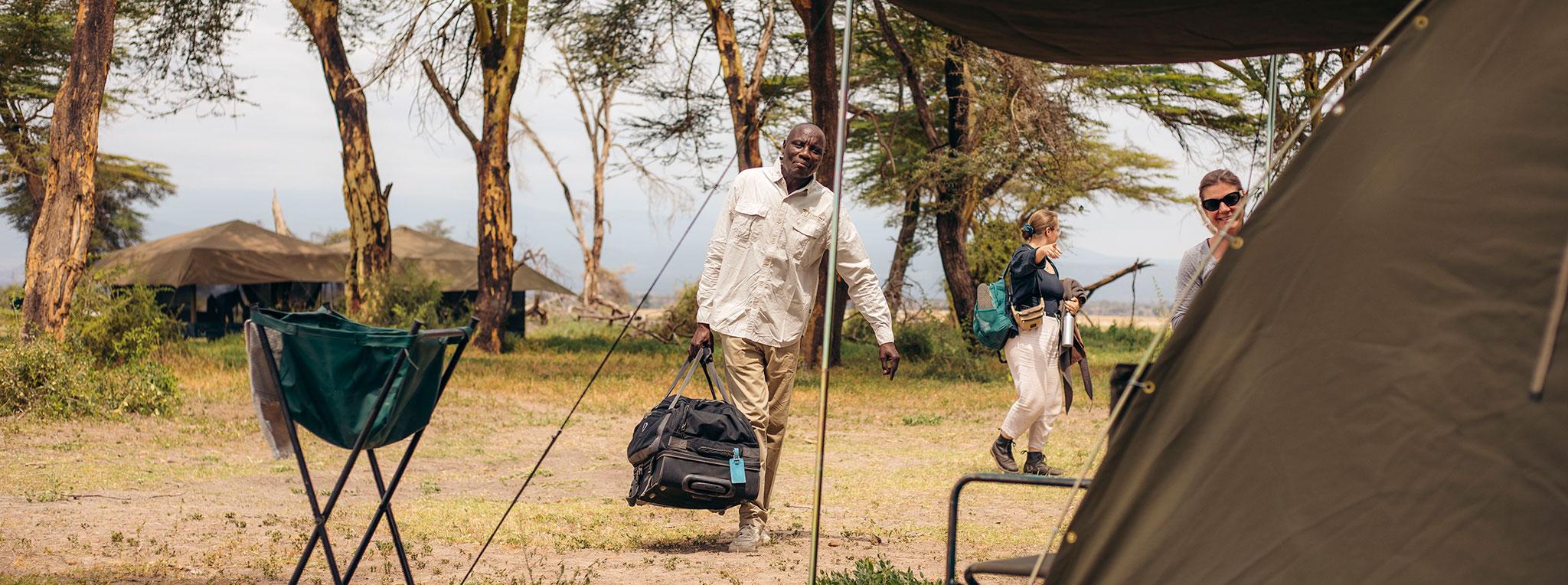
WHICH TYPE OF TRAVEL BAG SHOULD I BRING?
Bring soft-shell bags on your tanzania safari.
Remember keep it light, soft and simple. We recommend bringing a medium sized soft-shelled bag on your Tanzania safari and we kindly ask you to limit the weight of your luggage to 15kg, plus one piece of hand luggage.
You will spend quite a bit of time in our specially adapted Toyota Land Cruisers. Whilst designed for comfort and to give you the best game-viewing experience possible, space is king when sharing a vehicle with other people. Choosing a soft-shelled bag will help us when loading the boot of our 4×4 vehicles. For this reason, we suggest a soft-shelled bag over a bulky suitcase or trolley bag.
Another good tip is to pack a small day bag to take with you on game drives. They are perfect for carrying binoculars, guide books, suncream, water and anything else you might need. Remember, the smaller the better. If you are travelling in a couple, you could consider sharing a small day-bag.
Tanzania has banned plastic bags, so packing a small travel tote-bag could be very useful for when the need arises.
WHICH CLOTHES TO PACK FOR TANZANIA - OUR PACKING TIPS
Thinking about which clothes to pack for a Tanzania safari? Here are some suggestions:
The right colour clothing. Khaki-coloured clothing is not a must. However, we do recommend soft, light-coloured clothes that have long sleeves and trousers to protect you from the sun and biting insects. During game drives bright colours and camouflage are not recommended. Tsetse flies are reportedly drawn to blue and black, so avoid these colours if travelling to woodland or marshland areas.
Bring something warm. Tanzania has an excellent climate, which you can read about on our best time to visit Tanzania page . However, depending on the time of year and where you want to visit, temperatures can fall rapidly at night. Especially if you are at altitude, such as Ngorongoro Crater of Mount Meru. Consequently, early morning game-drives can feel quite cold, so it is important to pack a warm set of clothes. A compact scarf can keep your ears and neck warm.
Sun protection. Cool windy mornings and staying at altitude can mask the strength of the sun. Suncream, shades and hat are highly recommended, even if you do not usually use them.
What shoes to bring. Hiking boots are not essential, but soft closed shoes are. If a pair of flip-flops are your choice, no problem, but pack some closed-shoes for sitting around the campfire.
Pack a costume. During the heat of the afternoons the pace of a safari comes to a halt, as game and humans alike seek out the coolest, shadiest parts of the parks. Luckily, some of the accommodation that you will stay in will have incredible swimming pools, so do not forget to pack a swimming costume to cool-off in style.
A flash of flare. Pack a flash of flare for a classic safari dinner. However, remember keep it light, soft and simple.
Dress code. In some parts of Tanzania, such as Zanzibar, there is a dress code where visitors are expected to cover their bodies from their shoulders to their knees in public places. You can wear casual clothes in the majority of the accommodation, but some luxury lodges and camps request smart clothes during dinner.
Finally, if you book a safari to Tanzania, we will send you a detailed packing list.

Soft-shell bags like the bags on the right take up less space in a safari vehicle – the preferred safari luggage!
MISCELLANEOUS ITEMS - SAFARI PACKING LIST TANZANIA
Some other items to consider when packing for your safari to Tanzania are:
- A good guidebook with a map, country guide and list of Swahili phrases is a must. A section on identifying East African animals, birds, insects and reptiles is essential. Your senses will be triggered with a number of fascinating things during your safari and a good guide-book is the perfect companion for your journey.
- A first aid kit for any unexpected cuts and grazes.
- Basic medication and prescriptions that you require.
- Spare glasses for those who use glasses.
- Binoculars are an excellent tool during a game drive.
- Caps and wide brimmed hats block out the low sun on early-morning or late-evening drives and enable you to spot something moving in the grass.
- Plug adapters are really important. Type D plugs are used in Tanzania.
- Water proof bag to protect your electronics from the dust.
- Refillable water bottle is essential on your safari to cut down on buying plastic bottles. We carry drinking water containers in our cars and fridges so you can refill you bottle while on game drive.
- Head torches are always incredibly useful, even if you go on a lodge safari.
- Malaria prophylaxis and mosquito repellent. Consult your doctor before you travel.
- Money belt or hip bag for documents and money.
- An alarm clock for those early morning game drives.
IMPORTANT TRAVEL DOCUMENTS TO BRING ON YOUR TANZANIA SAFARI
Travel advice can change at any time, so please refer to your local Tanzania Embassy/Commission to keep up-to-date with understanding what travel documents to bring to Tanzania.
Generally, we do recommend bringing the following travel documents with you to Tanzania:
- A passport which must be valid for at least 6 months after your intended departure date.
- A visa is required for a large number of visitors to Tanzania and are obtainable when you arrive. However, to avoid queuing as much as possible when you land in Tanzania, we highly recommend obtaining an E-visa before you arrive. You can do this via an online portal or at your local Tanzania Embassy/Commission. Visas typically take 2 to 3 weeks to be issued.
- A yellow fever vaccination card is required if you are entering from a yellow-fever-infected country such as Kenya and Uganda.
- A return flight or proof that you have the means (a credit card) to pay for an onward flight.
- A form of payment. Remember to notify your bank that you are travelling to Tanzania.
- A copy of your travel insurance and other important documents.
- A credit card in case of an emergency.
DISCOVER EXCLUSIVE TANZANIA SAFARIS
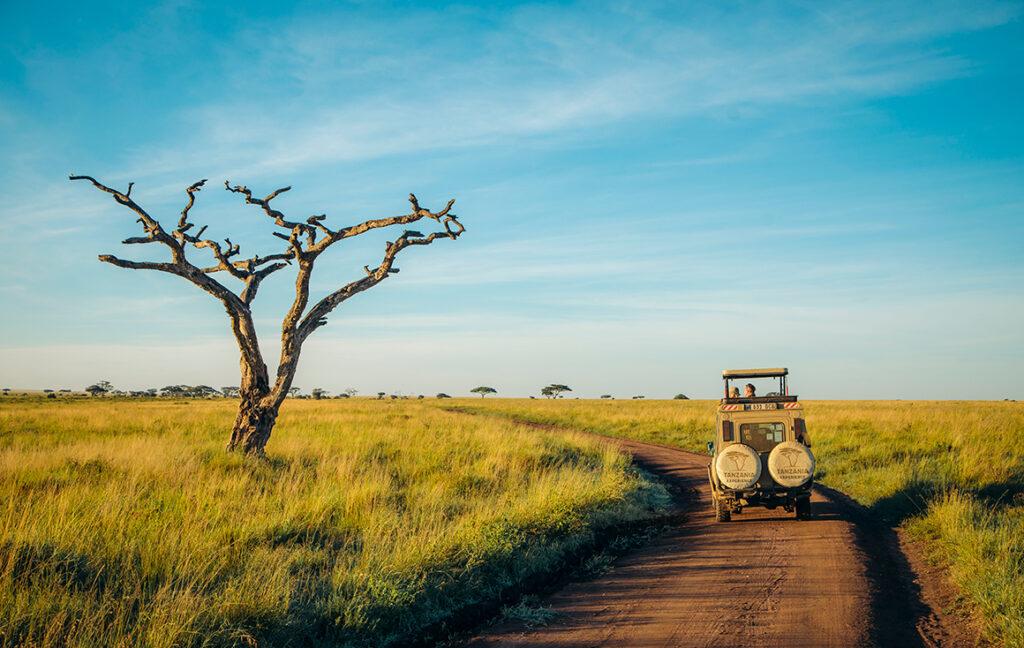
Private Safaris
Travel your way: a unique and tailor-made experience, just for you.
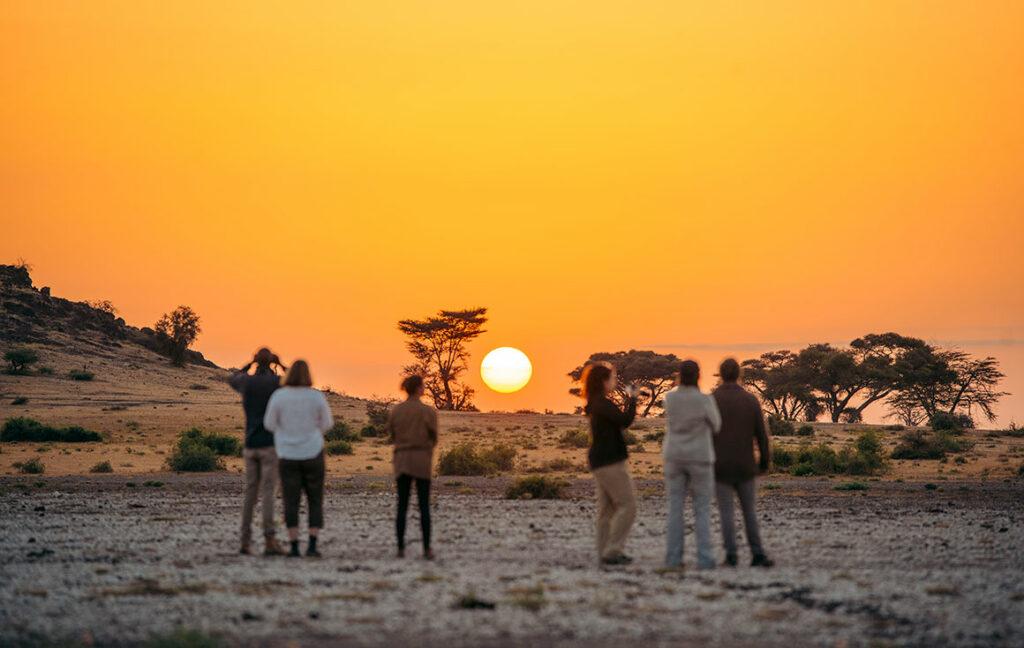
Small Group Safaris
Lower prices, same great safari experience.
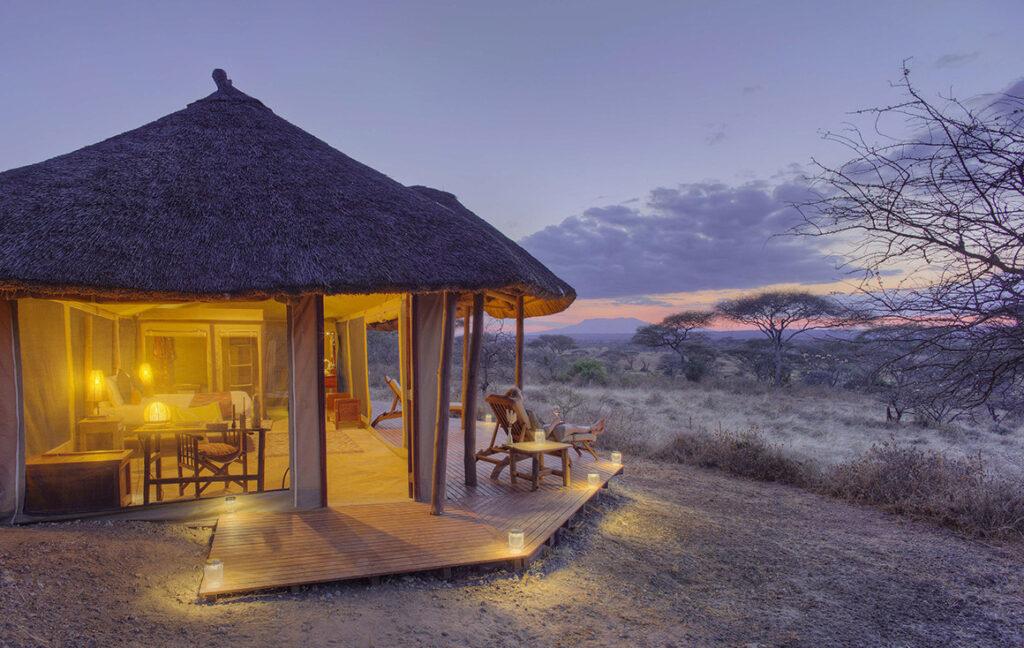
Luxury Safaris
Remoteness and privacy await you on exclusive journeys.
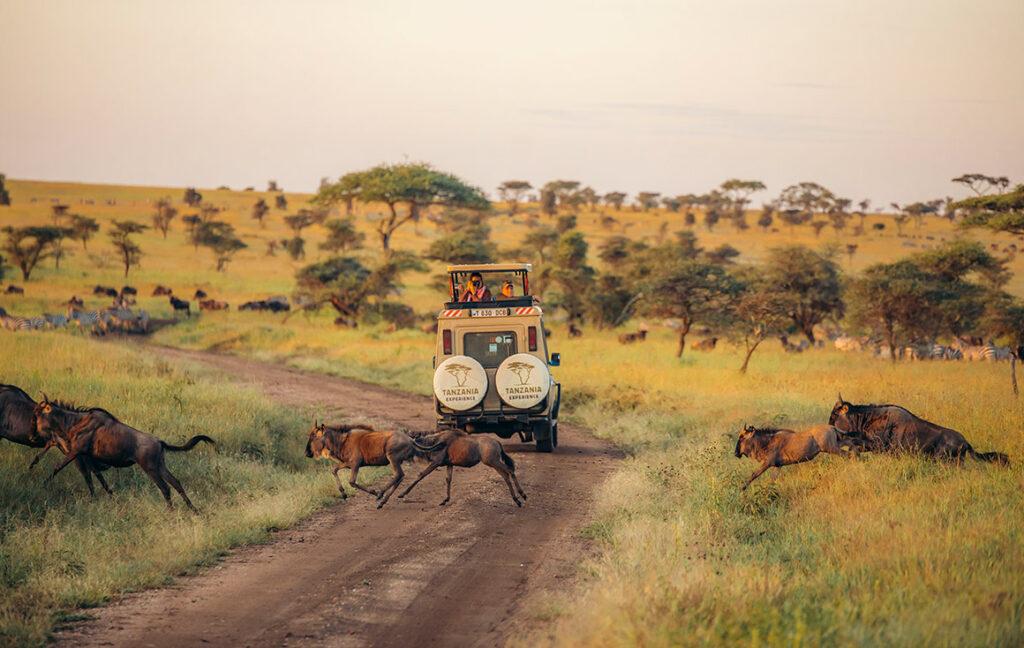
Lodge Safaris
Travel with your local guide and stay at personal camps and lodges.
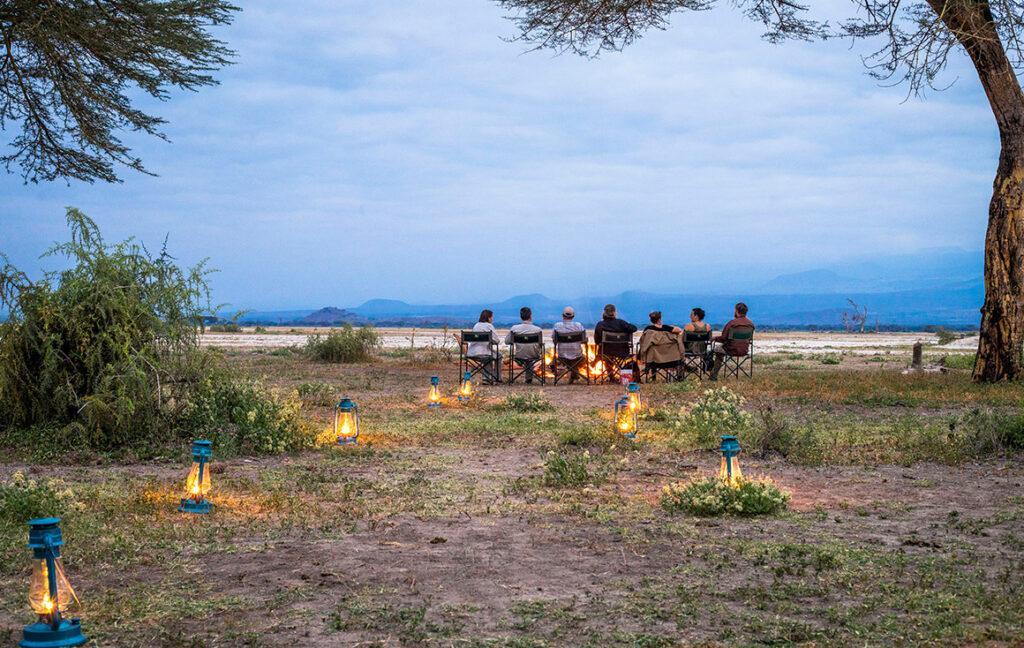
Mobile Explorer Safaris
Explore Tanzania's wilderness areas on comfortable camping trips.
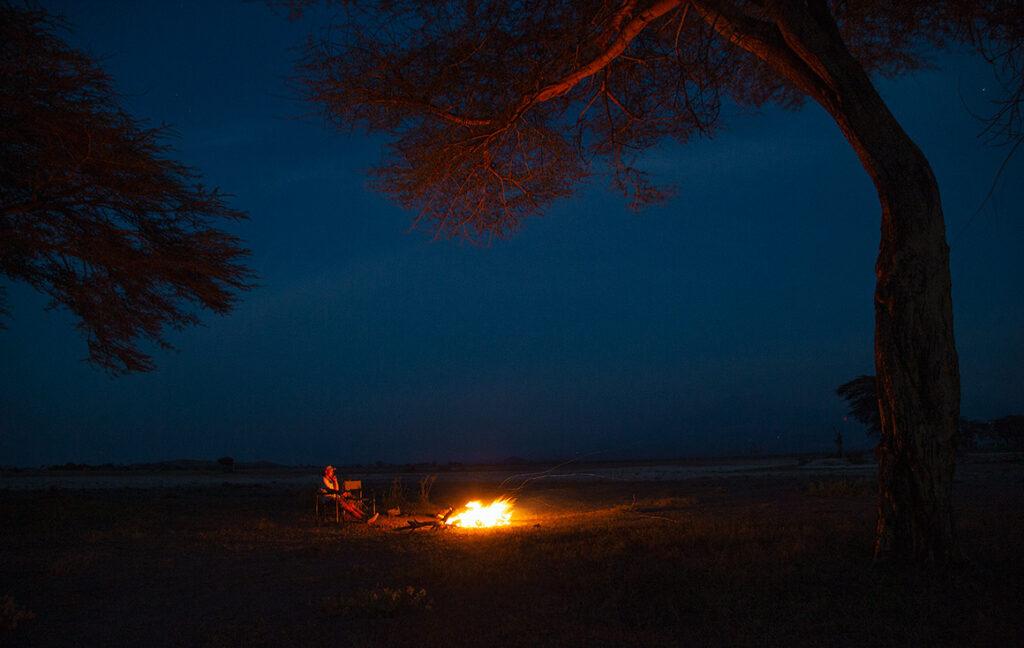
Camping Safaris
Go back to basics in Tanzania's great outdoors.
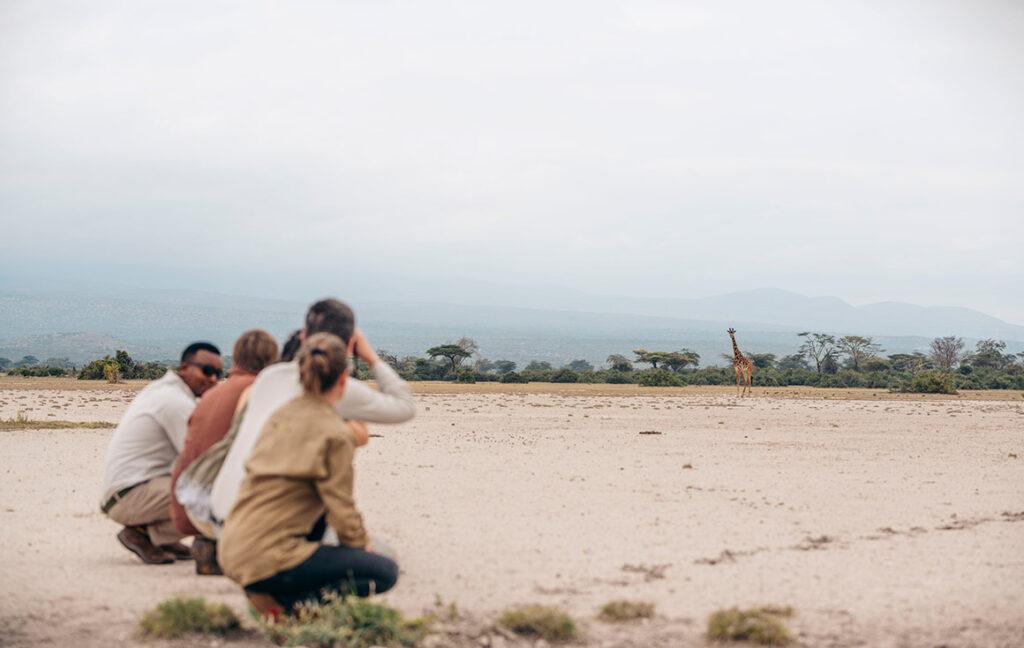
Tailor-Made Safaris
Travel your way: a unique and personalised experiences, just for you.

OUR EXPERT ADVICE
Don't pack khaki only.
We provide our guests with classic safaris throughout Tanzania. One of the iconic moments of a classic safari is a safari dinner. Lanterns hanging in acacia trees, a star filled sky and the sounds of the night are the romantic backing to your dinner. You might not want to wear heavy trekking boots on this occasion. Our expert advice is to pack something light, soft and simple to wear at dinner to make this experience even more special.
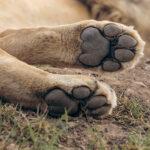
Experience Tanzania with us
Speak to one of our travel experts, let's start planning your trip.
We will get back to you within 2 working days.

Travel Tips – 10 important Facts for Tanzania Safari & Zanzibar
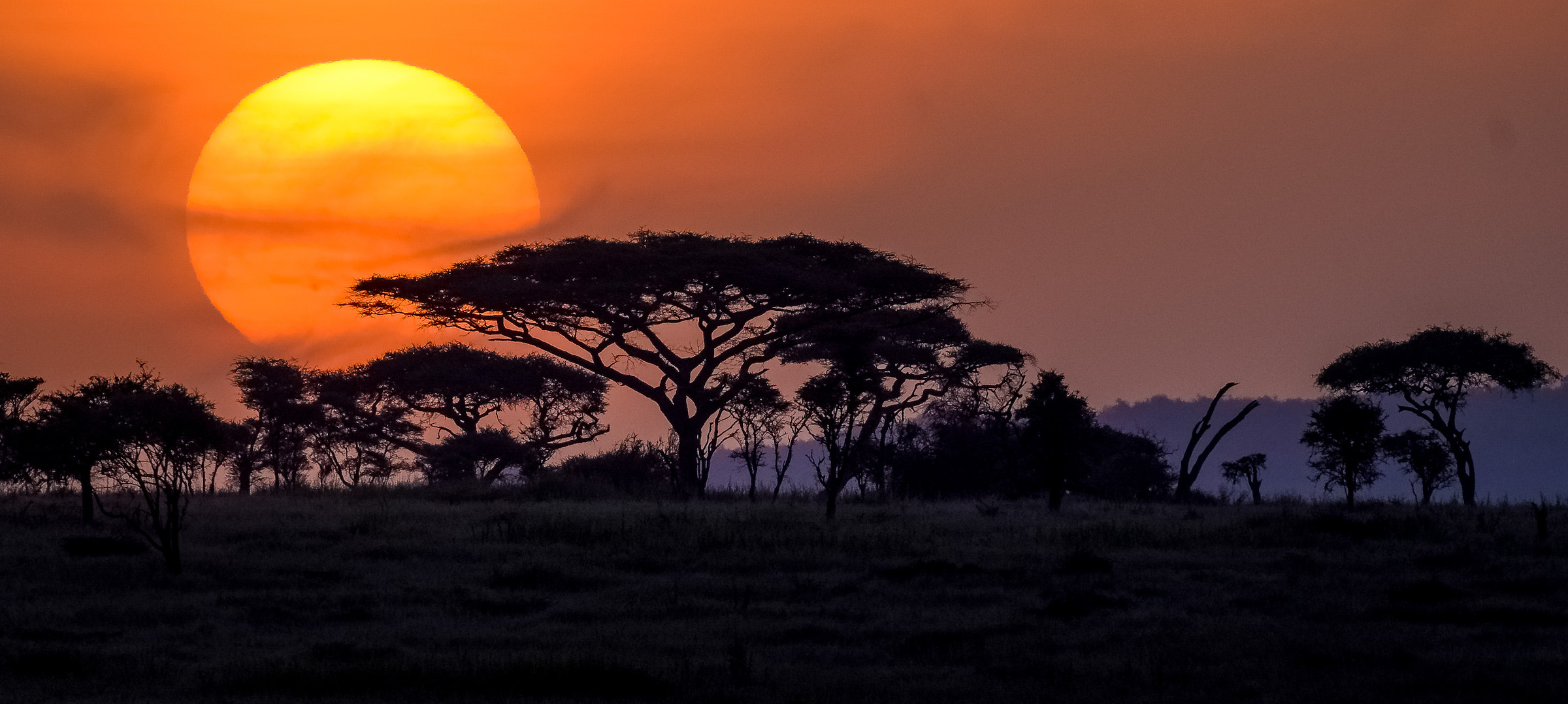
These are the 10 most valuable 10 Tanzania Travel tips . Are you planning to travel to Tanzania for your safari in Africa ? It is always good to get to know a few things about a destination before travelling and here we have listed a few things that you need to know before travelling.
We have listed 10 important facts that you need to know before packing your bags and travelling to Tanzania for your trip of a lifetime and we hope you will find the information useful.
1. ACCESSIBILITY :
Tanzania has three major International Airports through which the country can be accessed; namely Julius Nyerere International Airport, Kisauni Airport Zanzibar and Kilimanjaro International Airport. You can book your flights through these three airports if you are planning your next Zanzibar beach vacation or Tanzania safari tours . Several International Airlines in the world operate scheduled flights to Tanzania. This includes Kenya Airways, Ethiopian Airways, KLM Royal Dutch, South Africa Airways Fly SAA, Lufthansa Air, Air France, British Airways BA, Swiss Air, and Egypt Air. Many travelers also arrive through the regional hub of Jomo Kenyatta International Airport in Nairobi From here travelers can catch Connection (regional) flights to Kilimanjaro, or transfer by road through Namanga border There are shuttle buses scheduled for morning and afternoon departures everyday in to and from Arusha and Namanga. Please read more on our flights to Tanzania.
2. LANGUAGE :
The National language in Tanzania is Kiswahili. The National languages are both Kiswahili and English. English is widely spoken in major towns as well as in villages.
3. CURRENCY :
The national Currency is the Tanzania Shilling. The most widely accepted currency is the USD. The USD and other major European currencies can be changed in many Forex bureaus in major towns of Tanzania. It is highly recommended that you change money in Forex bureaus and banks and refrain as much as possible from changing money in the streets. There is an increased access to ATM Machines in all major towns.
4. HEALTH :
Yellow vaccination is a requirement in a while the and you can obtain the vaccination from home at least 10 days before arrival into Tanzania. The requirement is not all that strict anymore but it saves time to obtain the vaccination prior to travelling to Tanzania. Malaria prophylactic drugs should be taken before travelling. Sleep under a mosquito net. A sunscreen is good to pack as well as sunglasses. Drink only bottled or Boiled water and try to avoid salads and ice cubes.
5. CLIMATE :
In general; the climate is hot and dry. Long rains arrive mainly in March – May ,with cool nights and mornings June – October, Short rains in November to mid December. Seasons can although vary owing to a variety of factors. The coastal strip is usually hot and humid almost year round. On Mt Kilimanjaro and Mount Meru in Tanzania temperatures can drop to below freezing point.
6. CLOTHES :
On safari please pack light clothes cottons preferably. A jacket or fleece is god to pack for chilly mornings and evenings sometimes and at some high altitude places. At the Coast and at Zanzibar Island; revealing clothing especially in Stonetown is highly discouraged. Please see packing list for Mount Kilimanjaro .
7. PHOTOGRAPHY:
Taking photos of government buildings is prohibited and so with taking photos of locals without their permission. Take as much photos as possible responsibly.
8. INSURANCE :
We offer only Air rescue ambulance cover. Please take your travel insurance before traveling.
Visas to Tanzania can be obtained online or on arrival from all entry points; airports, borders and port harbor. Currently the Tanzania visa costs some USD 50 per person, and American passport holders pay USD 100 per person.
10. SECURITY :
By far Tanzania is a safe haven for travelers but it is important to be vigilant. Avoid walking at night in the streets unescorted and do not reveal so much jewellery. If you must carry your valuables please deposit them at the Hotels/and lodges.
10 Essential Tips for a Camping Safari in Tanzania
Last Updated on April 3, 2024
A group camping safari in Tanzania is one of the best ways to experience Tanzania’s national parks like the Serengeti, and Ngorongoro Crater.
It’s one of the more budget-friendly and sustainable approaches to seeing wildlife in Tanzania, and it gives you the chance to experience camping like you never have before.
You’ll watch epic sunsets over the plains of the Serengeti, hear the sounds of hyenas in the middle of the night, and wake up at the crack of dawn for early game drives.
Below, I’m sharing what to expect on a camping safari in Tanzania, answers to common questions, and 10 tips for going on a camping safari – all based on my own experience.
Group Camping Safari in Tanzania: What to Expect
10 tips for going on a camping safari in tanzania, 1. bring a zoom lens or binoculars, 2. pack a headlamp, 3. prepare for dust and mud, 4. pack plenty of warm clothing, 5. prepare for long drives, 6. take a power bank along, 7. don’t leave anything outside your tent, 8. have cash on hand for snacks, 9. bring cash for tipping safari guides, 10. plan for a rest day after safari, why you should go on a camping safari in tanzania.
Wondering what to expect on a camping safari in Tanzania ? Here’s what our experience was like.
We booked a 5 night, 6 day camping safari through G Adventures. The safari started and ended in Arusha , Tanzania. We chose to go with G Adventures because we wanted to join a group versus doing a private safari, and we appreciate their attention to responsible tourism practices .
The first day of the safari was orientation. Everyone in our group arrived in Arusha, and checked into a lodge where we had a short introduction with our lead guide, and then a group dinner.
The following day, we officially started safari. There were 10 tourists in our group. We were split between 2 safari vehicles, both of which had a driver. Our lead guide, Moses, switched between the two vehicles every day.
There was also a 3rd vehicle that carried our camping equipment, food, and water. In this vehicle was a support team of three. They took care of setting up and tearing down our tents, and cooking meals.
Our days started early in the morning – we were typically on the road by 7:00 AM – and ended in the early evening. We always had breakfast and dinner at the camp, and a packed lunch in the middle of the day.
It was quite an operation but it ran very smoothly! All our meals were hot and delicious, and our tents were spacious and dry.
Camping in Tanzania: Common FAQs
Here are the answers to some common questions about going on a camping safari in Tanzania.
Is it safe to camp in Tanzania?
Yes, it’s safe to go on a camping safari in Tanzania. Animals in the national parks won’t break into tents. When leaving your tent, particularly at night, just be sure to always zip the tent completely shut. When walking around the camp at night, carry a flashlight or wear a headlamp so you announce yourself to animals, and can see what’s ahead of you.
When is the best time of year for a camping safari?
The best time to go on a camping safari in Tanzania is during the dry season from late June to October. During this time of year there’s little to no rain, and you’ll have the chance to see the “Great Wildebeest Migration,” which is when wildebeest journey in large masses through the Serengeti to Kenya.
Does it get cold camping in Tanzania?
It can get cold while camping in some of Tanzania’s parks, depending on elevation. For example, camping on the rim of the Ngorongoro Crater, which is at 7,500 feet, can be quite cool at night. However, with a sleeping bag and warm layers, you’ll stay warm enough while you sleep.
What are campsites in Tanzania’s national parks like?
The campsites in Tanzania’s national parks have all the basic amenities you need to comfortably camp: toilets, showers, cooking areas, seating areas, and a few power outlets for charging devices. Some, but not all, have wifi and hot water.
If you’re investing in going on a camping safari in Tanzania, make sure you go on the trip prepared with the right camera.
While on safari, animals will sometimes venture very close to your vehicle. On ours, several elephants walked right past us on the road!
But that won’t always be the case. Some animals, particularly rhinos and cheetahs, are more elusive. You may only get the chance to spot them from afar.
To help with getting a better view of animals that are more shy, bring binoculars.
You can also reach out to your camping safari operator to see if their vehicles will be equipped with binoculars. Our vehicle had 2 pairs, shared amongst our group of 6.
You’ll also want a camera that has good zoom capability so that you can capture animals that are further away.
Many phones these days can zoom quite far. If you’re bringing along a DSLR camera, consider investing in a solid zoom lens for the trip (if you don’t already have one).
A headlamp is essential for a camping safari because many of the camps will have limited lighting after dark. You’ll use your headlamp to see while inside your tent, and to navigate around the campground after dark.
While you can definitely use the flashlight on your phone for lighting, I found that using a headlamp was more comfortable because when wearing it, your hands are free.
When you need to pack your bags inside a dark tent before the sun rises, you’ll be grateful for the headlamp!
While on a camping safari in Tanzania you’ll be driving on mainly dirt roads. During the dry season, this means lots of dust, and during the rainy season, it means dust and mud.
Because safari jeeps typically have windows that open and a pop-up roof, a lot of dust and mud ends up inside the vehicle… and all over you.
To stay comfortable, you’ll want to prepare for this by packing hand wipes (or baby wipes), a microfibre towel for showering, and flip flops for showering.
Hand wipes are useful throughout the day if you’re feeling the need to clean up your hands or face.
At the end of a long day of driving, you’ll be ready for a shower. Some of the campsites we stayed at only had cold showers, but still, we wanted one every night.
A microfibre towel is easy to pack and dries quickly, and flip flops are comfortable to wear walking to and from the shower, and while showering.
Tanzania’s national parks are at various elevations, and so temperatures will change throughout your camping safari. Depending on the season, you’ll also need to be prepared for rain.
It’s best to pack layers with plenty of warm options like socks, leggings, and sweaters. Bring a lightweight good-quality raincoat.
Most days you’ll want to start out wearing comfortable lightweight pants, a t-shirt, sweater, and a light jacket. Throughout the day, temperatures will rise, and so you’ll likely remove layers as it warms up, and then layer back on as it cools down in the evening.
The main parks that are part of a camping safari itinerary in Tanzania are Lake Manyara National Park, Ngorongoro Crater, and Serengeti National Park.
The distances from Arusha to these parks are quite long, and you’ll also be on daily game drives that are typically 3+ hours long. The roads can be quite rough (most of the are dirt roads) and so this adds driving time as well.
Daily drive times will vary depending on the tour operator you book with, and their itinerary, but it’s safe to assume that you’ll be driving for several hours a day.
While the amount of driving sounds tiring, it’s all part of the experience. I found that the driving wasn’t nearly as bad as I expected it would be because there was always so much to see. Even when driving between the parks, you’ll spot tons of wildlife.
Prepare for these drives by doing a few stretches in the morning before hopping in the jeep, and downloading some travel podcasts to listen to (like my podcast, Curious Tourism !).
While on a camping safari there will be two options for charging your devices. Safari jeeps have charging outlets that can be used while driving.
And, the campsites will usually have a few outlets for charging. These outlets are typically in a shared, public space like the bathrooms or cooking areas.
Bringing a good-quality power bank is a nice back-up for charging your phone or camera in the moments where you can’t access an outlet. I used a power bank to recharge my phone in our tent overnight.
While camping in the Serengeti, I left my favorite pair of Teva sandals outside our tent one night before going to sleep.
The next morning, I discovered them a few feet away from our tent, with the straps completely chewed off. When I showed our camping safari guide, Moses, he couldn’t believe it! Definitely hyenas, he told me.
Luckily, the soles of my sandals were totally untouched, and so I was able to get them fitted with new straps in Moshi, Tanzania, for just a few dollars.
Learn from my mistakes! Don’t leave anything outside your tent overnight while camping in Tanzania.
Here I am with my sandals the morning I found them, and then in Moshi with the sandals just moments after I picked them up from the street vendor who re-strapped them.
Most camping safaris in Tanzania will include all of your meals, and so there won’t be much else to spend money on. But, there will be occasional rest stops where you can buy coffee, tea, and snacks.
For example, the park entrance gates usually have a small canteen, and we were always happy to grab a coffee there.
You’ll also want to bring cash for tips. A camping safari involves a lot of logistics, and the days are long. Please plan to generously tip the team supporting your safari. This includes the lead guide, drivers, and cooks.
What you choose to give is entirely up to you, but the guidance we learned is to tip your guide and driver around $8-10 USD per person, per day, and to tip the cooks / chef $5–10 USD per guest, per day.
After several days of driving and camping you’ll be pretty tired, so you’ll want to plan to have a relaxing day after your safari.
Not only is your body tired, but you’ll have had such an incredible experience seeing landscapes and wildlife, you’ll need a day to process it all!
We spent three days in Arusha after our camping safari taking it easy. We spent lots of time journaling, recording what we had seen and experienced, and of course, seeing Arusha.
After safari, consider visiting more of the region around Arusha, or take a Precision Air flight to Stone Town to enjoy sunshine, beaches, and more on the island of Zanzibar.
I recommend a camping safari because it’s one of the more sustainable tourism approaches to safari.
When you travel into Tanzania’s parks, you can see how much is involved logistically in running lodges, particularly luxury lodges. A lot of resources are used to create these luxury experiences in such remote locations.
On a camping safari, the amount of resources used to support the trip is reduced. Our support team brought only what we needed.
We also noticed that our meals were all packed using reusable containers and cutlery, whereas other groups we saw in the parks ate meals packed in disposable containers and wrapping.
A camping safari is also one of the most budget-friendly ways to go on a safari in Tanzania – And, it’s exciting! Camping means you’ll be as close to Tanzania’s incredible nature as possible. You’ll fall asleep and wake up to the sounds of wildlife.
More From Pina Travels:
Is Stone Town Worth Visiting? 14 Reasons to Go
What not to do in tanzania: 20 essential tanzania tips, precision air review: how to fly domestic in tanzania, what not to do in stone town: 18 essential stone town tips.
Erin has been traveling for over a decade, both solo, and with her partner. She’s now traveled to countries across 6 continents, and has lived in 2 countries abroad. Erin also hosts the travel podcast, Curious Tourism , where she interviews travel industry thought leaders and experts about responsible tourism. Learn more about Erin, and get in touch with her, here .
Related Posts
Tanzania Tipping Guide
by Khuzeima Zavery | Jun 9, 2023 | Travel Guide

Tipping is one of those things that can cause anxiety and uncertainty if you are not familiar with the norms, cultures and traditions. This is especially true when you are traveling to a remote place that you have never visited before – say Tanzania.
We have created our handy Tanzania Tipping Guide to help answer some of the most common questions we get from our guests. We update it from time-to-time to incorporate more answers for questions our guests have asked.
Let’s get straight into it.
- Is tipping mandatory on a Tanzania Safari?
- Which is better, personal tips or a tip jar?
- What is the right time to tip?
- How much should I tip?
#1 Is tipping mandatory on a Tanzania Safari?
No. Tipping is not mandatory in the Tanzanian service and tourism industry. However , it is a bit customary. It is seen as a way to show your appreciation for the services provided. However, whether you tip or not should come down to your level of satisfaction with the service, you should never be forced into a situation where you feel you absolutely have to tip.
Our view is that tips, when deserved, can help boost the confidence of the staff and validate the care and attention that they provide.
Simplified rule: If you are satisfied and want to tip, absolutely do so. If you aren’t satisfied, it is ok to not do so.
#2 Which is better, personal tips or a tip jar?
Most camps and safari lodges and camps have a community tip jar at the reception. On balance, we find that these jars have a greater common good since a successful rendering of a service often involves a lot of staff that you will likely never meet or see – the background team.
Tip jars ensure that your tip and appreciation go to everyone that made your service so great.
However, you are always welcome to tip individually as well. If you do want to tip a particular team/staff individually then you certainly can. It is NOT frowned upon in any way. E.g. a helpful porter, a dedicated waitress.
#3 What is the right time to tip?
The right time to tip comes down to your own personal choice: whether you choose to tip individually or in a tip jar.
At camps and lodges If you are tipping individually, it is perfectly acceptable to tip each time a staff member serves you, e.g. porters, waiters/waitresses. It is also acceptable to tip a staff member individually at the end of your stay; however, keep in mind that sometimes it may be difficult to locate a particular staff member at the end.
If you are tipping in a tip jar, the standard practice is to tip during checkout.
For your safari driver-guides When it comes to tipping your safari driver-guide, the customary practice is to at the end of the safari, as you bid farewell. Not only does this allow you to assess the overall quality of their service but also is seen as a parting gift.
#4 How much should I tip?
There are no set rules or expectations of a particular % amount in Tanzania. It is left to you to decide what you feel comfortable with. Our guidelines may help you determine the appropriate amounts in some situations.
If your expectations have been exceeded, feel free to go above the guidelines. If you are not,
Tip: For ease of tipping, we recommend carrying some loose change with you, either one-dollar bills, or equivalent in the local Tanzanian currency. You can also carry Euros or Sterling Pounds, both are generally accepted – just keep an eye on the currency conversion rates .
Always remember, tipping is a personal decision, and the amount should be based on your satisfaction and financial means.
Tipping your safari driver-guides
Small Group Safaris, between 2-4 people You may tip between USD 10 and USD 20 per traveler, per day.
Large Group Safaris, more than 5 people You may tip collectively between USD 30 to USD 40 per group, per day.
For half-day safaris and tours, you may tip half the suggested range. Tips to Safari Driver-Guides are usually given at the end of the Safari when bidding farewell.
Tipping staff at camps and lodges
You may tip between USD 2 and USD 4 per traveler, per day – at checkout if you are tipping in the community tip jar, or you may also tip a similar amount individually to help and support staff that have served you personally during your stay.
Tipping Staff at Restaurants
Tips of between 3-5% of the total bill are considered normal, whereas tips of about 10% of your bill would be considered very generous. If you are paying by card, and the establishment does allow you to process a tip payment, then you can do that as well.
Tipping Porters
Hotel and airport porters may be tipped USD 1.00 to USD 3.00 either each time you happen to use them or in general upon checkout (if part of a Camp or Lodge).
Tipping City/Airport Transfer Drivers
Final thoughts.
While this Tanzania Tipping Guide is designed to help you get a starting point, it is by no means cast in stone and you may use your own experience and you own good judgement to tip, or not to tip, the way you deem reasonable.
As an important reiteration, you should never be made to feel pressured into tipping. If you are ever in such a case then engage your safari guide, or better yet your safari operator, and bring up the issue so that it can be worked on.
More from the blog

A Hot Air Balloon Safari in the Serengeti
by Khuzeima Zavery | Travel Guide
A hot air balloon safari in the Serengeti is an experience that has to be lived. It begins early, embracing the anticipation that comes with an early morning adventure. Before the world awakens, a safari vehicle arrives to collect you from your lodge or camp,...

Serengeti vs Maasai Mara
The Serengeti vs Maasai Mara: The Serengeti and the Maasai Mara (sometimes also written as Masai Mara) are two of the most popular safari destinations in Africa, known for their diverse wildlife and stunning landscapes. Each offers an amazing and authentic safari...

Types of accommodation in the Serengeti
Understanding the types of accommodation in the Serengeti is usually one of the first steps in planning your safari. It is one of those tricky things that can have a great impact on your safari experience in the Serengeti. WhatIn this article, we will delve into three...

Passing Thru Travel
A Guide to the 10 Best Safari Experiences in Africa
Posted: February 20, 2024 | Last updated: February 20, 2024
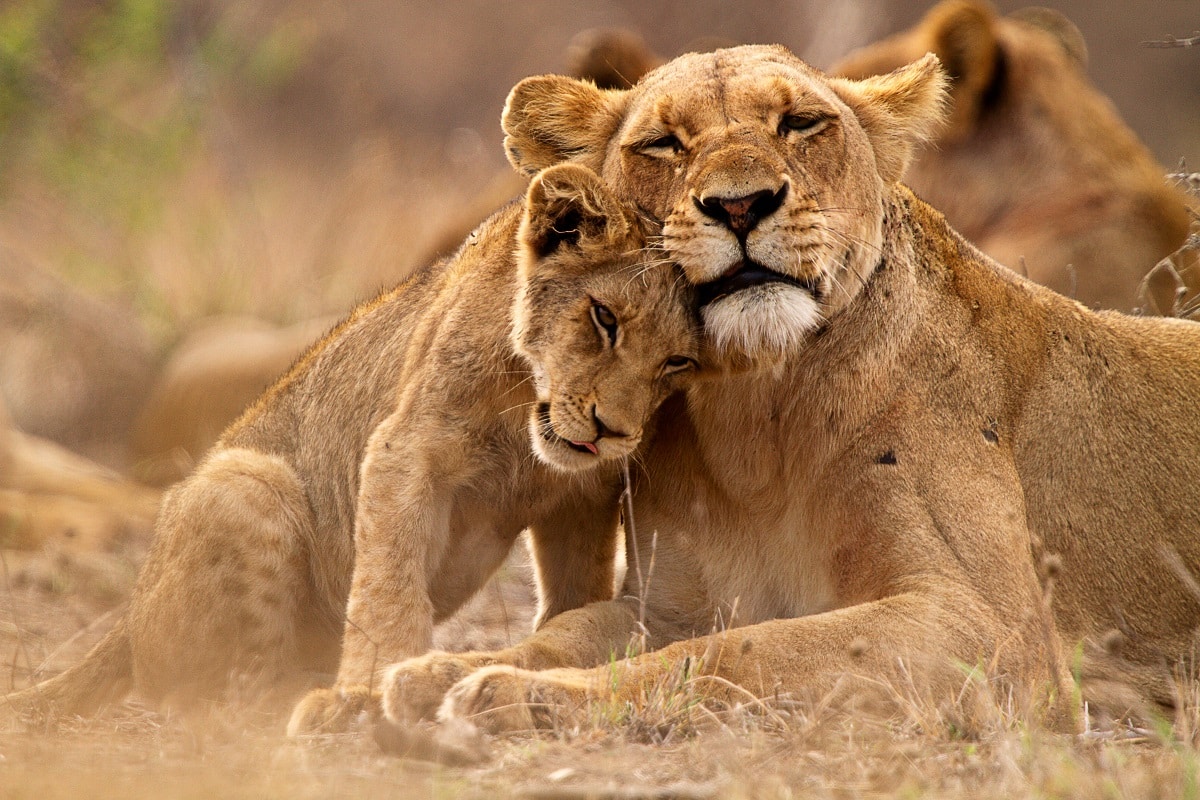
Embarking on an African safari is an experience like no other. The continent’s vast and diverse landscapes, rich wildlife, and unique cultural heritage make it a dream destination for nature and adventure enthusiasts. From the savannas of the Serengeti to the deltas of Botswana, each safari destination offers a unique glimpse into the wild heart of Africa. This guide will take you through ten of the best safari experiences in Africa, providing insider tips to help you make the most of your adventure.

Serengeti National Park, Tanzania
In the Serengeti National Park, you’ll witness the quintessence of the African savanna. The vast open plains are home to the Great Migration, an awe-inspiring natural spectacle where millions of wildebeest and zebras journey in search of greener pastures. The park’s diverse habitats, including riverine forests and swamps, are teeming with wildlife, from lions and leopards to giraffes and elephants. For a unique experience, plan an early morning hot air balloon ride, providing a stunning aerial view of the plains at sunrise.
Insider’s Tip: Book a hot air balloon safari for an unforgettable aerial view of the migration.
When To Travel: June to October for the migration; January and February for the calving season.
How To Get There: Fly to Kilimanjaro International Airport, then a local flight to the Serengeti.
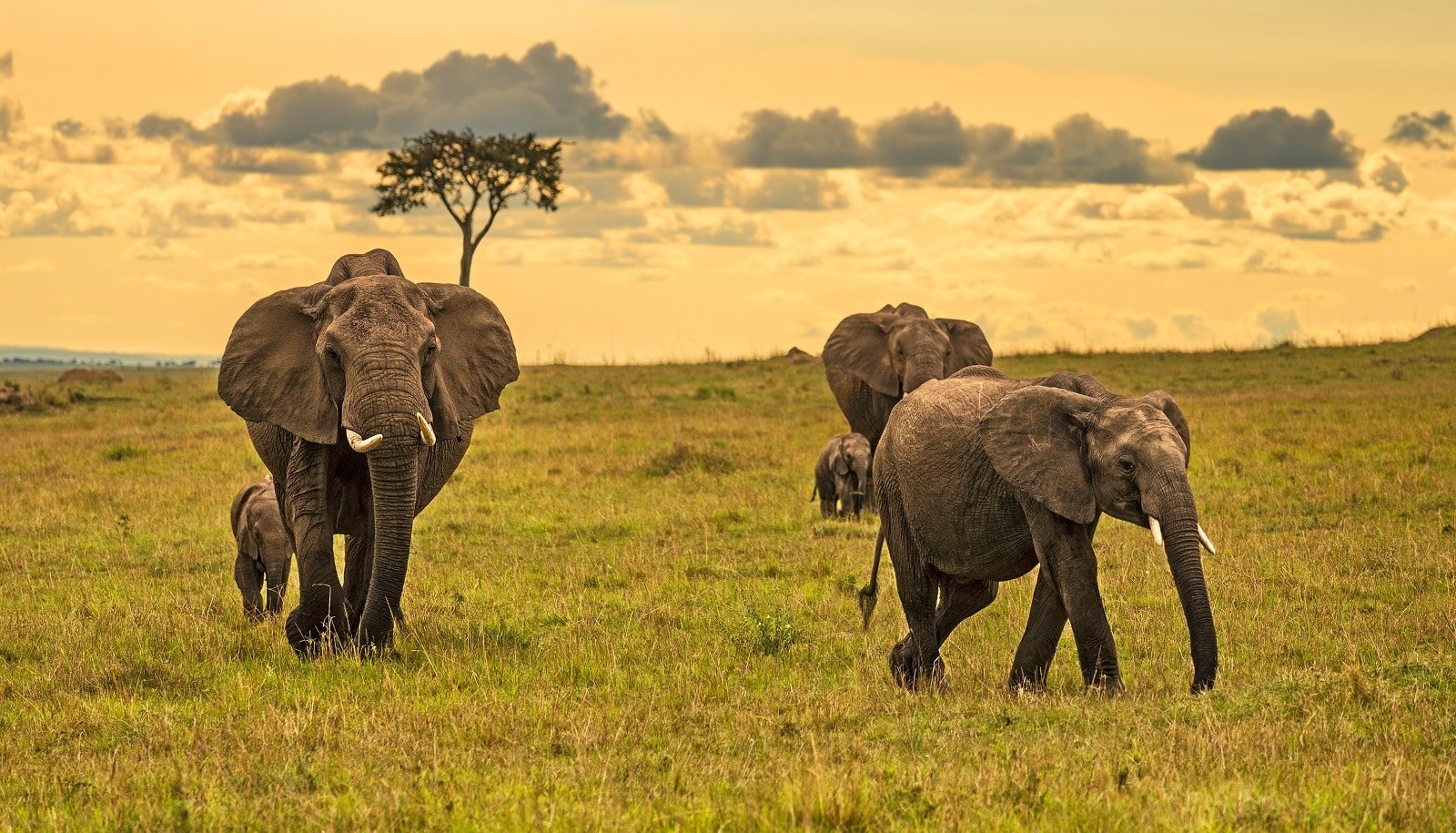
Maasai Mara National Reserve, Kenya
In the Maasai Mara, you’ll experience one of Africa’s most abundant wildlife reserves. It is best known for the migration period when massive herds cross the Mara River. However, it’s also home to the Big Five and an excellent location for spotting predators in action. The Mara’s landscape of rolling grasslands and acacia woodlands adds to its charm. Consider visiting a local Maasai village for a cultural insight into the lives of the indigenous community.
Insider’s Tip: Visit a Maasai village for a cultural experience.
When To Travel: July to October for the migration.
How To Get There: Fly to Nairobi, followed by a local flight or drive to the reserve.
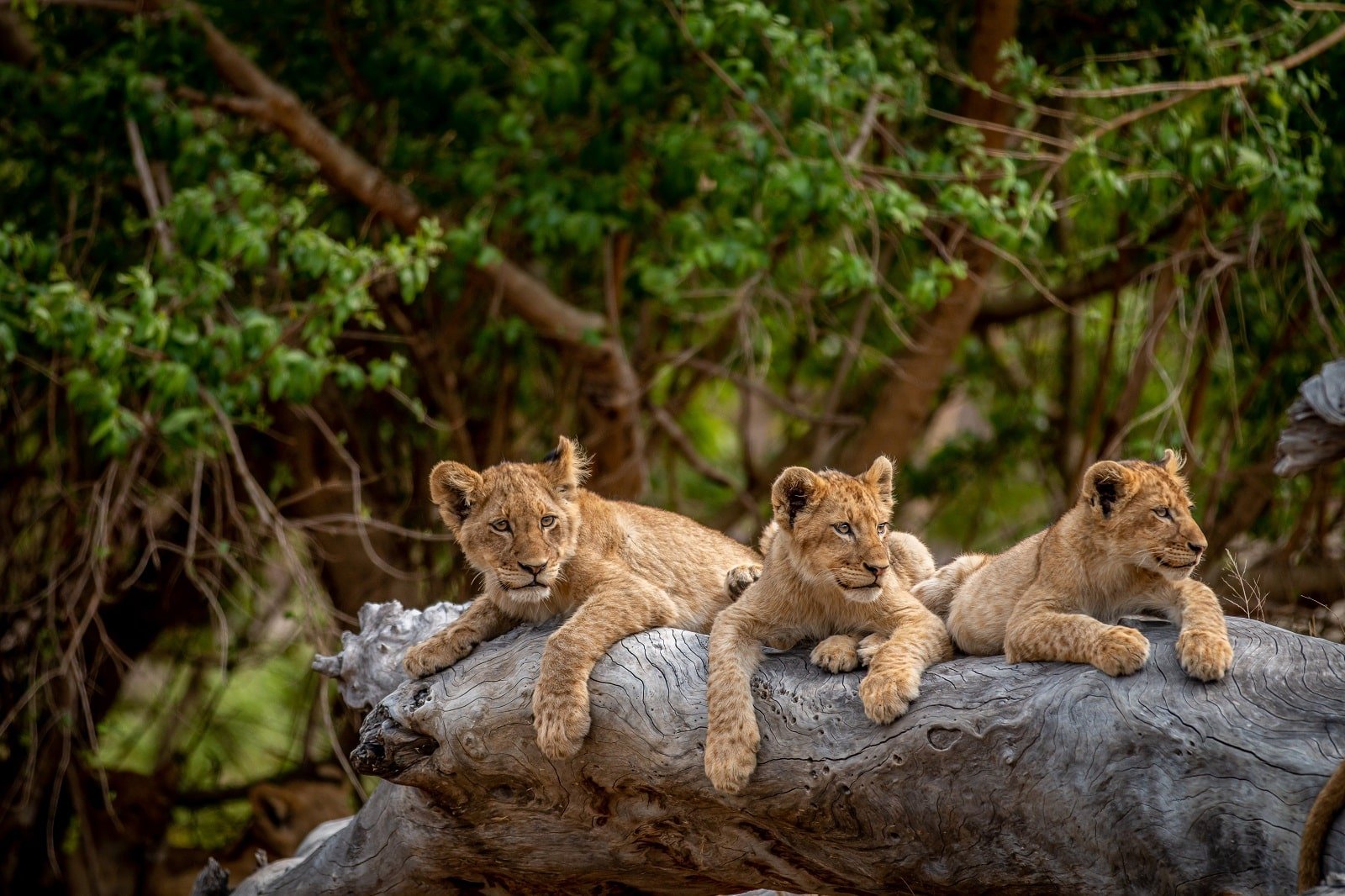
Kruger National Park, South Africa
Kruger National Park offers a more accessible safari experience without skimping on wildlife diversity. It’s one of the best places to self-drive, giving you the freedom to explore at your own pace. The park is home to a vast array of animals, including the Big Five, and has a well-developed infrastructure, making it ideal for first-time safari-goers. Stay in one of the park’s private lodges for a more secluded experience and expert-led game drives.
Insider’s Tip: Stay in one of the park’s private lodges for exclusive game drives.
When To Travel: May to September for dry season game viewing.
How To Get There: Fly to Johannesburg, drive to Kruger, or take a local flight to nearby airports.

Chobe National Park, Botswana
Chobe National Park is renowned for its large elephant population and river safaris on the Chobe River. These unique water-based safaris offer a different perspective and the opportunity to see a variety of aquatic wildlife and birds. The park’s proximity to Victoria Falls makes it easy to combine your safari with one of the world’s most spectacular natural wonders. The dry season brings large concentrations of wildlife to the riverbanks, making for exceptional game viewing.
Insider’s Tip: Combine your visit with a trip to Victoria Falls.
When To Travel: May to October for the dry season.
How To Get There: Fly to Kasane Airport or drive from Victoria Falls or Livingstone.
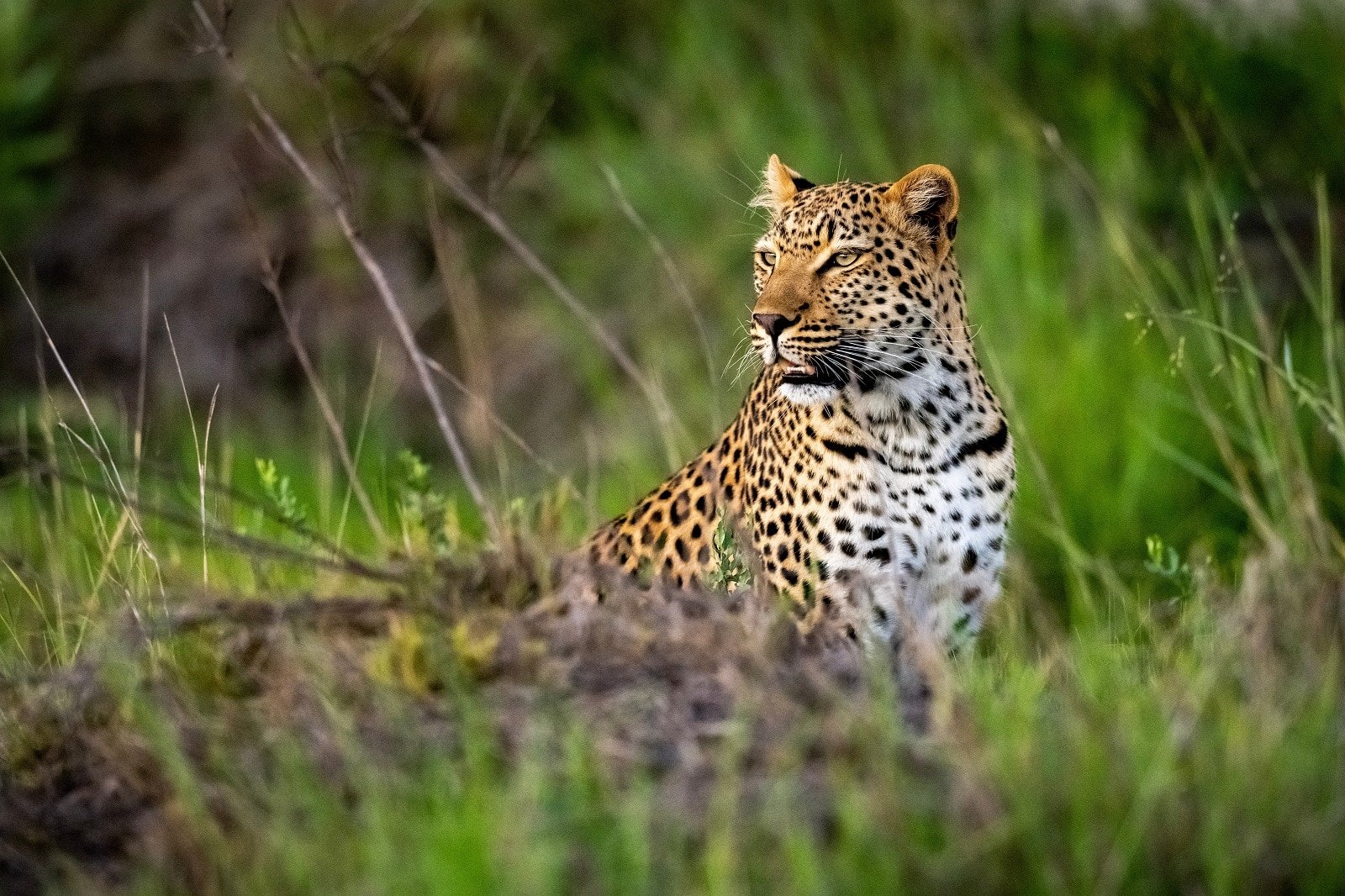
Okavango Delta, Botswana
The Okavango Delta is a unique wetland within a desert, offering an unparalleled safari experience. The annual flooding of the delta creates a lush habitat for a diverse array of wildlife. Exploring the delta by mokoro, a traditional dugout canoe, is a serene and intimate way to experience this unique ecosystem. Staying in a bush camp on one of the delta’s islands provides an immersive wilderness experience.
Insider’s Tip: Book a bush camp on one of the delta’s islands.
When To Travel: July to October for the flood season.
How To Get There: Fly to Maun Airport, then take a charter flight to the delta.
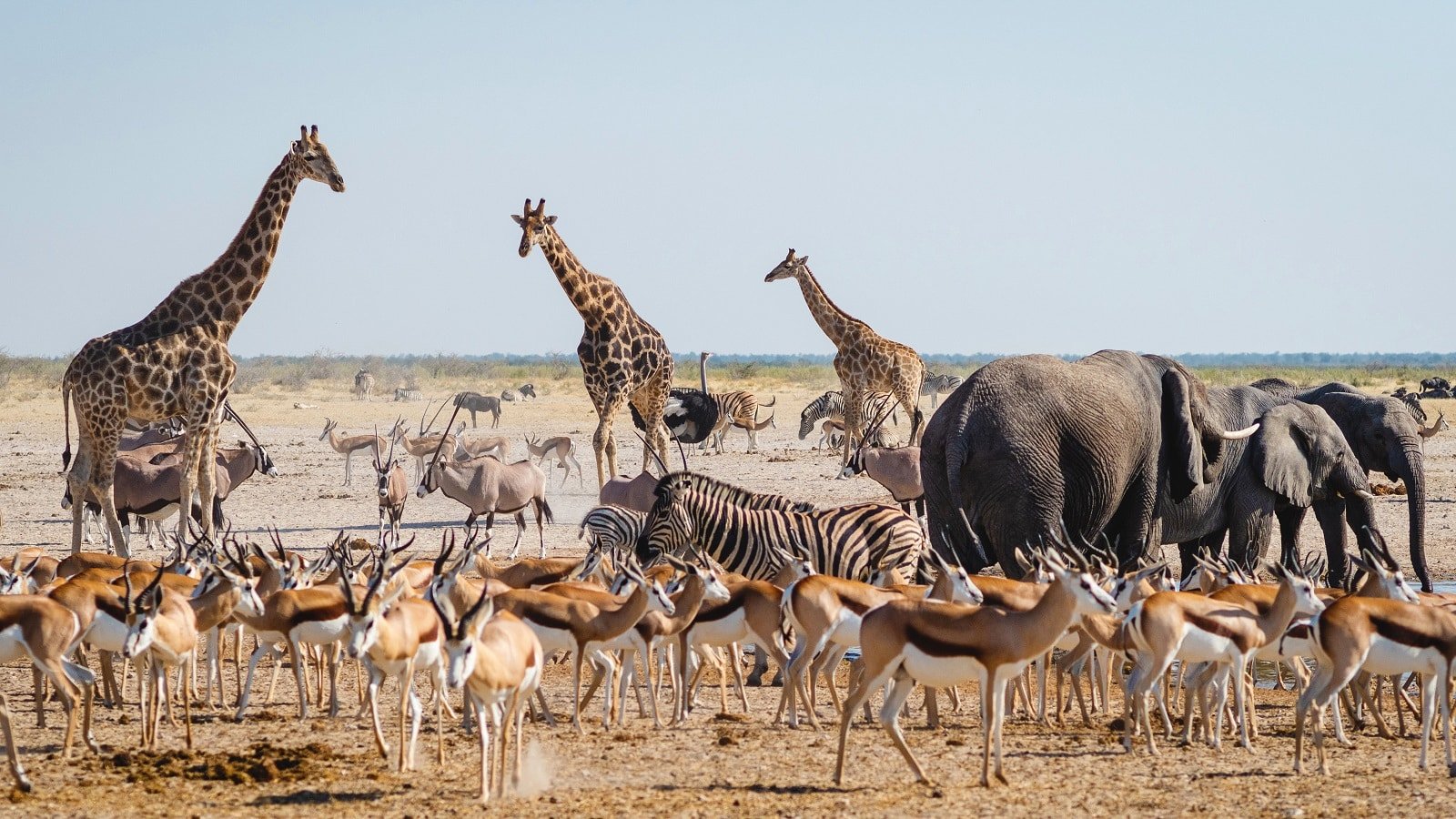
Etosha National Park, Namibia
Etosha National Park is centered around the vast Etosha Salt Pan, providing a unique backdrop for wildlife viewing. The park’s numerous waterholes attract a variety of animals, particularly during the dry season, making it an excellent location for photographers. Night-time game viewing at the waterholes offers a chance to see nocturnal species and unique animal behaviors not typically observed during the day.
Insider’s Tip: Stay inside the park for night-time waterhole viewing.
How To Get There: Fly to Windhoek, then drive or take a local flight to Etosha.
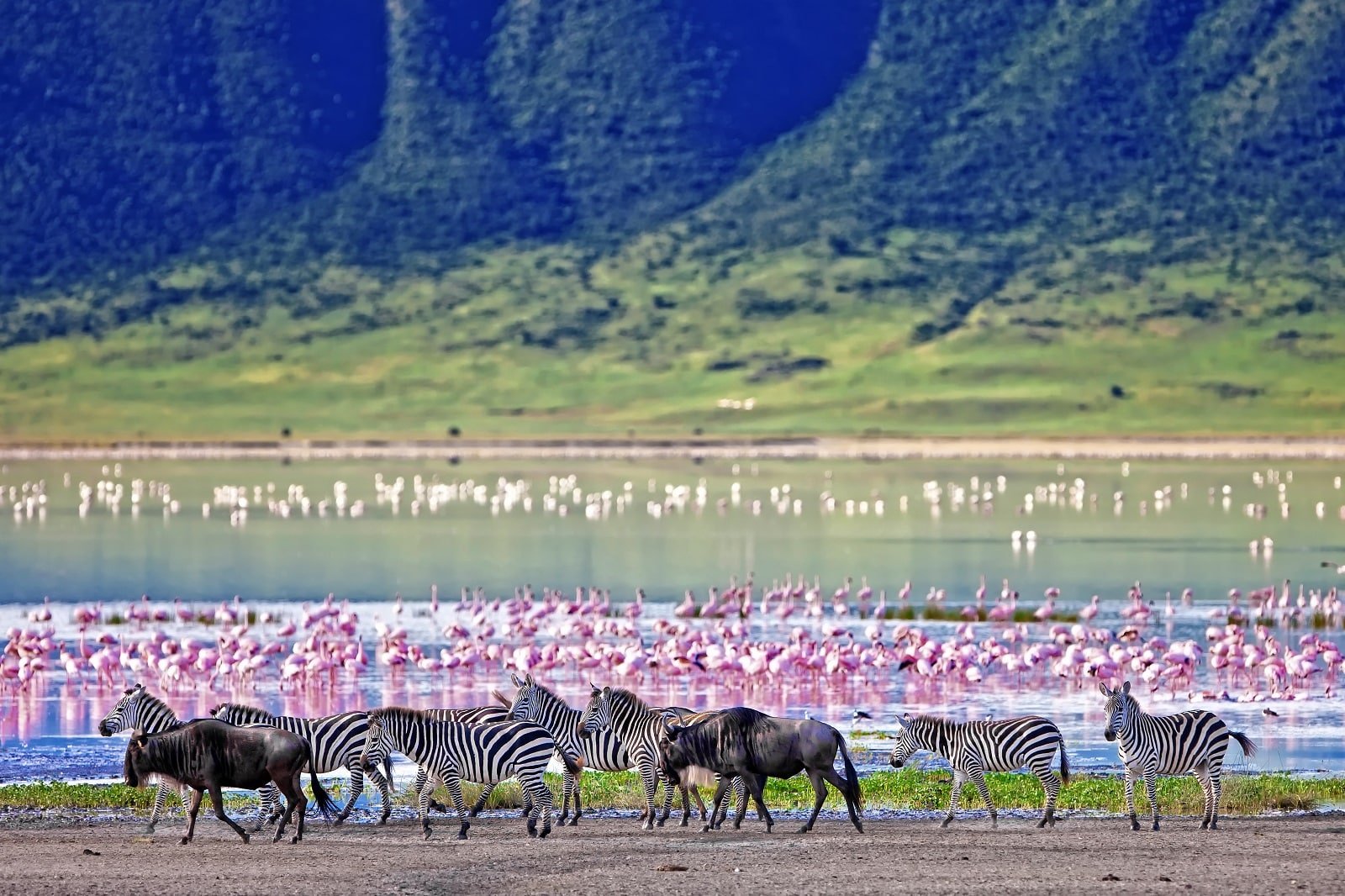
Ngorongoro Crater, Tanzania
The Ngorongoro Crater offers a once-in-a-lifetime safari experience. As you descend into the world’s largest inactive, intact, and unfilled volcanic caldera, you’ll find an abundance of wildlife in this natural amphitheater. The crater floor is home to over 25,000 animals, including the endangered black rhino. Early morning visits allow for fewer crowds and more active wildlife.
Insider’s Tip: Visit the crater early in the morning to avoid crowds.
When To Travel: June to September for cooler weather and optimal wildlife viewing.
How To Get There: Fly to Kilimanjaro Airport, then drive or take a local flight.
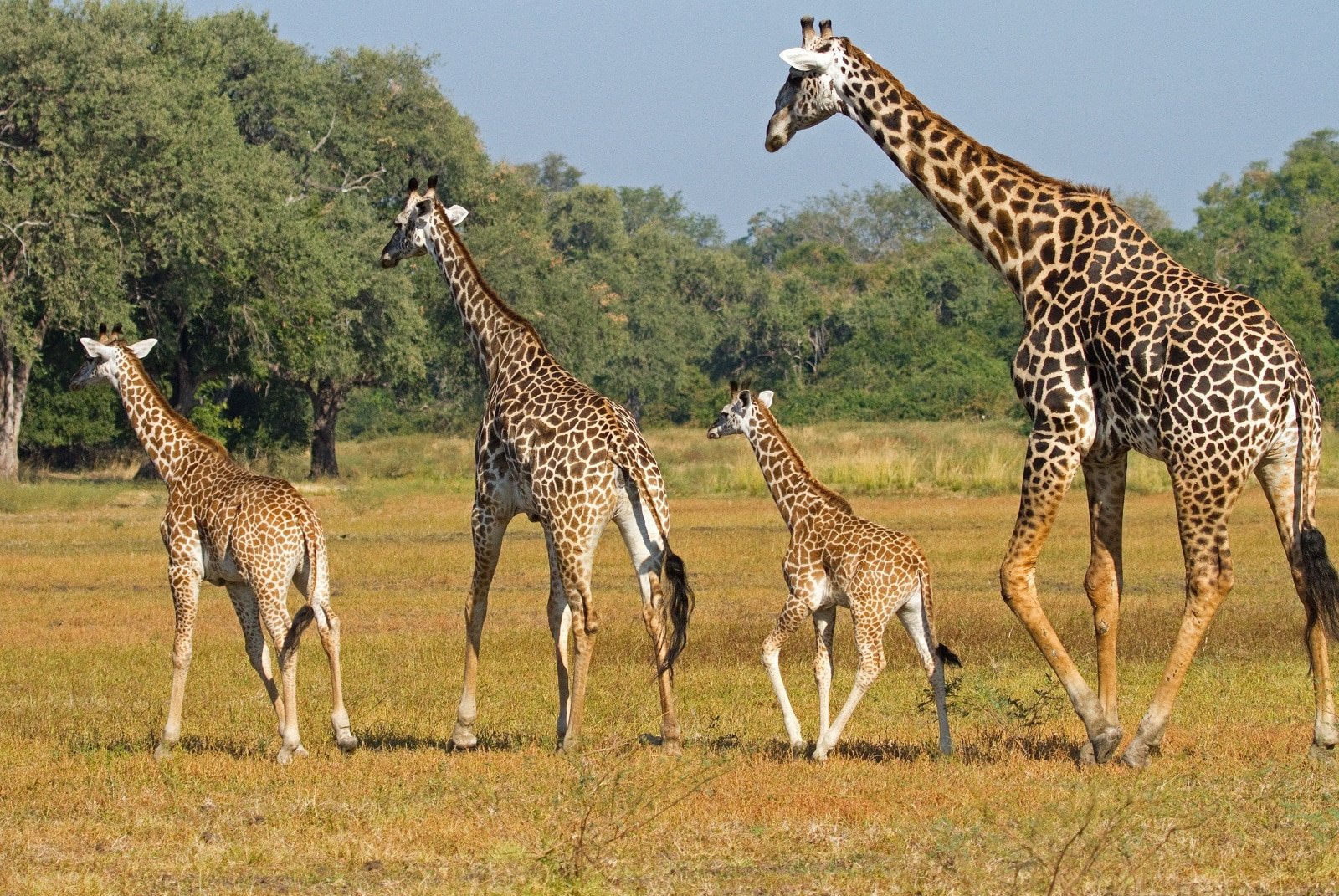
South Luangwa National Park, Zambia
South Luangwa National Park is a haven for those seeking a more adventurous safari. Known as the birthplace of the walking safari, it offers an intimate and immersive experience. The park is renowned for its high-quality guides and exceptional leopard sightings. Night drives here are especially rewarding, with chances to see nocturnal animals like genets, civets, and bush babies.
Insider’s Tip: Try a night drive for a chance to see nocturnal animals.
When To Travel: July to October for the dry season.
How To Get There: Fly to Lusaka, then take a local flight to Mfuwe Airport.
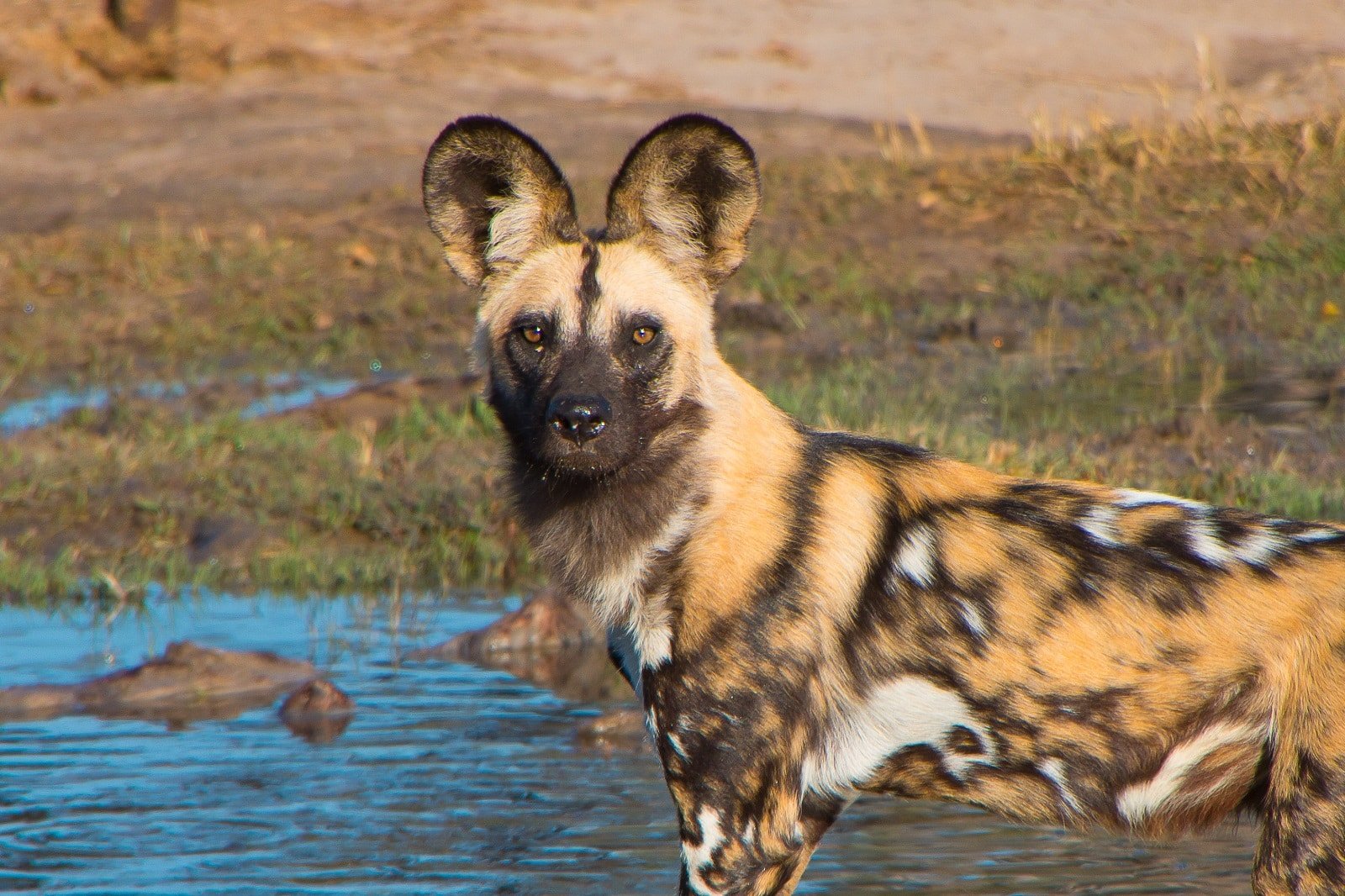
Hwange National Park, Zimbabwe
Hwange National Park, the largest in Zimbabwe, is known for its vast elephant herds and diverse landscapes ranging from desert sands to forests. It’s also one of the best places to see African wild dogs. The park’s numerous waterholes are magnets for wildlife, especially during the dry season, offering superb game viewing opportunities.
Insider’s Tip: Visit the park’s waterholes for excellent game viewing.
How To Get There: Fly to Victoria Falls, then drive to Hwange.
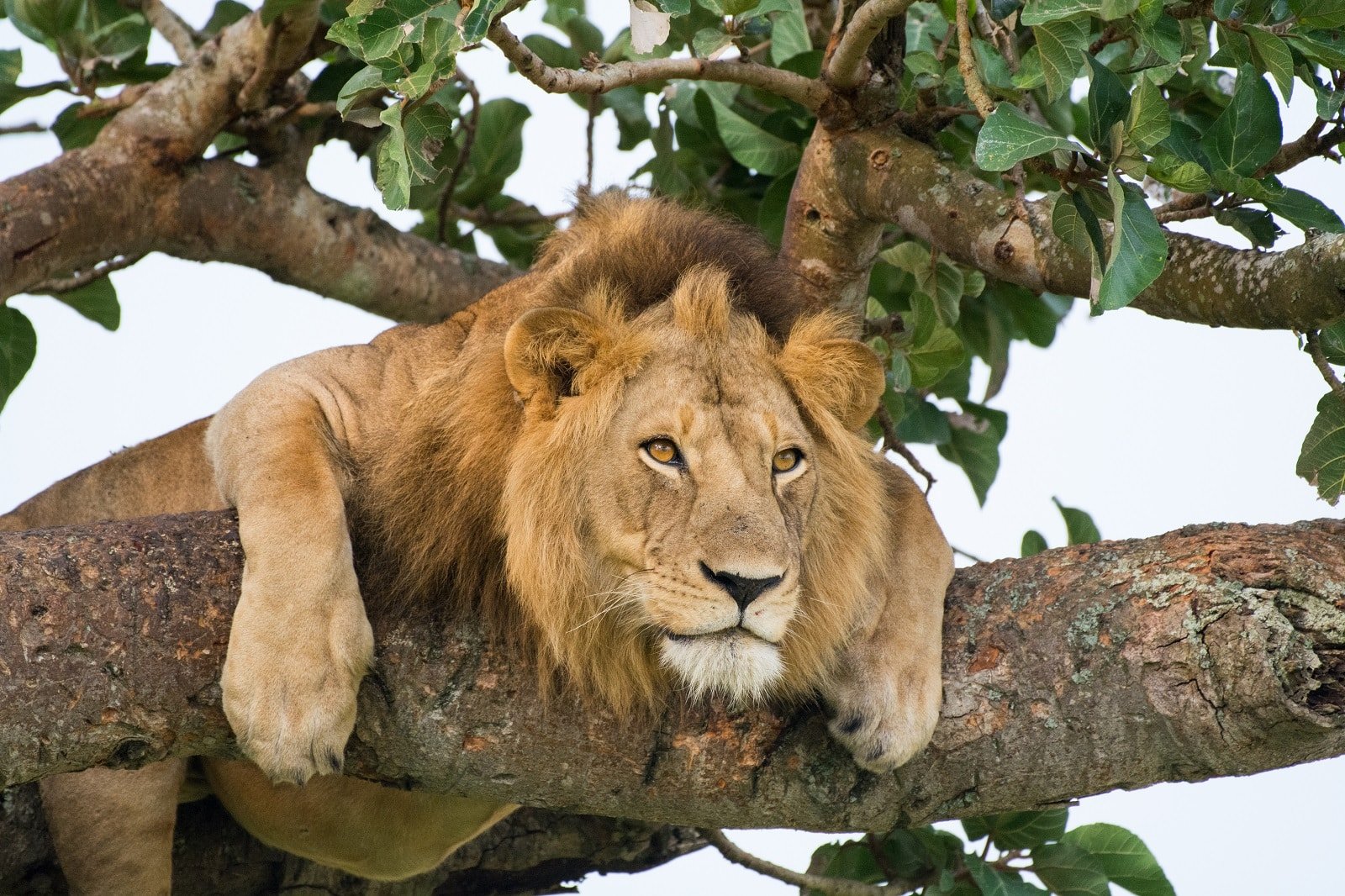
Queen Elizabeth National Park, Uganda
Queen Elizabeth National Park offers a diverse safari experience, with landscapes including savannas, wetlands, and forests. It’s an excellent location for seeing tree-climbing lions and various primates, including chimpanzees. A boat trip on the Kazinga Channel is a must, providing close encounters with hippos, crocodiles, and a variety of water birds.
Insider’s Tip: Take a boat trip on the Kazinga Channel to see hippos and crocodiles.
When To Travel: January to February and June to July for dry weather.
How To Get There: Fly to Entebbe, then drive to the park or take a local flight.
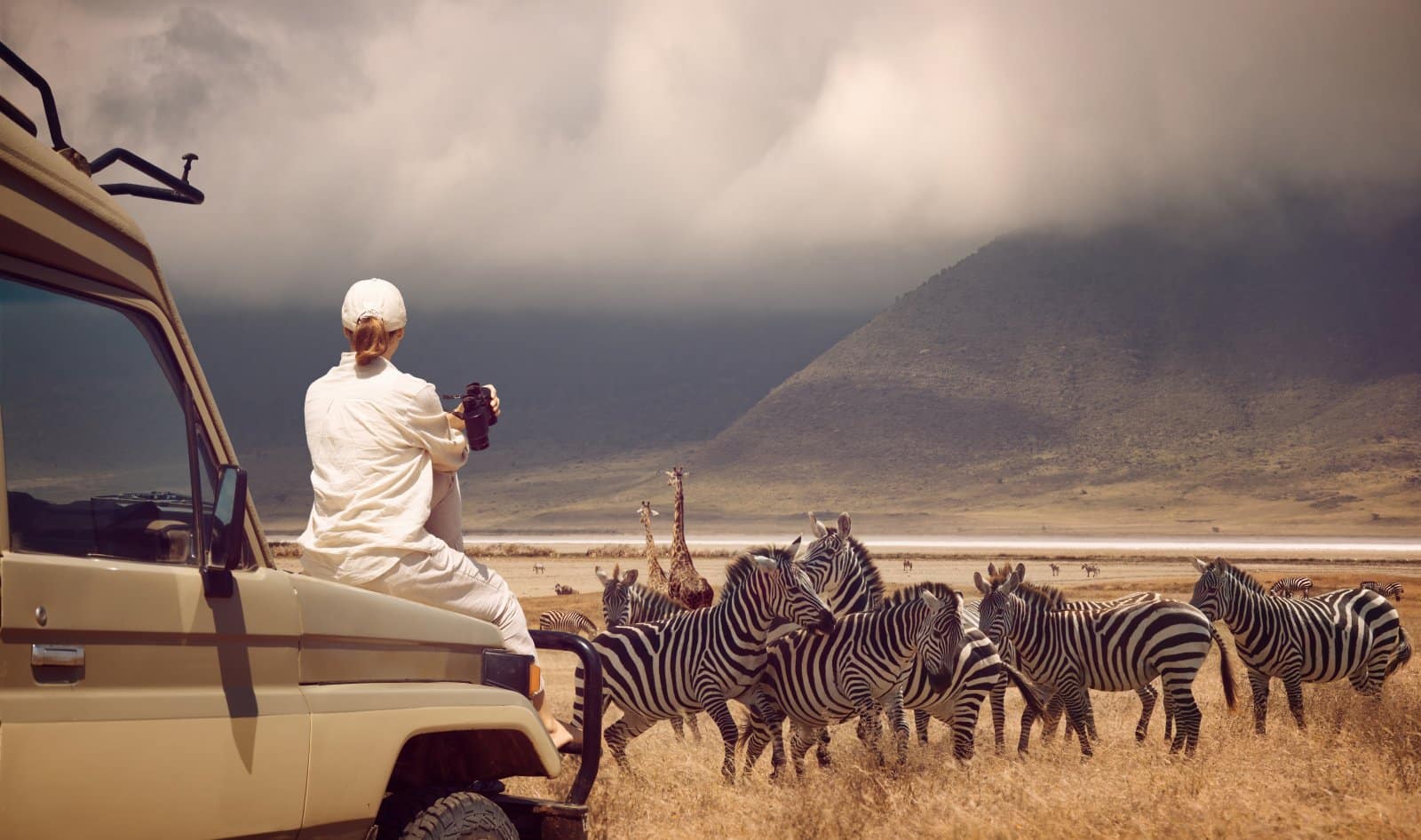
The Bottom Line
Your African safari adventure awaits, with each destination offering a unique window into the continent’s incredible wildlife and landscapes. Whether you’re floating down the Okavango Delta, witnessing the Great Migration in the Serengeti, or walking among the wildlife in South Luangwa, these experiences will leave you with memories to last a lifetime. Choose your destination based on the wildlife you want to see and the type of safari experience you’re after. Get ready for an adventure that will bring you face-to-face with the wonders of the African wild.
More Articles Like This…
Barcelona: Discover the Top 10 Beach Clubs
2024 Global City Travel Guide – Your Passport to the World’s Top Destination Cities
Exploring Khao Yai 2024 – A Hidden Gem of Thailand
The post A Guide to the 10 Best Safari Experiences in Africa republished on Passing Thru with permission from The Green Voyage .
Featured Image Credit: Shutterstock / Thomas Retterath.
For transparency, this content was partly developed with AI assistance and carefully curated by an experienced editor to be informative and ensure accuracy.
More for You
Alexandria Ocasio-Cortez Rips Democrat's 'Shameful' Post on Bernie Sanders
30 food items that you might not know are banned in America
If you and your partner use any of these 5 phrases regularly, your relationship is stronger than most
Arsenal kit 2024-25: Why Gunners are replacing club crest with cannon
We Ordered 7 Fast-Food Breakfast Sandwiches to Find the Best One
Open-World Games With Almost No Optional Content
Trump Media CEO renews assault on ‘DJT’ short sellers — but the math doesn’t add up
Why You Should Be Putting Aluminum Foil Behind Your Router
He replaced Mickey Mantle. Now baseball's oldest living major leaguer, Art Schallock, is turning 100
20 Antique Woodworking Tools That Are Worth Big Bucks
Here’s Why There Are 10 Hot Dogs in a Pack, But Only 8 Buns
If you use any of these 4 phrases you have higher emotional intelligence than most
Flame-throwing robot dog that can torch anything in its path goes on sale
Remove A Tree Stump With One Common Household Ingredient
Key NATO ally shocks with its 'single largest' pledge to Ukraine: 'They need our support'
Tesla announces mass layoffs across three US states
Persona: Party Members with the Lowest Magic
The #1 restaurant chain in America, according to diners—and see the rest of the top 50
Harvard psychologist: If you say 'yes' to any of these 9 questions, you're 'more emotionally secure than most'
Strawberry-Rhubarb Breakfast Cake Will Make Everyone Spring Out Of Bed
Secret Murders Alleged at Tourist Hotspot for Luxury Safaris
A wildlife tourism project has lost its funding after being tied to several extrajudicial killings, disappearances, and sexual assaults.

Shannon Vavra
National Security Reporter
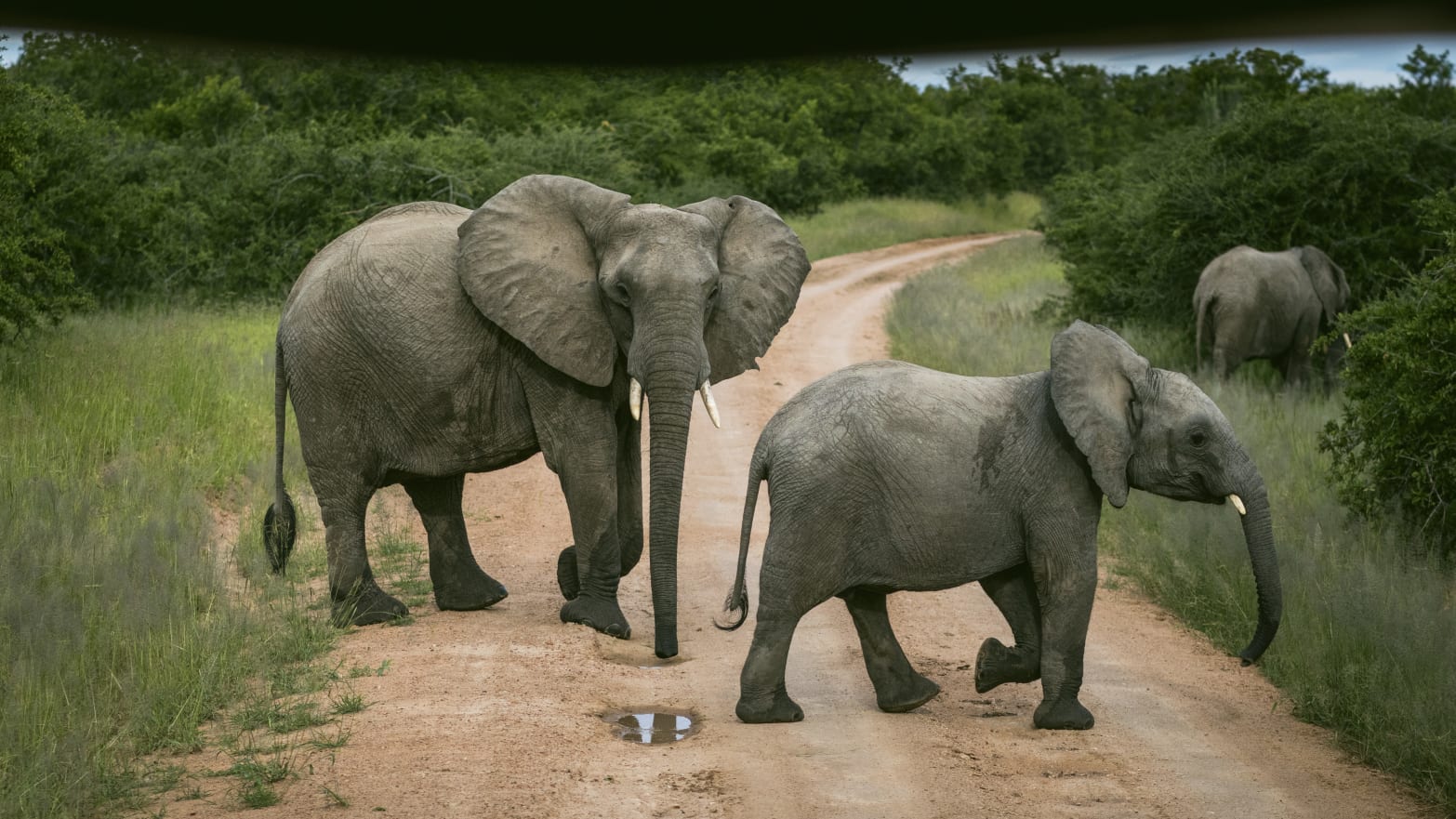
Christopher Loh
The World Bank has decided to pull funding for a controversial tourism project following accusations it has led to extrajudicial killings, disappearances, and the sexual abuse of local villagers in Tanzania.
Launched in 2017, the program aimed to improve the management of natural resources and tourism in Southern Tanzania, including Ruaha National Park (RUNAPA), which has been tied to a cascade of human rights abuses , according to the Oakland Institute, a California-based advocacy group.
The World Bank has already disbursed $100 million of the $150 million project, known as REGROW, according to The Oakland Institute.
The Tanzanian government plans included work aimed at nearly doubling the size of the park, the largest protected wildlife area in the country, from one million to over two million hectares. But the expansion plans have left the local villagers high and dry: The plan has included Tanzanian government efforts to forcibly evict over 21,000 people to expand the park, without providing villagers compensation or other land, according to The Oakland Institute.
“Communities report that park rangers, receiving funding through REGROW, have been implicated in murders of several villagers and numerous instances of violence since the project began,” according to a recent report published by the institute. “The World Bank, however, has turned a blind eye to the horrific abuses unleashed on the communities by choosing to not enforce its own safeguards.”
Even as local villagers have pushed back on the human rights abuses, luxury tourist options for visiting the park abound. From sunrise hot air balloon tours over the park with champagne celebrations, to camps with private lodges and spa attractions like pools, and massages—visitors from around the globe have continued to tour the park despite the allegations.
Wildlife reserves have continued to be a boon for Tanzania, pulling in billions of dollars of tourism revenue annually. But the ongoing issues with the REGROW project have raised questions about the rights of local villagers living near tourist attractions.
“This should be a wakeup call for the Bank’s leadership in Washington, D.C.—you cannot continue to ignore the voices of the people on the ground who are struggling to survive as a result of your so-called ‘development’ projects,” Anuradha Mittal, Executive Director of the Oakland Institute said.
The World Bank told The Daily Beast it had suspended further funding for the project after receiving information that “suggests breaches of our policies in the implementation of the REGROW project.”
“The World Bank is deeply concerned about the allegations of abuse and injustice related to the Resilient Natural Resources Management for Tourism and Growth (REGROW) project in Tanzania,” a World Bank spokesperson told The Daily Beast, adding that the World Bank will work with the authorities moving forward to try to ensure the project can “improve the lives of Tanzanians.”
The backpedaling from the World Bank comes after years of the Oakland Institute pushing against the project. Villagers have also taken steps to protest the project, and have on multiple occasions turned to the legal system for recourse, without any success. Last year villagers filed a case in the East African Court of Justice against the expansion of the park as well.
The Oakland Institute called the decision “long overdue.”
“It sends a resounding message to the Tanzanian government that there are consequences for its rampant rights abuses taking place across the country to boost tourism,” Mittal said. “The days of impunity are finally coming to an end.”
Reparations should be provided to the villagers who have been victims of the human rights abuses, The Oakland Institute said.
“Moreover, villagers who have been victims of gross human rights violations and crippling livelihood restrictions must receive adequate, effective, and prompt reparations to ensure justice and help redress the harm they have endured,” the Oakland Institute said in a statement.
The World Bank did not answer questions about whether it will participate in providing reparations to the affected villagers.
Got a tip? Send it to The Daily Beast here .
READ THIS LIST
- India Today
- Business Today
- Reader’s Digest
- Harper's Bazaar
- Brides Today
- Cosmopolitan
- Aaj Tak Campus
- India Today Hindi
Pics: Kareena Kapoor enjoys safari with son Taimur in Tanzania
Kareena kapoor shared pictures from her latest trip to tanzania with her son taimur. the mother-son duo enjoyed jungle safari together..
Listen to Story
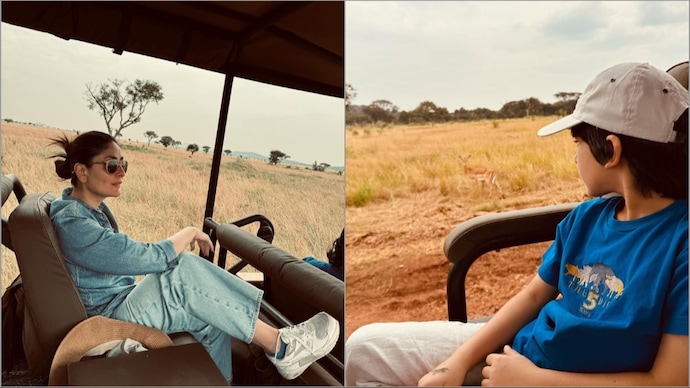
Kareena Kapoor shared pictures from her Tanzania vacation with her son TaimurAli Khan. The actor enjoyed a jungle safari with her son. The pictures are from her visit to Africa in March where she was accompanied by her husband, Saif Ali Khan, and their kids, Taimur and Jeh.
In March, Kareena Kapoor, along with her husband Saif Ali Khan and their sons Taimur Ali Khan and Jeh Ali Khan, enjoyed a peaceful vacation in Tanzania, Africa. On April 24, the actor posted a collection of photos from their tranquil retreat on Instagram.
The first pictures showed Kareena seated inside a safari vehicle, admiring the picturesque landscape. Clad in denim attire paired with white shoes. The other pictures showed Taimur enjoying vast grasslands and observing the wildlife.
“SAVANNA GIRL AND BOY, TANZANIA 2024 (sic),” she wrote.
View this post on Instagram A post shared by Kareena Kapoor Khan (@kareenakapoorkhan)

IMAGES
VIDEO
COMMENTS
My Tips for a Safari In Tanzania: Things To Know And Prepare For. Heading to Tanzania on safari is one of my favourite all-time travel experiences. I had been on safaris in South Africa and Zimbabwe but this was even more magical, enthralling and I saw more animals than I had imagined I would.
For a little background, I traveled to Tanzania in September for a seven-day safari. All advanced arrangements were made through the travel agency, African Portfolio, while everything in Tanzania was handled by Ranger Safaris — I highly recommend both. Traveling with a group of thirteen, we began and ended our safari in Arusha and explored ...
6 Tips on Where to Go and What to See. 1. Serengeti National Park: The Great Migration and Abundant Wildlife. The Serengeti National Park is the crown jewel of Tanzania's safari destinations. It is globally celebrated for the Great Migration, an annual spectacle where over a million wildebeest, zebras, and gazelles traverse its plains for fresh ...
Make sure to have your credit card handy because this is the only method of payment accepted at the gate. 3. Play Nice With the Police. This Tanzania travel tip really applies to self-drivers, but the Tanzanian police are littered across the roads of the country just waiting to hand out "tickets.".
Tanzania requires a test performed a maximum of 72 hours before entering the country. These are the rules at the time of writing, which may change in the meantime. Therefore, if the test is positive, the vacation is lost. Insurance would help you recover the money spent.
Going on safari is an absolutely incredible experience and truly a trip of a lifetime. This travel guide will help you in planning your perfect safari in Tanzania with the hopes of seeing the big 5!. During your 7 day African safari you will visit Serengeti National Park, the Ngorogoro Crater, Arusha Tanzania and more!
In this blog post, we'll give you 7 tips that will make your experience as smooth as possible! 1. Learn what to pack for a safari. Going on safari in Tanzania is a once-in-a-lifetime opportunity, and the best way to make sure you have the most amazing experience is to pack properly! The key to a great safari experience is packing the right ...
A Beginner's Safari Guide to Tanzania. Estimated reading time: 11 minutes. A good travel guide doesn't replace the advice and assistance from one of our Africa Safari Experts, but it does equip you to be an active and informed decision-maker in planning your Tanzania safari. In this guide, we focus on Tanzania safari tips and insights that ...
By Josh Hewitt June 7, 2021 ( 2 ) LAST UPDATED: 3/1/24 - The Ultimate Tanzania Safari Itinerary. Ever since Doctor David Livingstone ventured into the interior of Africa in search of the origins of the Nile River, people from around the world have been curious about the animals and landscapes on this beautiful continent.
Tanzania safari is a trully unforgetable expirience. For more inspirational travel tips check our inspirational guidebook, The Rough Guide to the 100 Best Places on Earth 2022 . We may earn commission when you click on links in this article, but this doesn't influence our editorial standards.
Also remember Tanzania Safaris Packing List For Kids - Essential Gear For A Wildlife Adventure like Light thermal vest. Long-sleeved t-shirts, A warm jacket that is wind-proof, Jeans or similar long pants, Warm socks. Comfortable bush shoes (trainers or hiking boots are good), Gloves. T-shirts Toiletries.
Hand sanitizer - Very useful during the day, when you will be traveling with the jeep. Earplugs - there are a lot of noises on the safari at night. Sunblock - the sun is strong and the days are long, so I recommend SPF 50+. Insect repellent - if you are going in the summer. 6.
This guide will offer tips on what to expect and what to consider when putting your safari plan together. Let's get started. Safari in Tanzania - What to Expect. To be clear, a safari is nothing like a trip to your local zoo. On a Tanzanian safari, you enter the wild habitat of lions and elephants, zebras and giraffes, rhinos, and buffalos.
Visit Tanzania Wildlife Safari Tours. 1. Packing Advice. Tanzania's locals have strong religious beliefs, so certain etiquettes need to be followed both in Tanzania and Zanzibar. For one, visitors have to dress modestly so pack some long-sleeved shirts and long trousers. These are also good to wear to avoid mosquito bites.
Lions, leopards, rhinos, elephants, giraffe, buffalo, wildebeest, zebra, Thomson's gazelle…the list goes on and on, with Tanzania home to a stunning diversity of life.. Most impressive is the abundance.On a multi-day safari you don't encounter a single lion but many different prides. Sometimes you're confronted by herds of zebra numbering over 5000 individuals.
For more information, see my guide on Tanzania safari costs. Tanzania Safari Tips & Tricks - Avoiding my Mistakes. 1. Flights usually arrive late - I would strongly recommend that you arrange for your safari company to pick you up in their safari truck or use a high-end taxi service. As with most African countries, driving at night is best ...
8 "Less Is More" Rule In Packing. When it comes to packing on a safari adventure, less is more. Don't bring too much clothing for a safari expedition; there are plenty of opportunities to clean everyone's clothes as people move. Do not even forget that everybody on the truck has limited luggage space, and there is nothing quite like packing all ...
Itinerary #1: Tanzania Safari Highlights: Ngorongoro & Serengeti. This classic safari adventure is an excellent introduction to Tanzania's wildlife-filled savanna landscapes and features four game drives and two memorable luxury accommodations. While based within the Ngorongoro Conservation Area, visit a Maasai village and seek out the Big Five—lions, leopards, elephants, buffalo, and rhinos.
In this video I share my Tanzania Wildlife Safari Highlights and recommended must-see places and sights to visit: Serengeti National Park, Ngorongoro Conserv...
Bring soft-shell bags on your Tanzania safari. Remember keep it light, soft and simple. We recommend bringing a medium sized soft-shelled bag on your Tanzania safari and we kindly ask you to limit the weight of your luggage to 15kg, plus one piece of hand luggage. You will spend quite a bit of time in our specially adapted Toyota Land Cruisers.
The coastal strip is usually hot and humid almost year round. On Mt Kilimanjaro and Mount Meru in Tanzania temperatures can drop to below freezing point. 6. CLOTHES: On safari please pack light clothes cottons preferably. A jacket or fleece is god to pack for chilly mornings and evenings sometimes and at some high altitude places.
10 Tips for Going on a Camping Safari in Tanzania. 1. Bring a Zoom Lens or Binoculars. If you're investing in going on a camping safari in Tanzania, make sure you go on the trip prepared with the right camera. While on safari, animals will sometimes venture very close to your vehicle.
But not everyone is lucky on a safari when it comes to wildlife viewing, especially if you plan to self drive, so we've put together this list of tips and important things to know before a ...
Tipping your safari driver-guides. You may tip between USD 10 and USD 20 per traveler, per day. You may tip collectively between USD 30 to USD 40 per group, per day. For half-day safaris and tours, you may tip half the suggested range. Tips to Safari Driver-Guides are usually given at the end of the Safari when bidding farewell.
The Ngorongoro Crater offers a once-in-a-lifetime safari experience. As you descend into the world's largest inactive, intact, and unfilled volcanic caldera, you'll find an abundance of ...
Launched in 2017, the program aimed to improve the management of natural resources and tourism in Southern Tanzania, including Ruaha National Park (RUNAPA), which has been tied to a cascade of ...
In March, Kareena Kapoor, along with her husband Saif Ali Khan and their sons Taimur Ali Khan and Jeh Ali Khan, enjoyed a peaceful vacation in Tanzania, Africa. On April 24, the actor posted a collection of photos from their tranquil retreat on Instagram. The first pictures showed Kareena seated inside a safari vehicle, admiring the picturesque ...